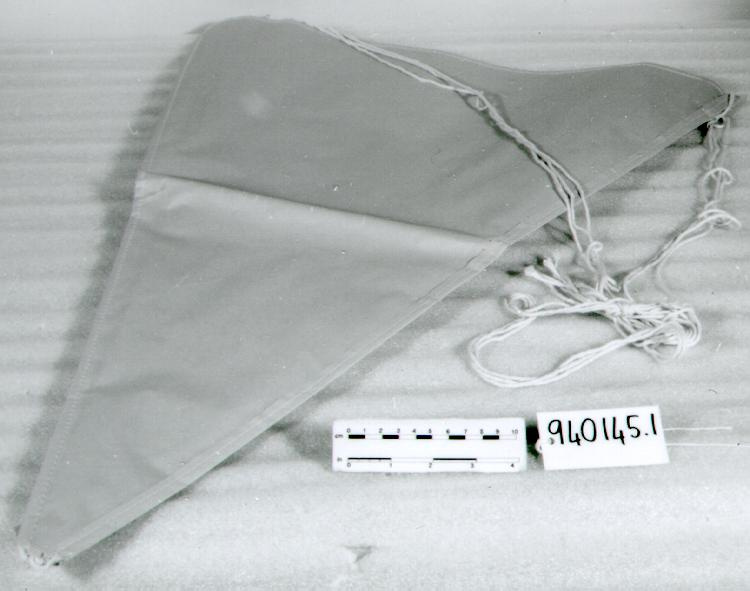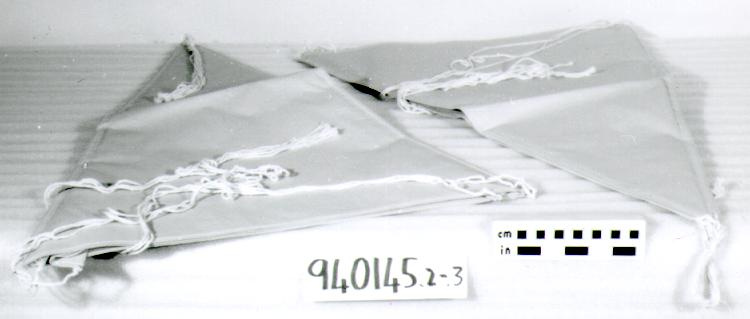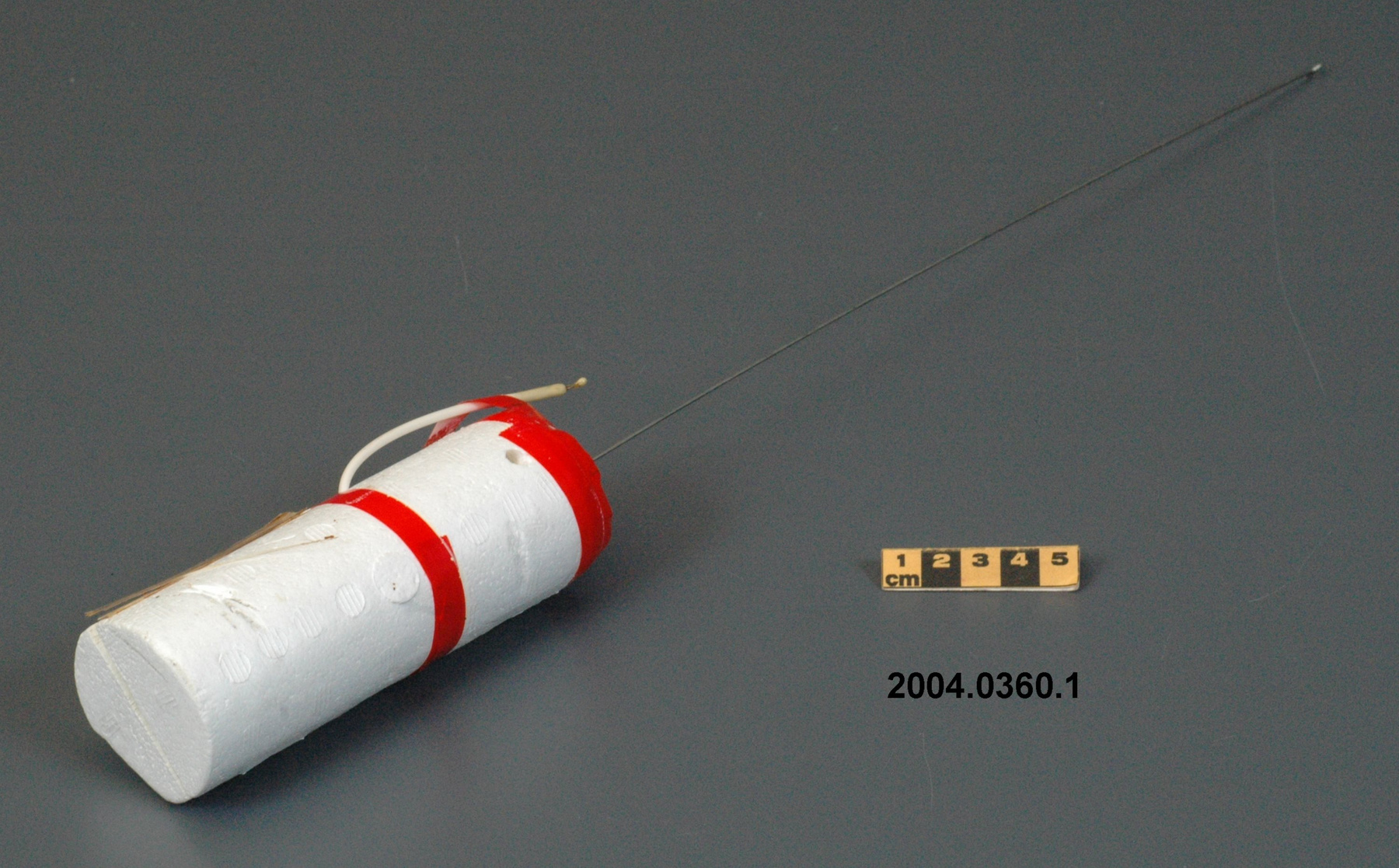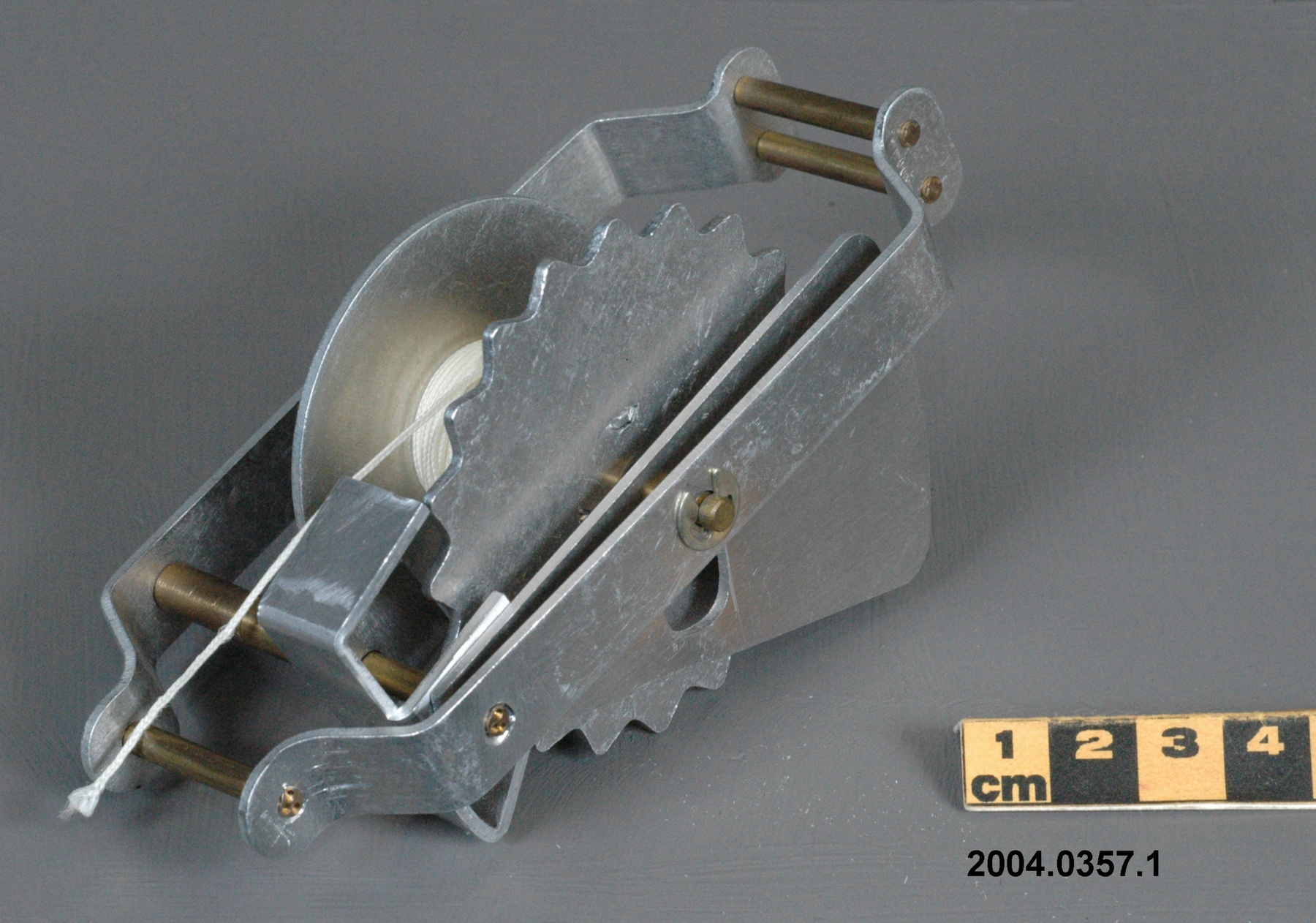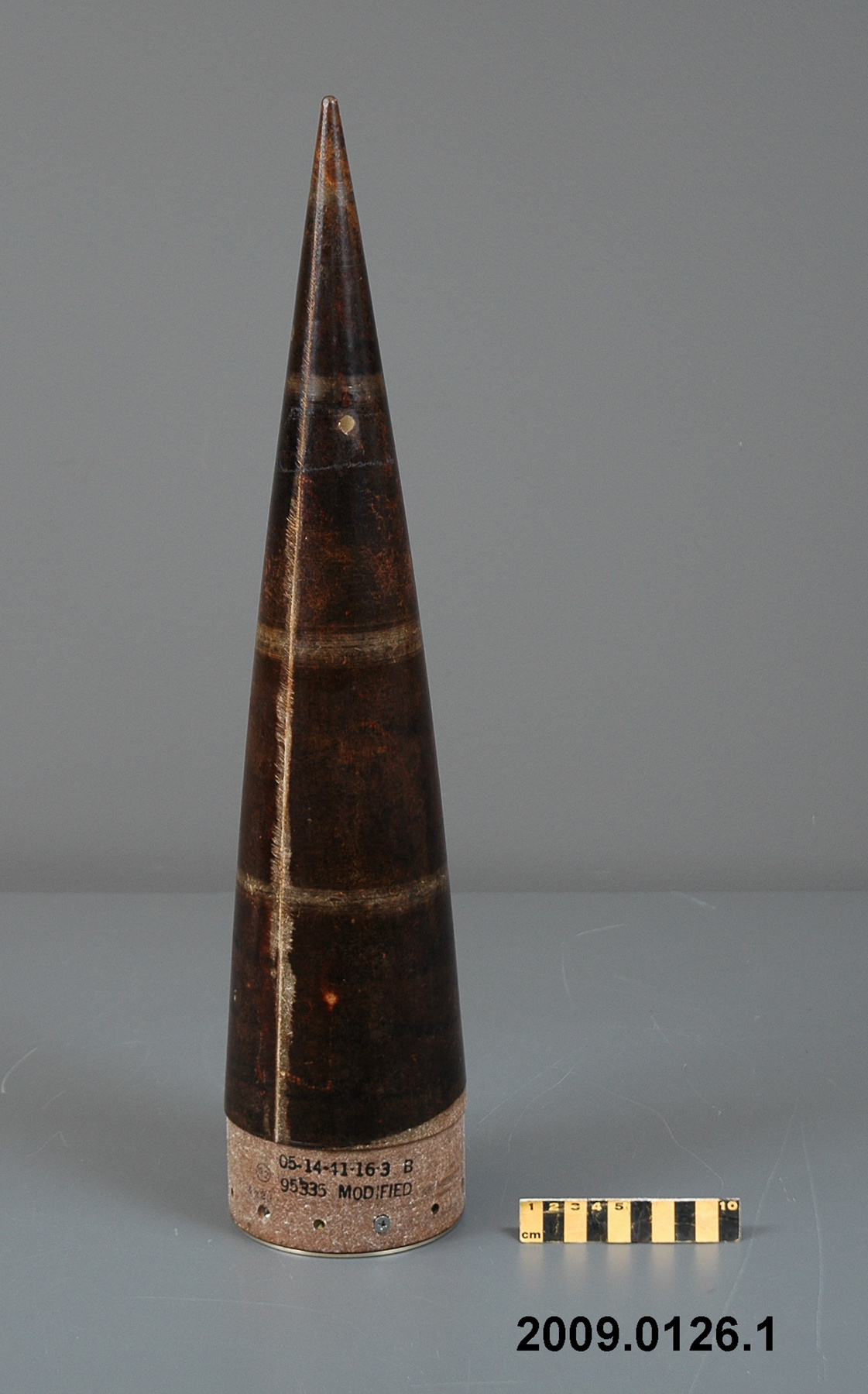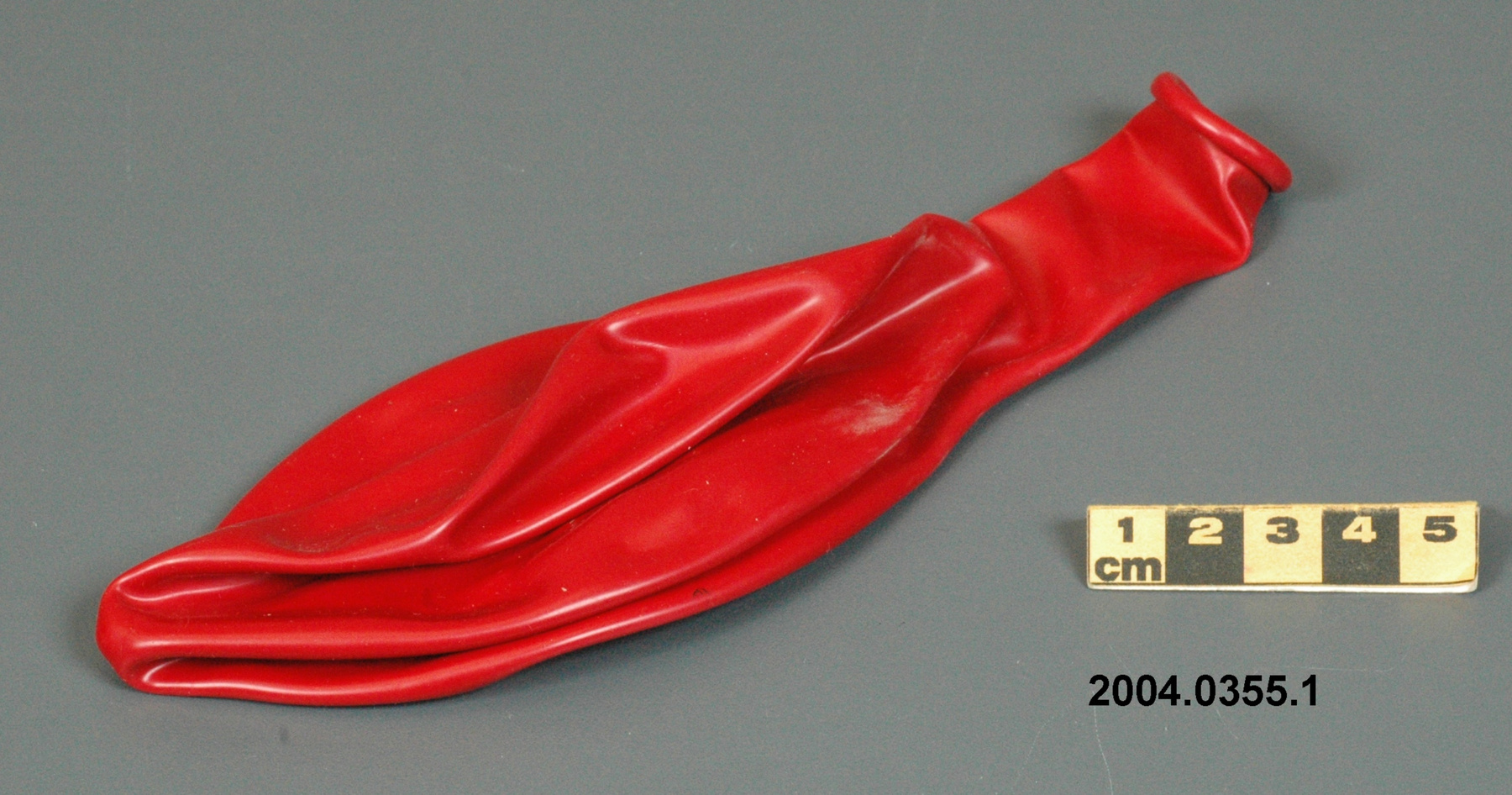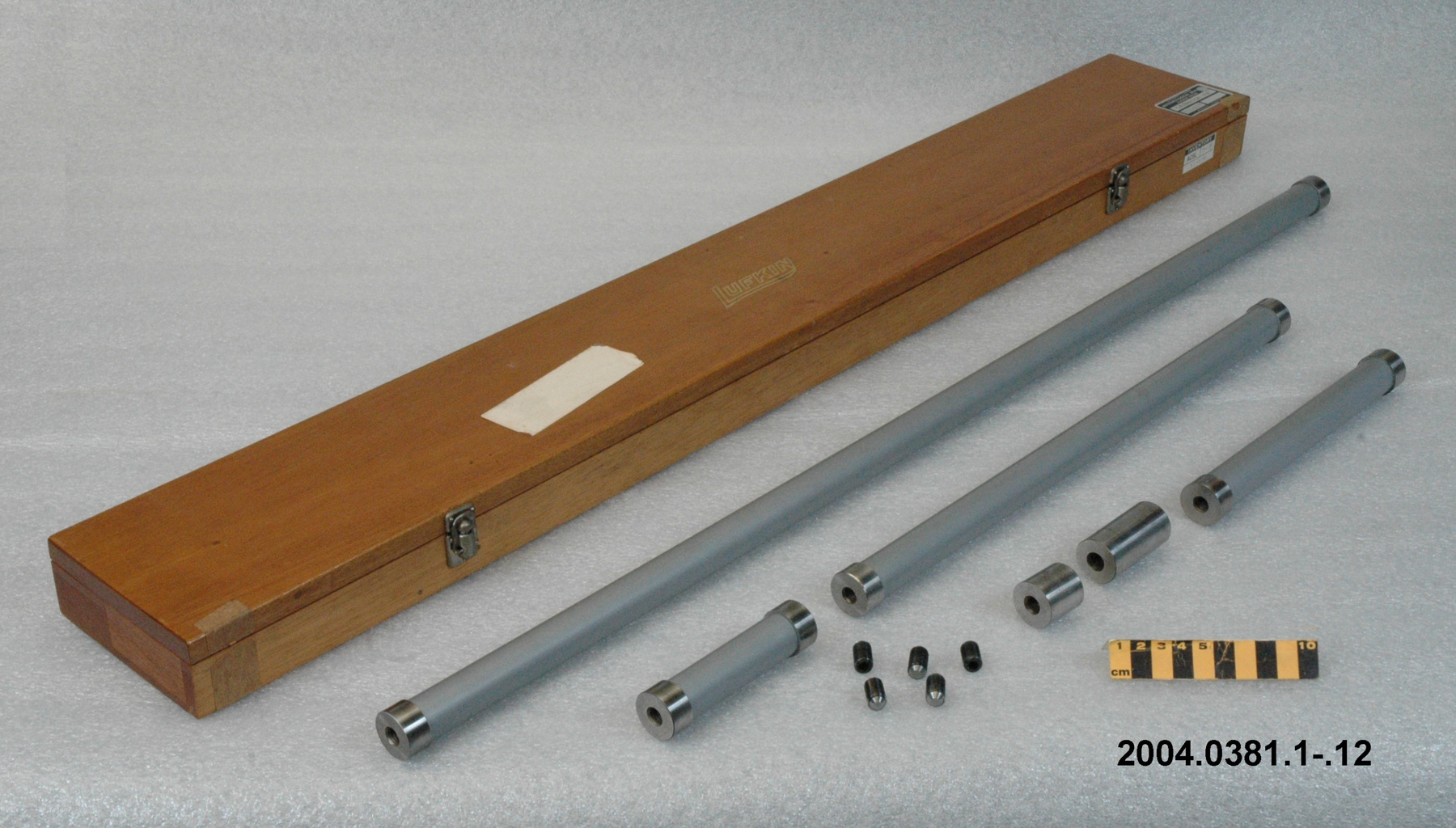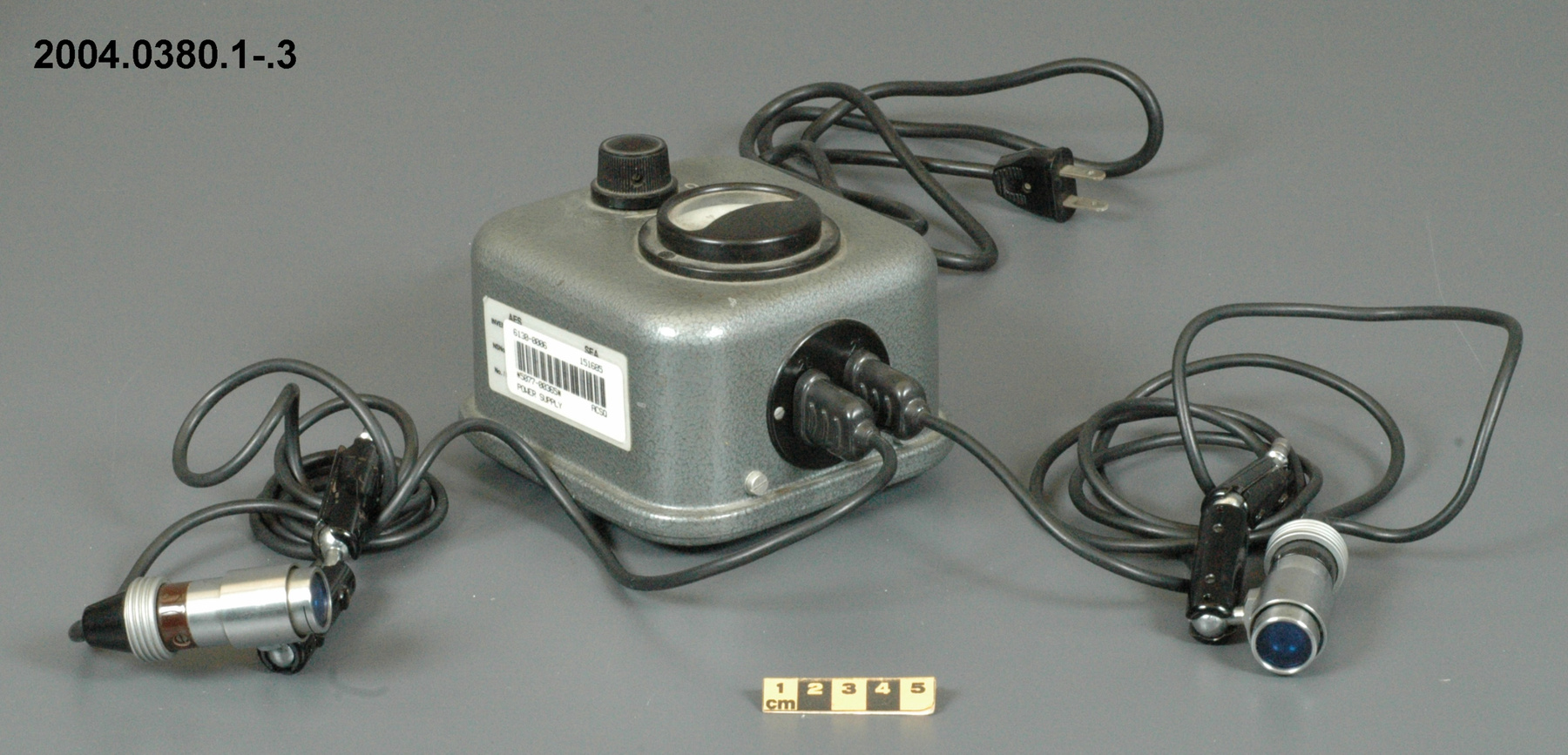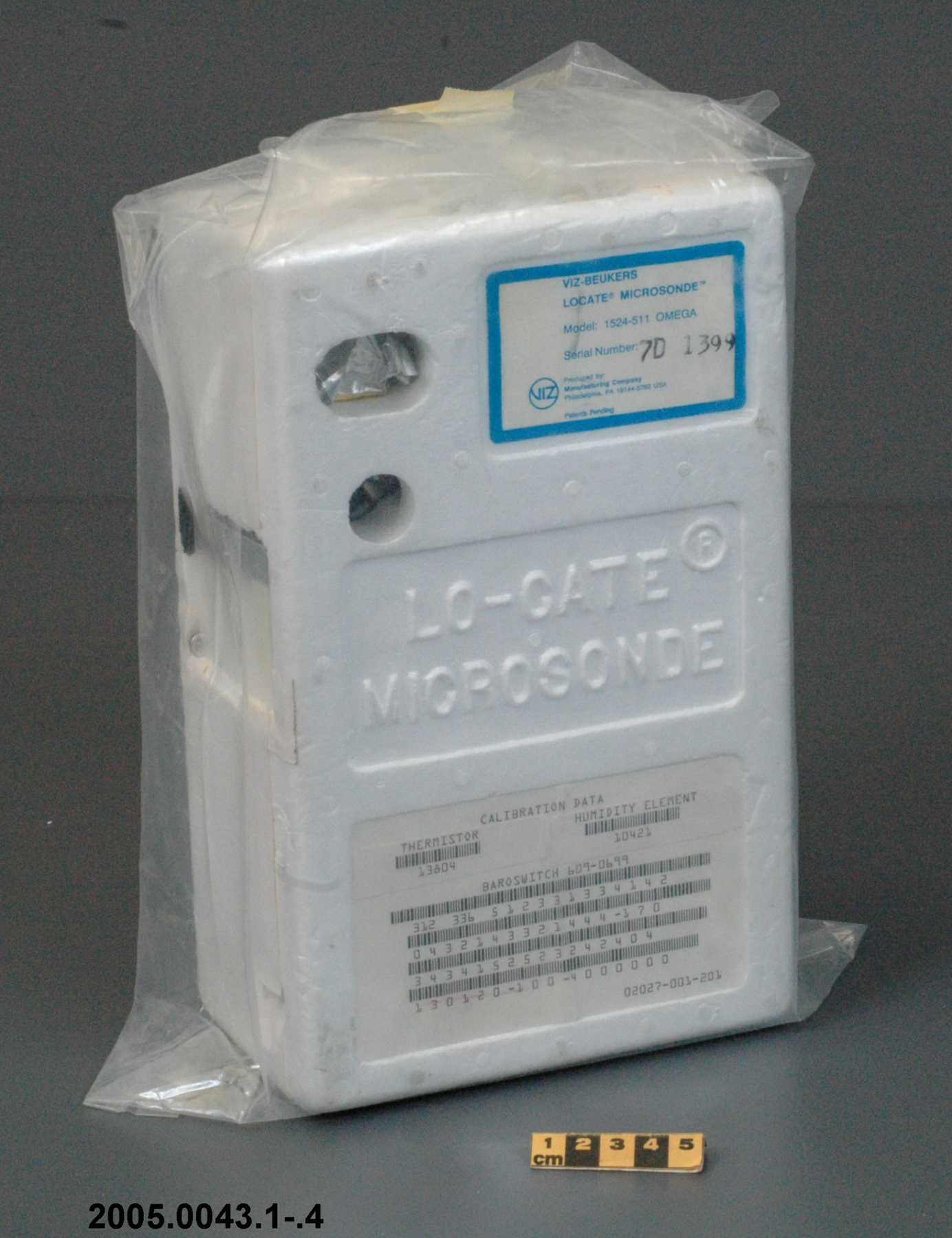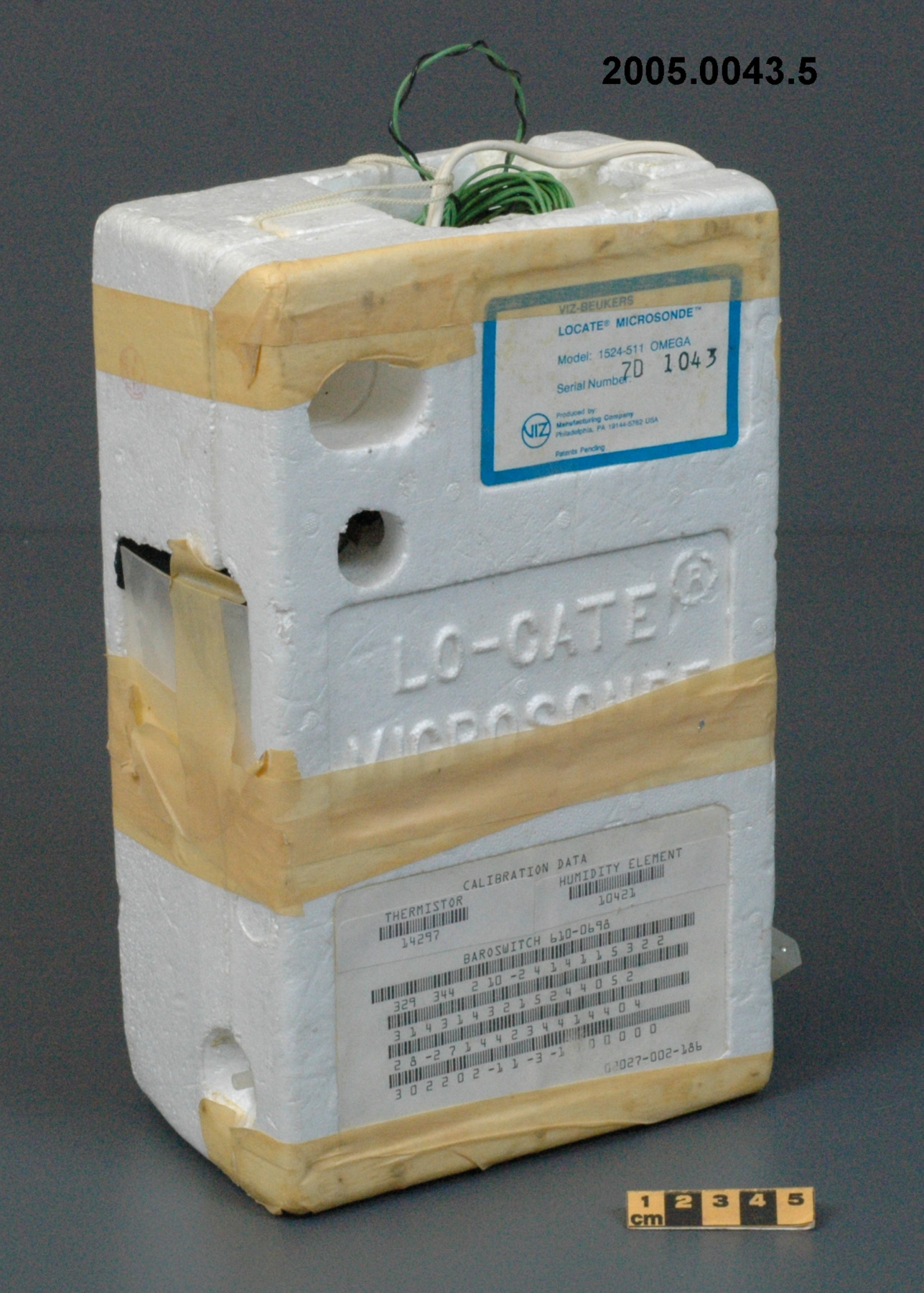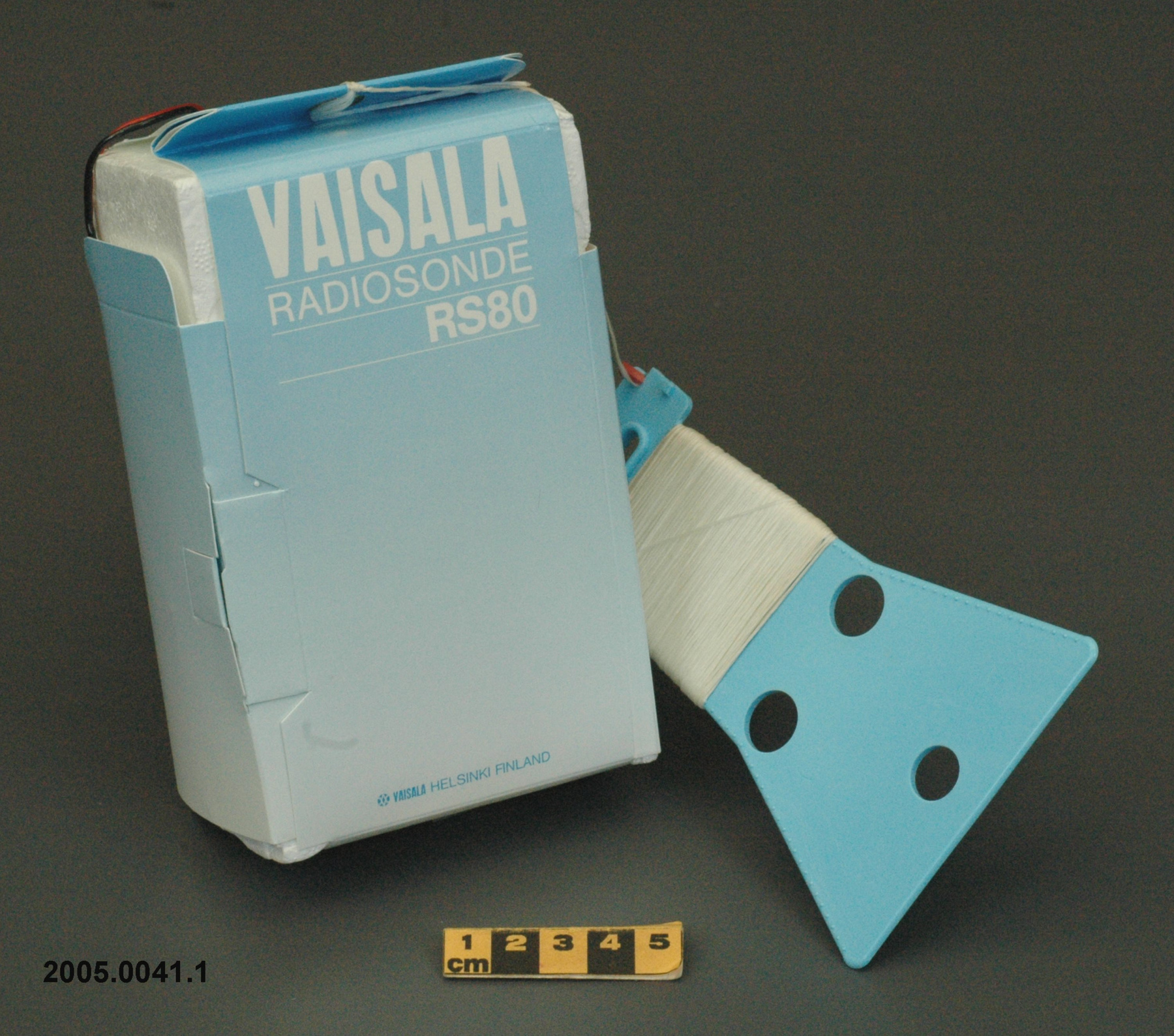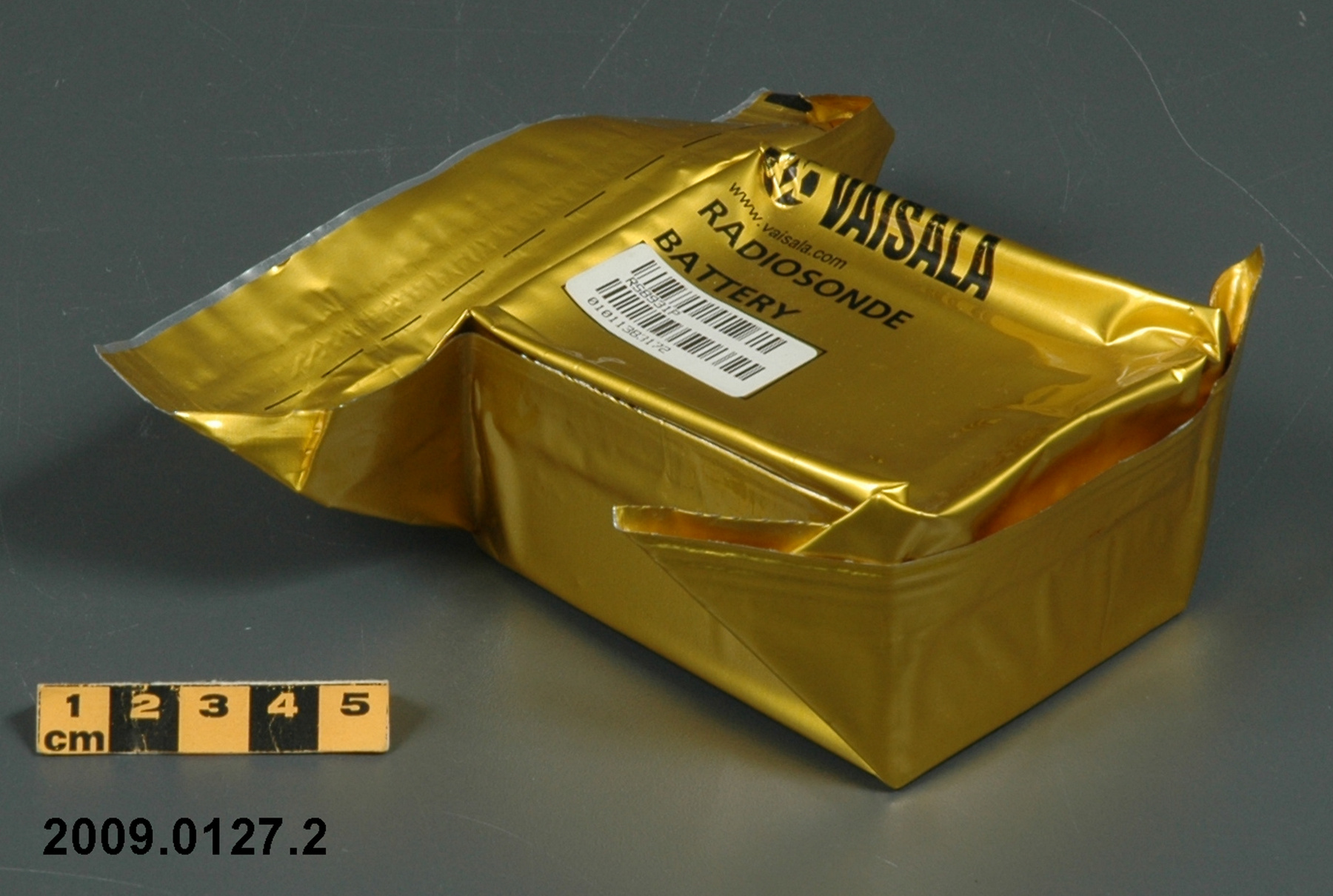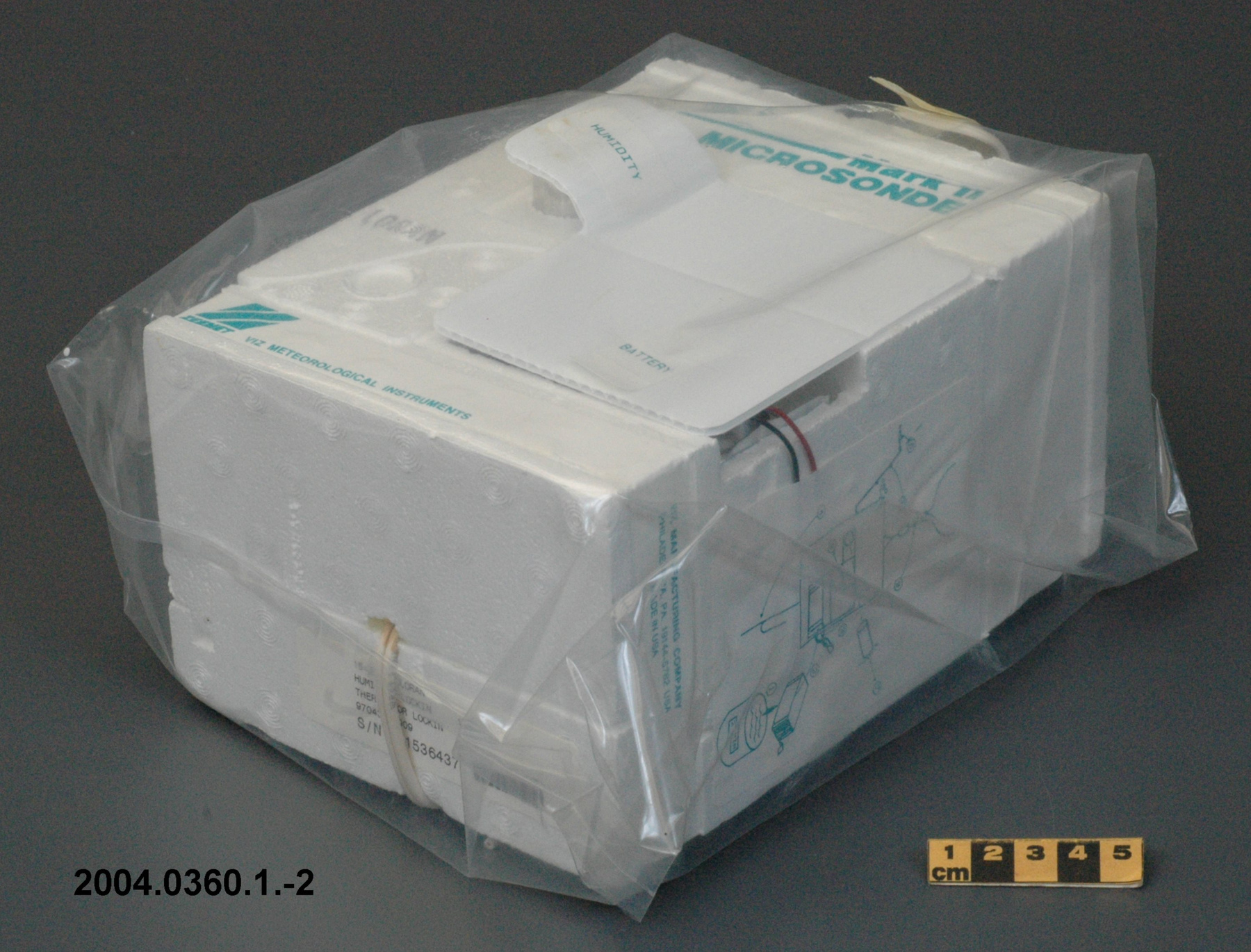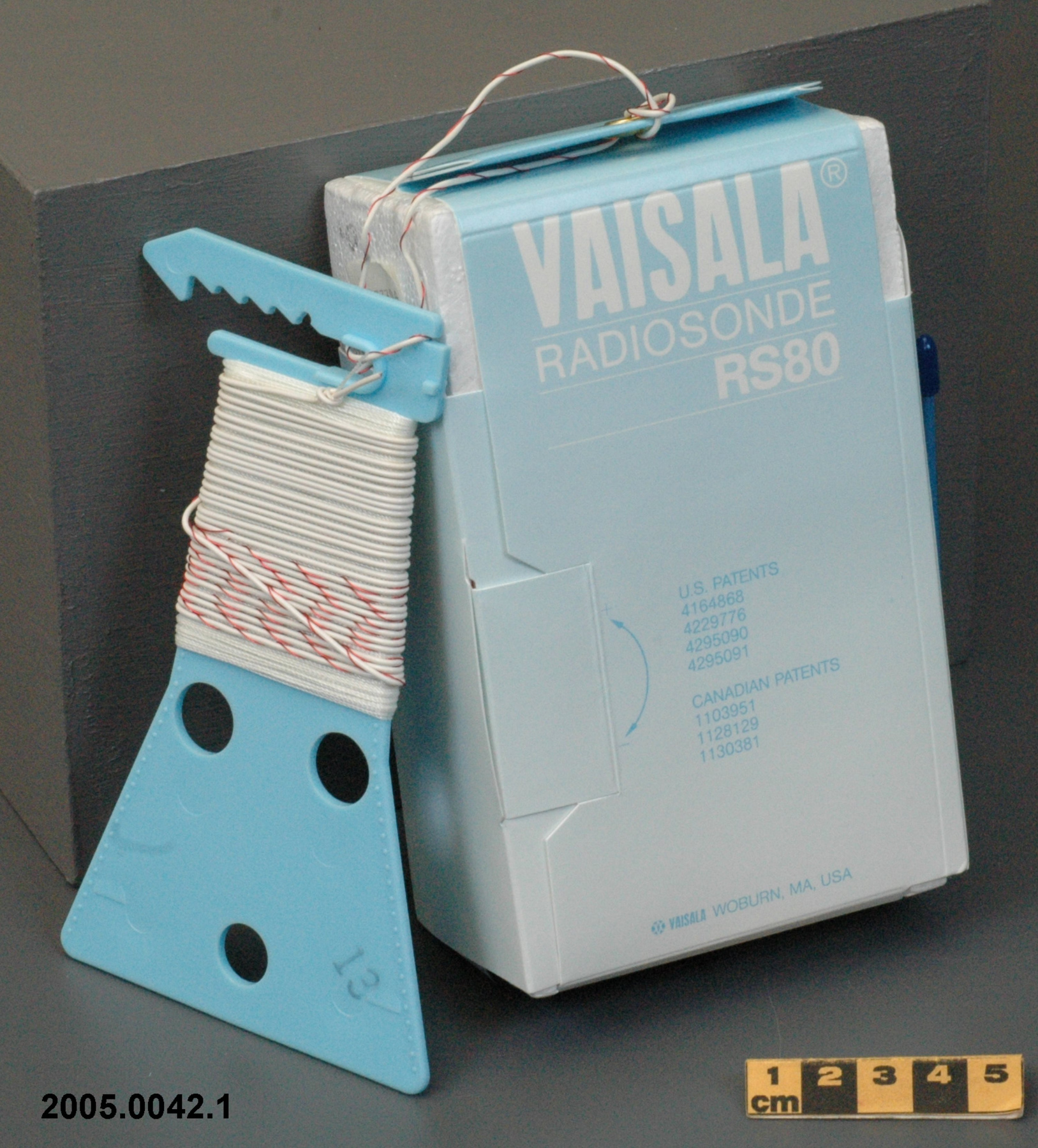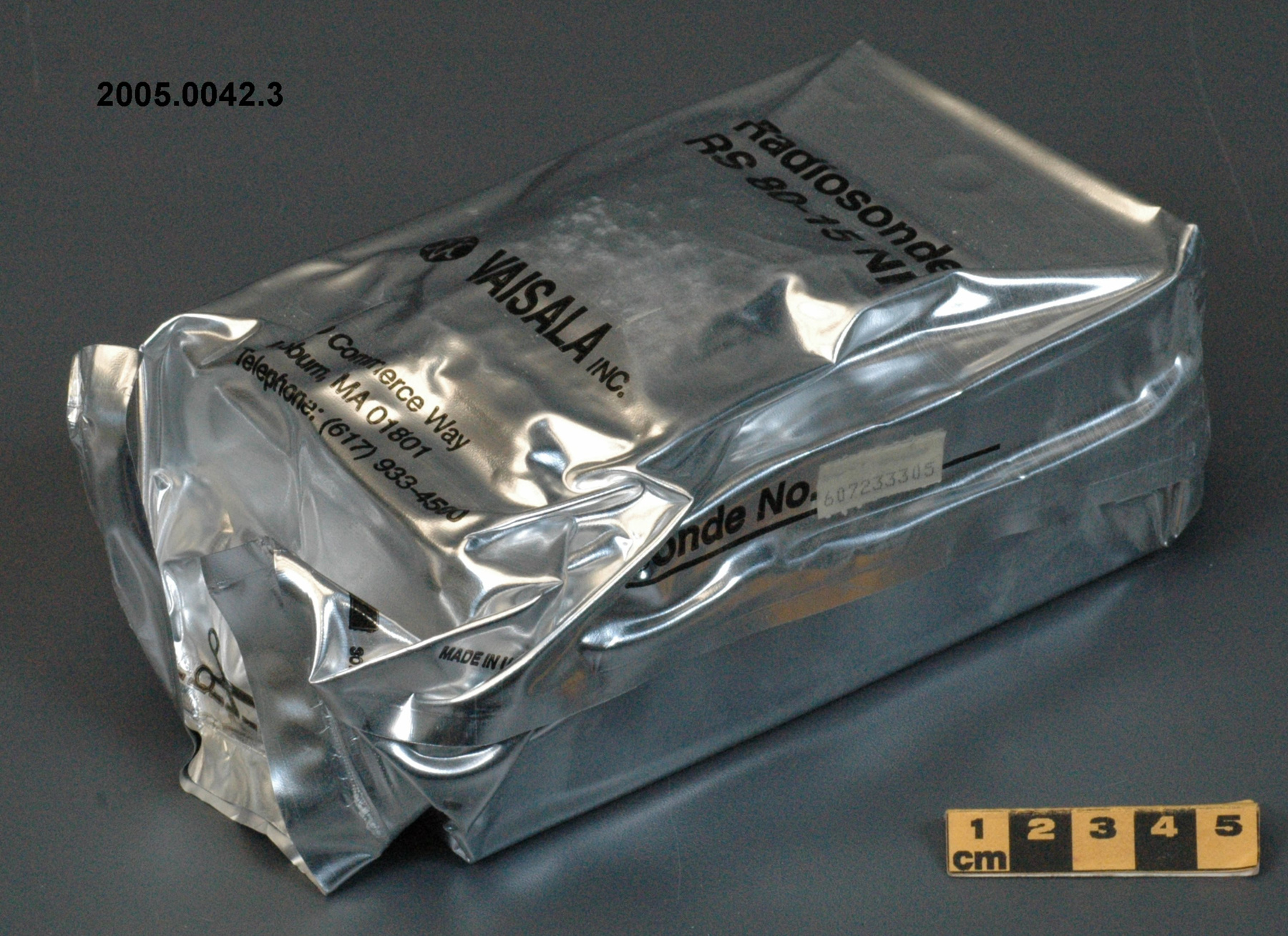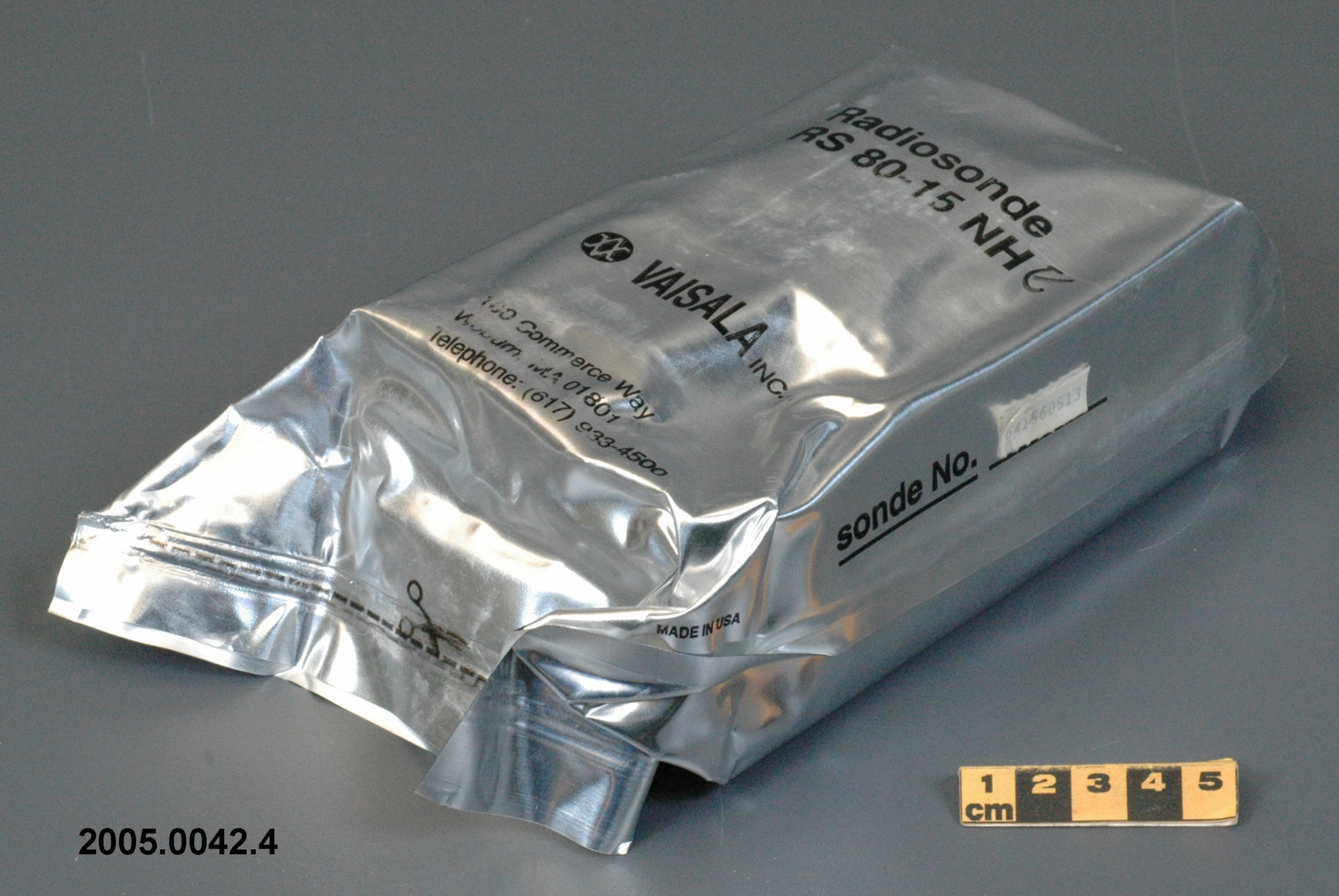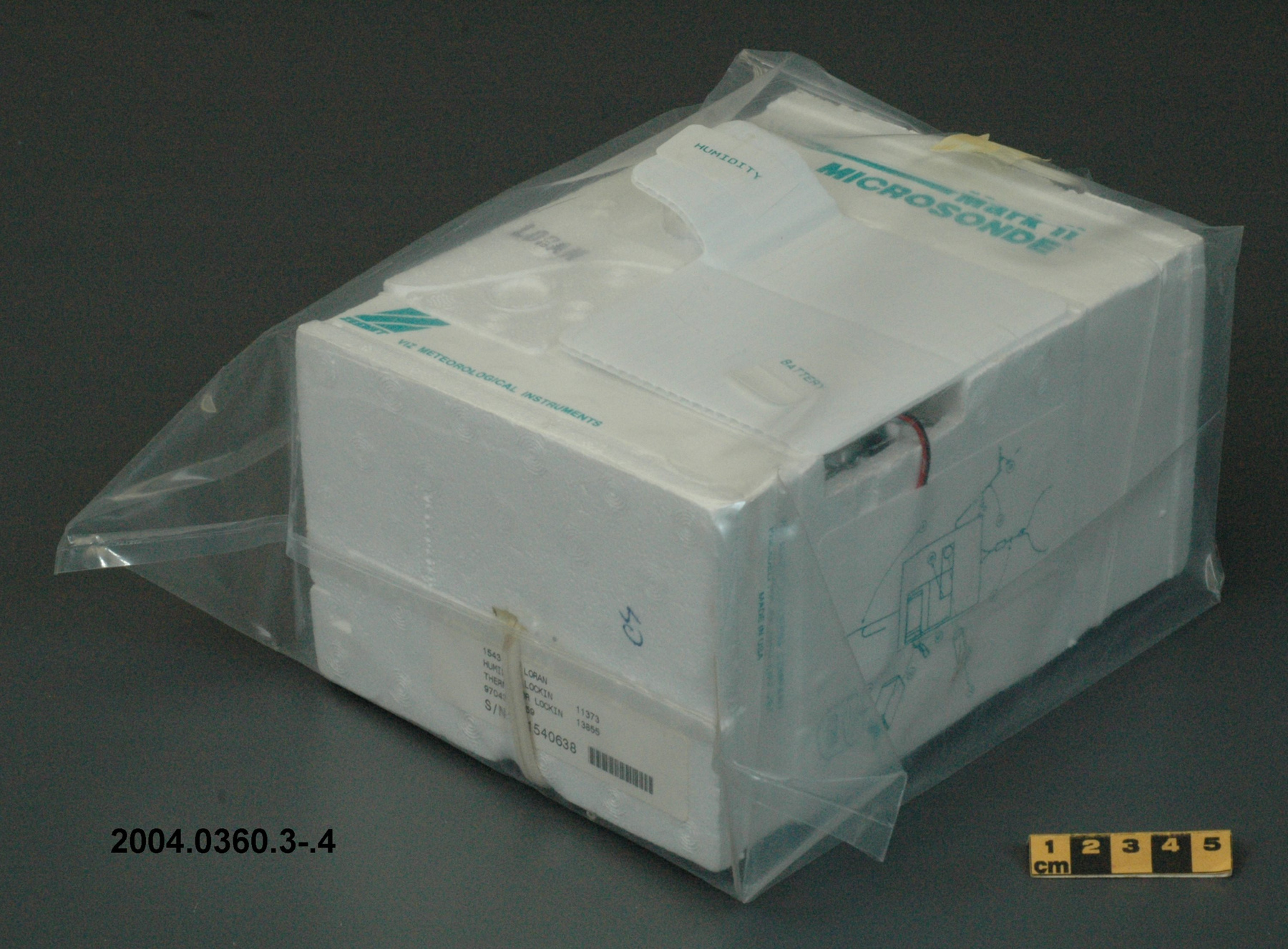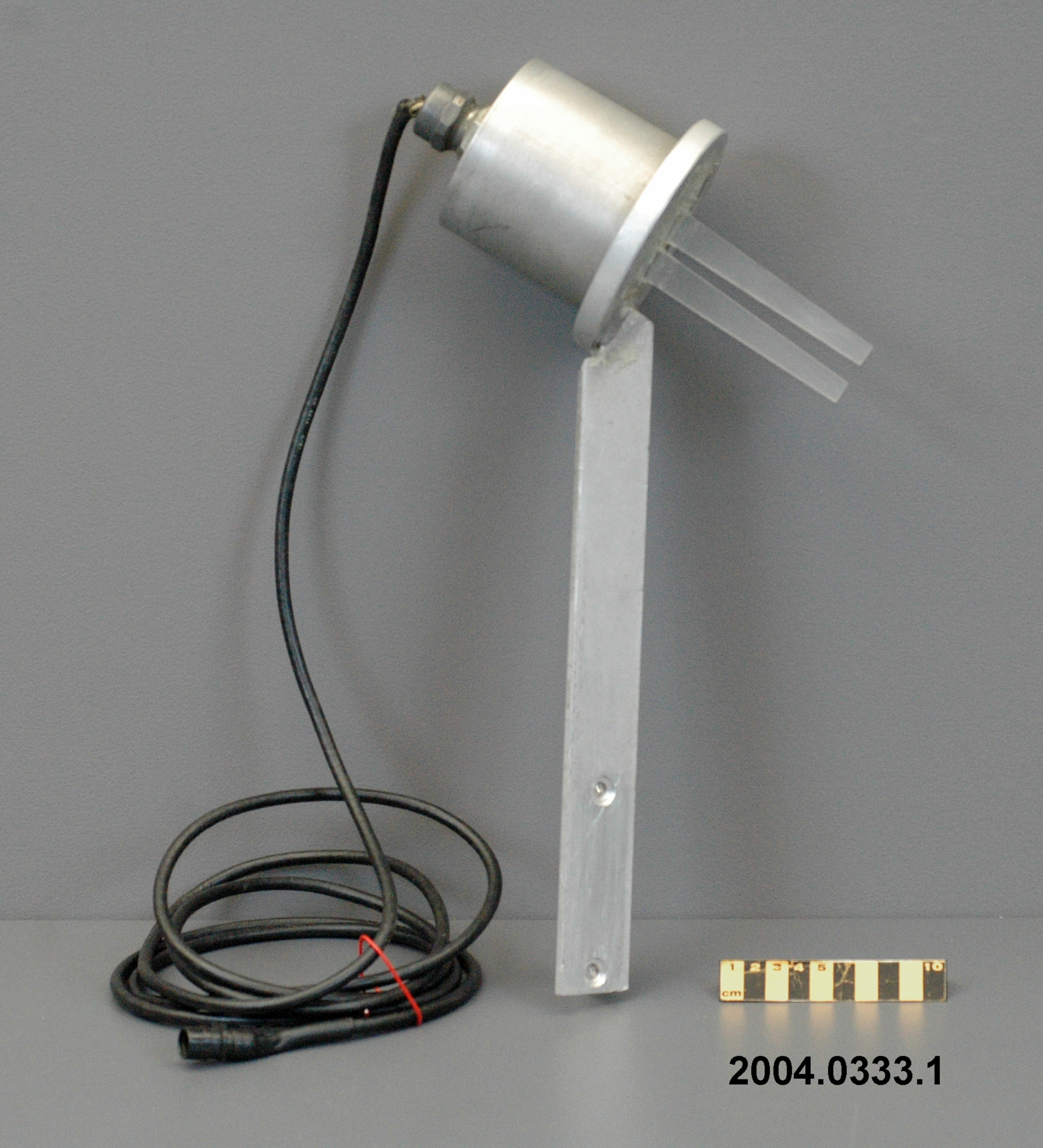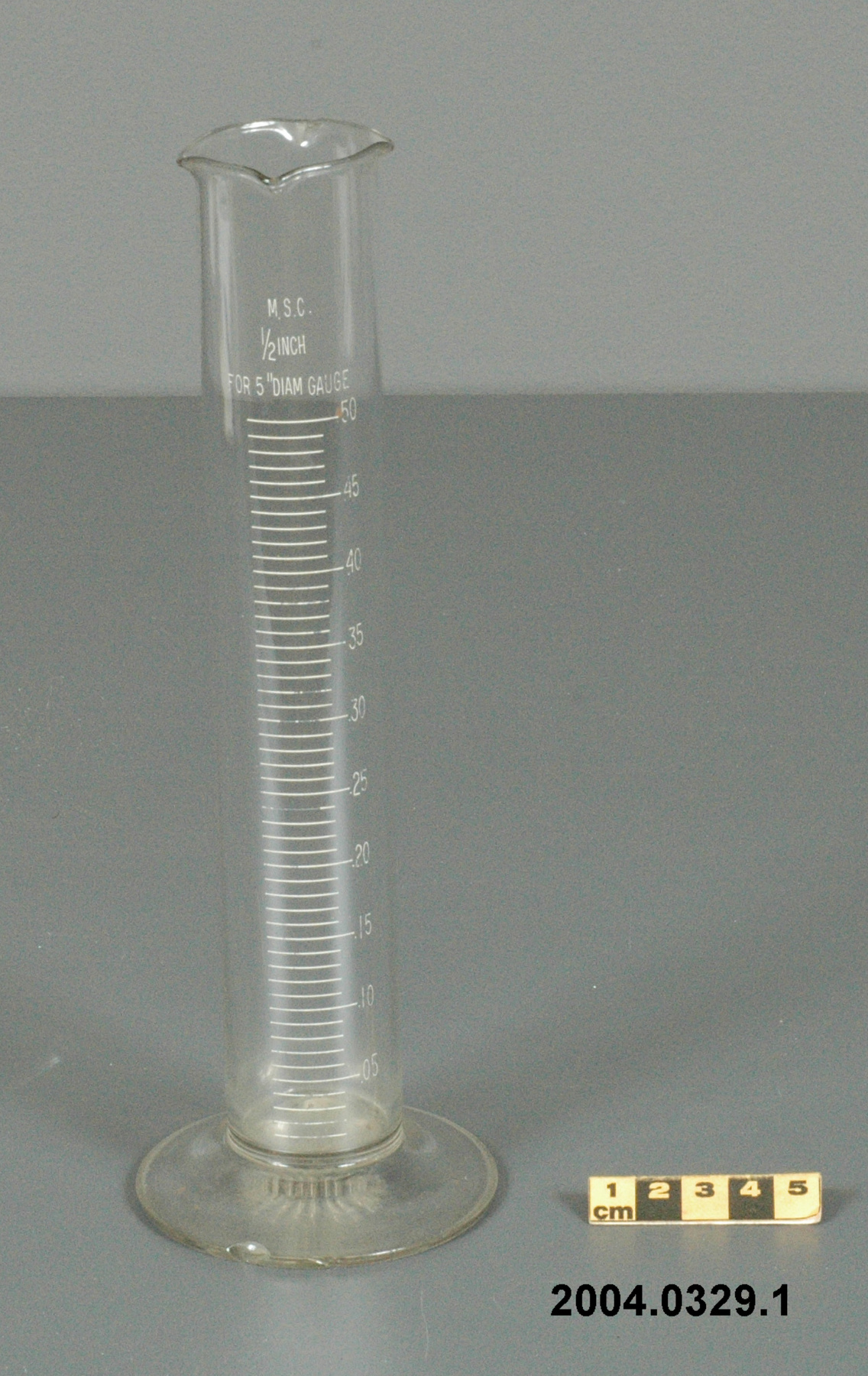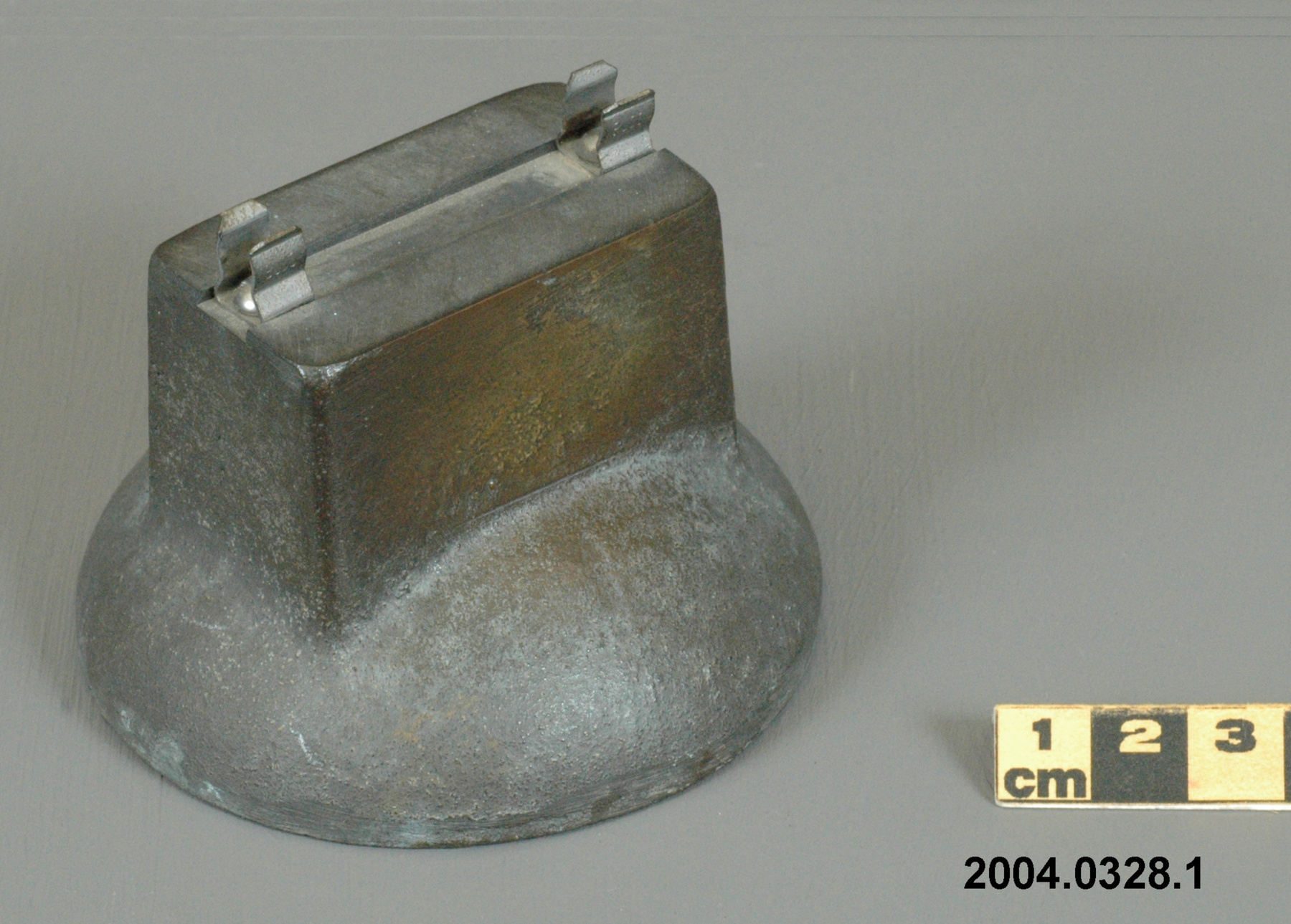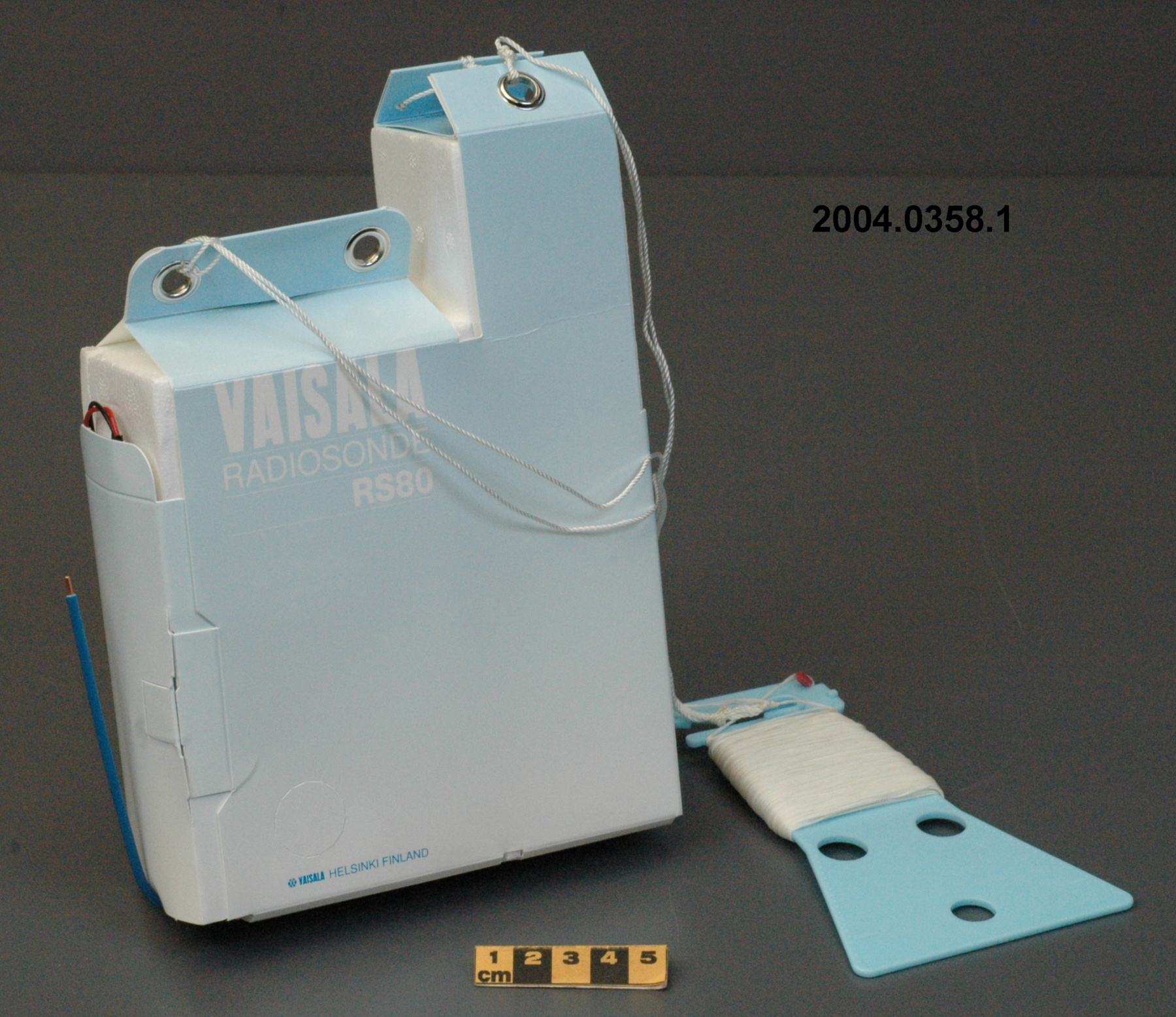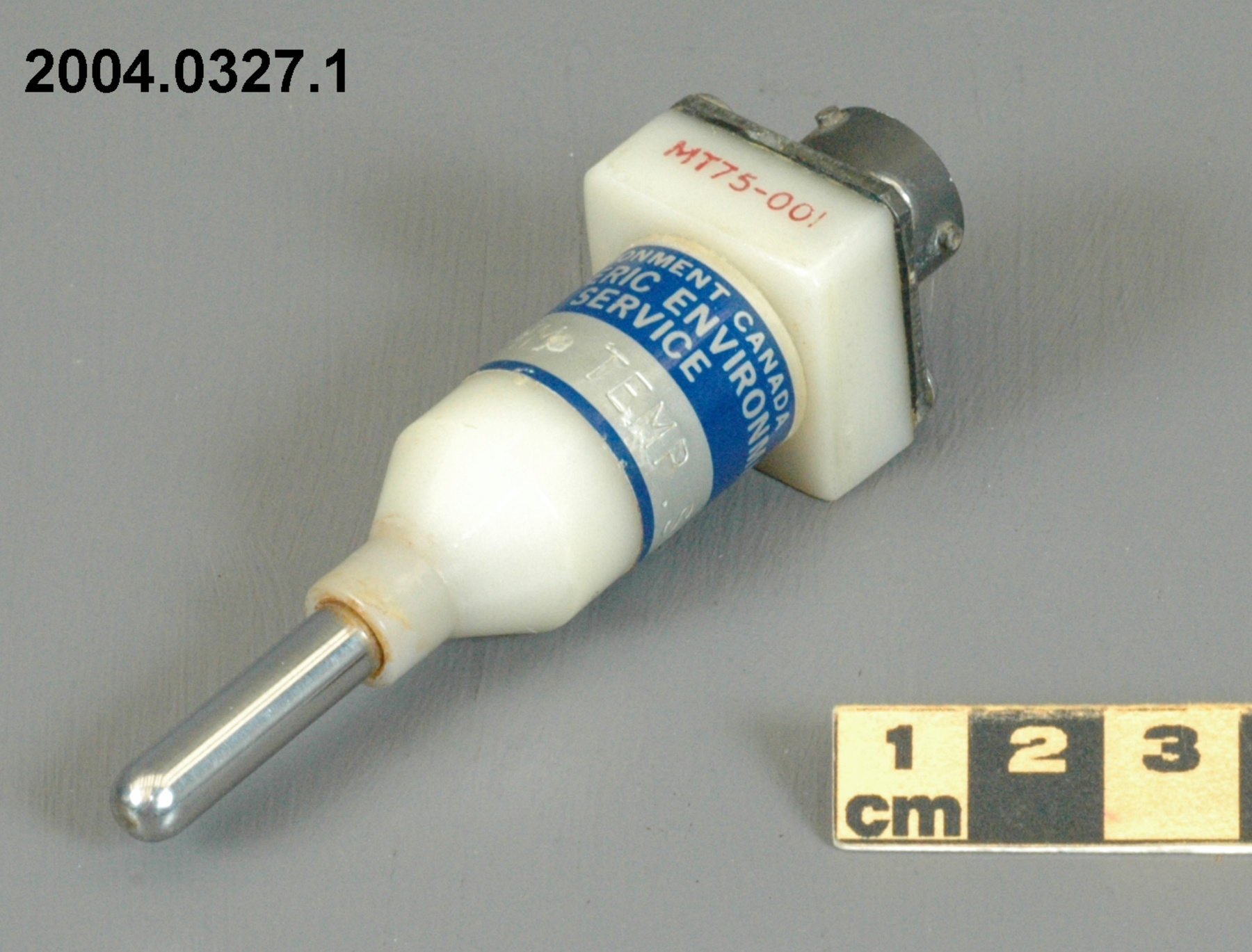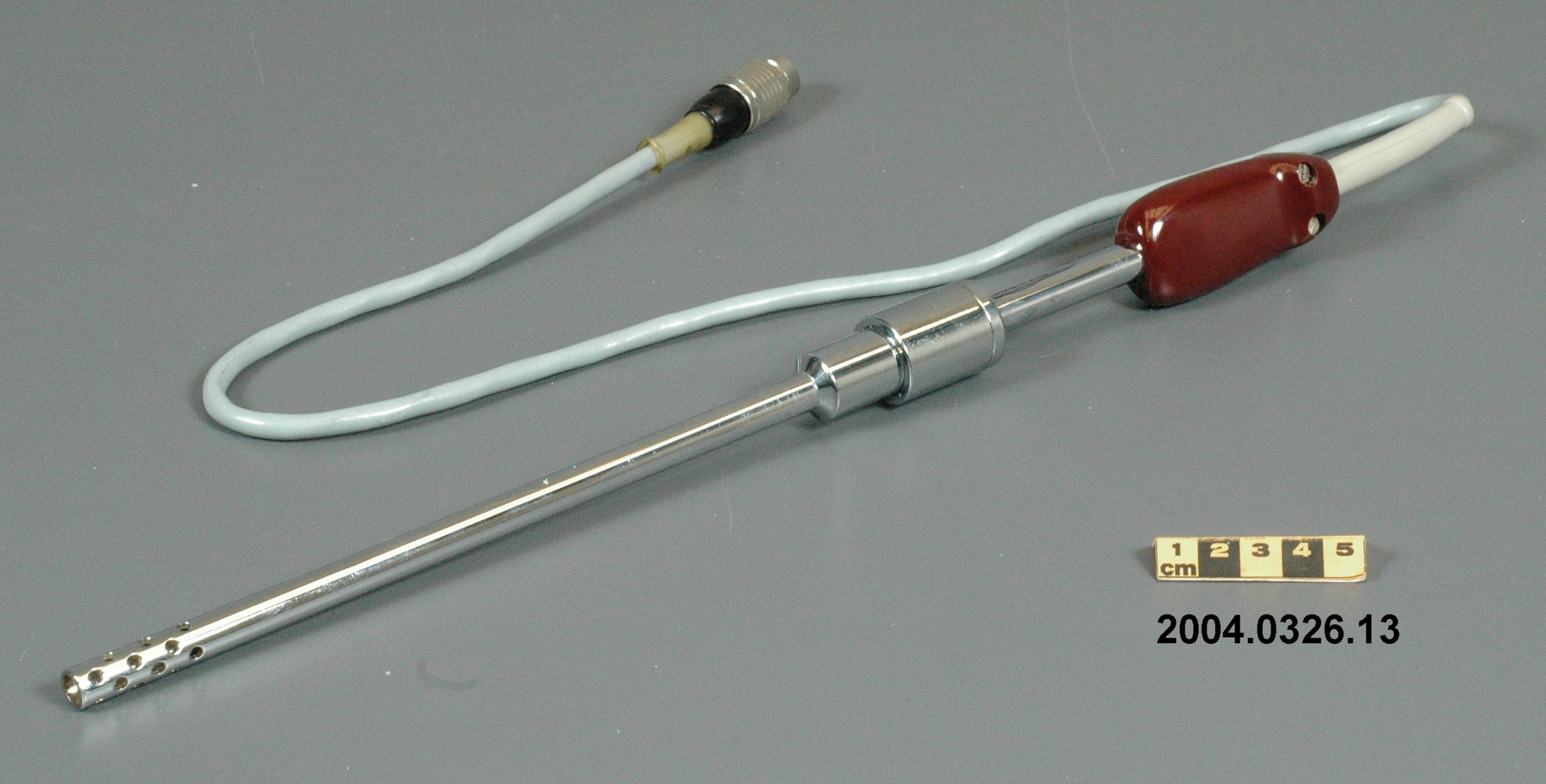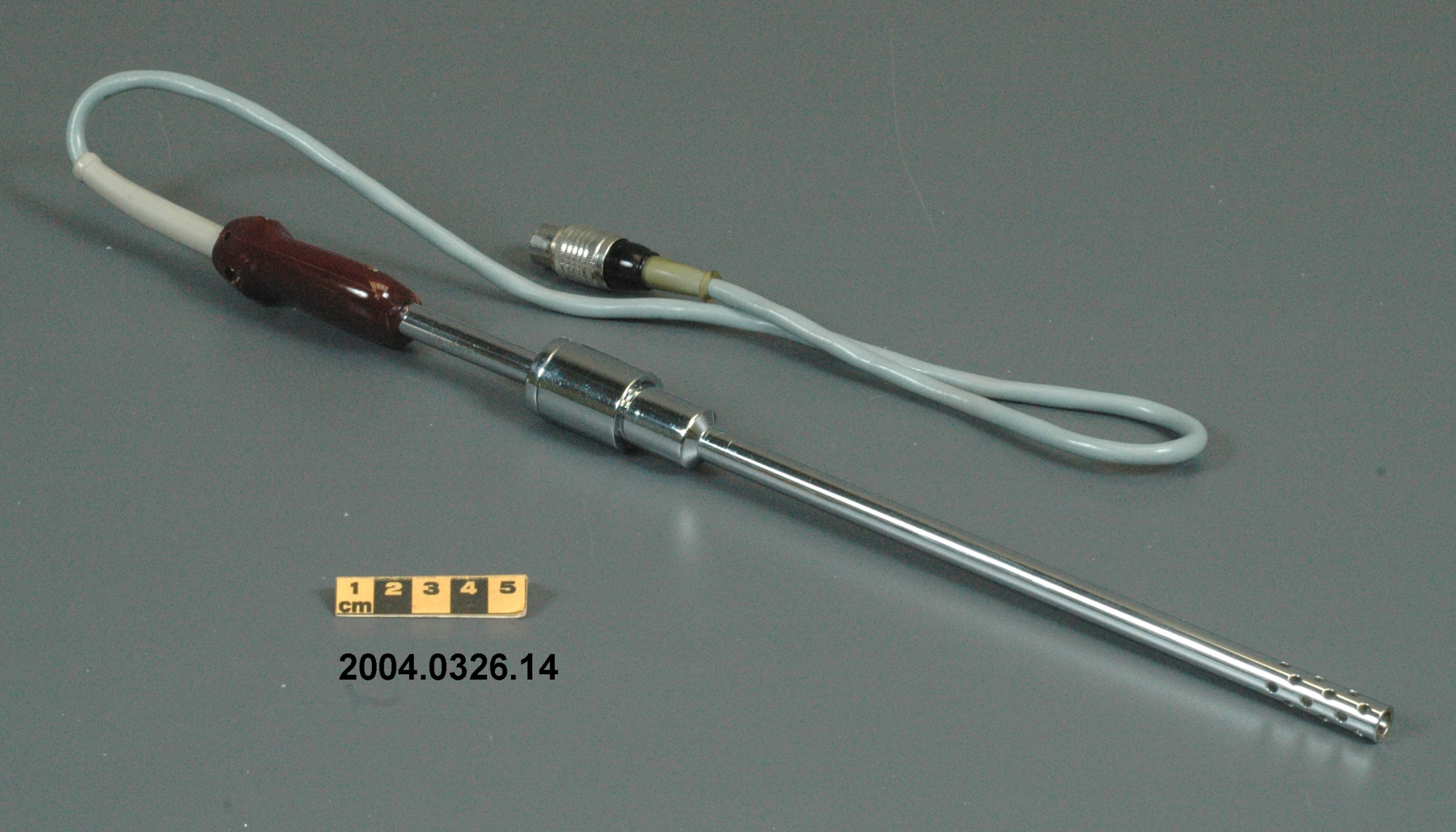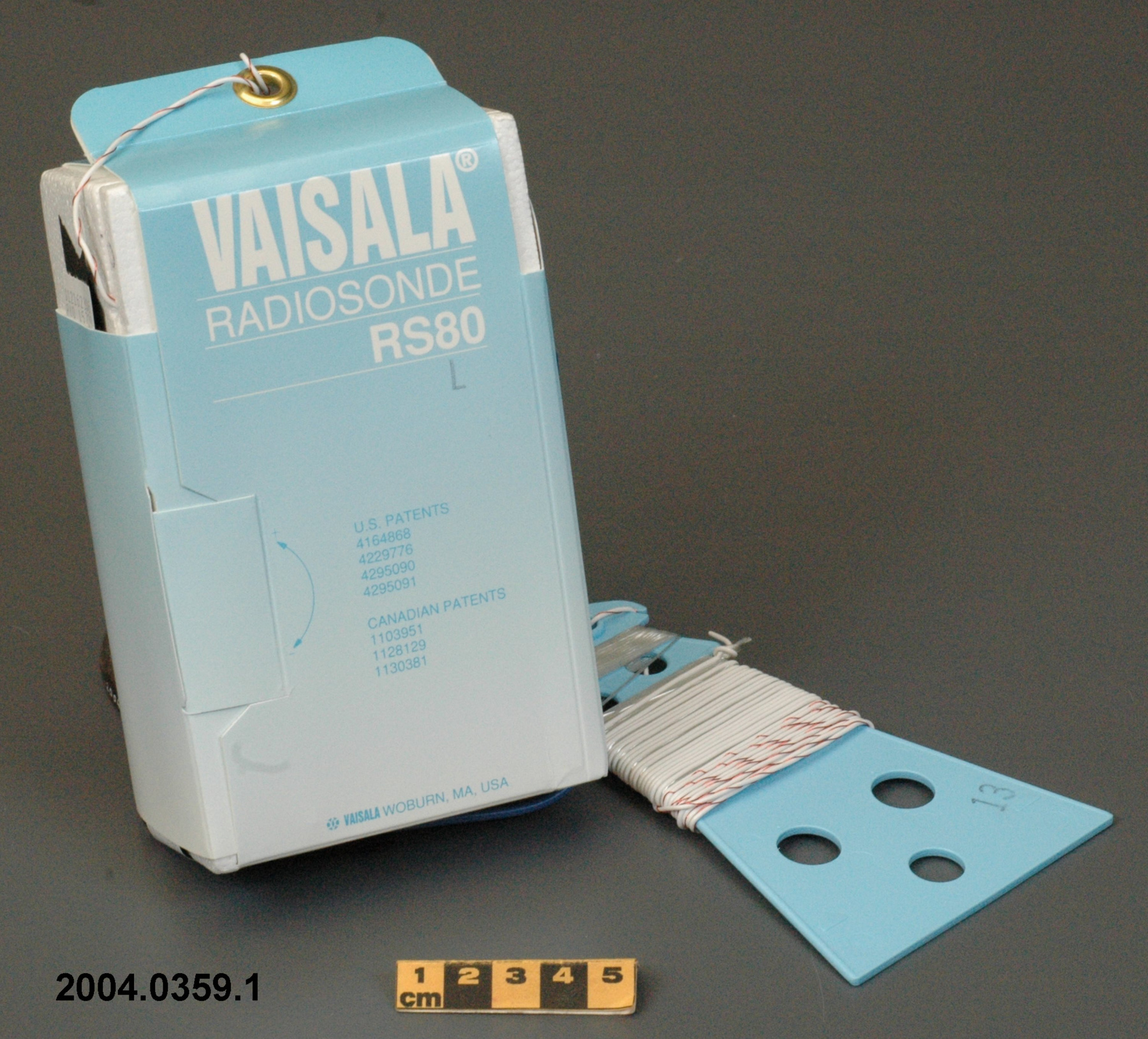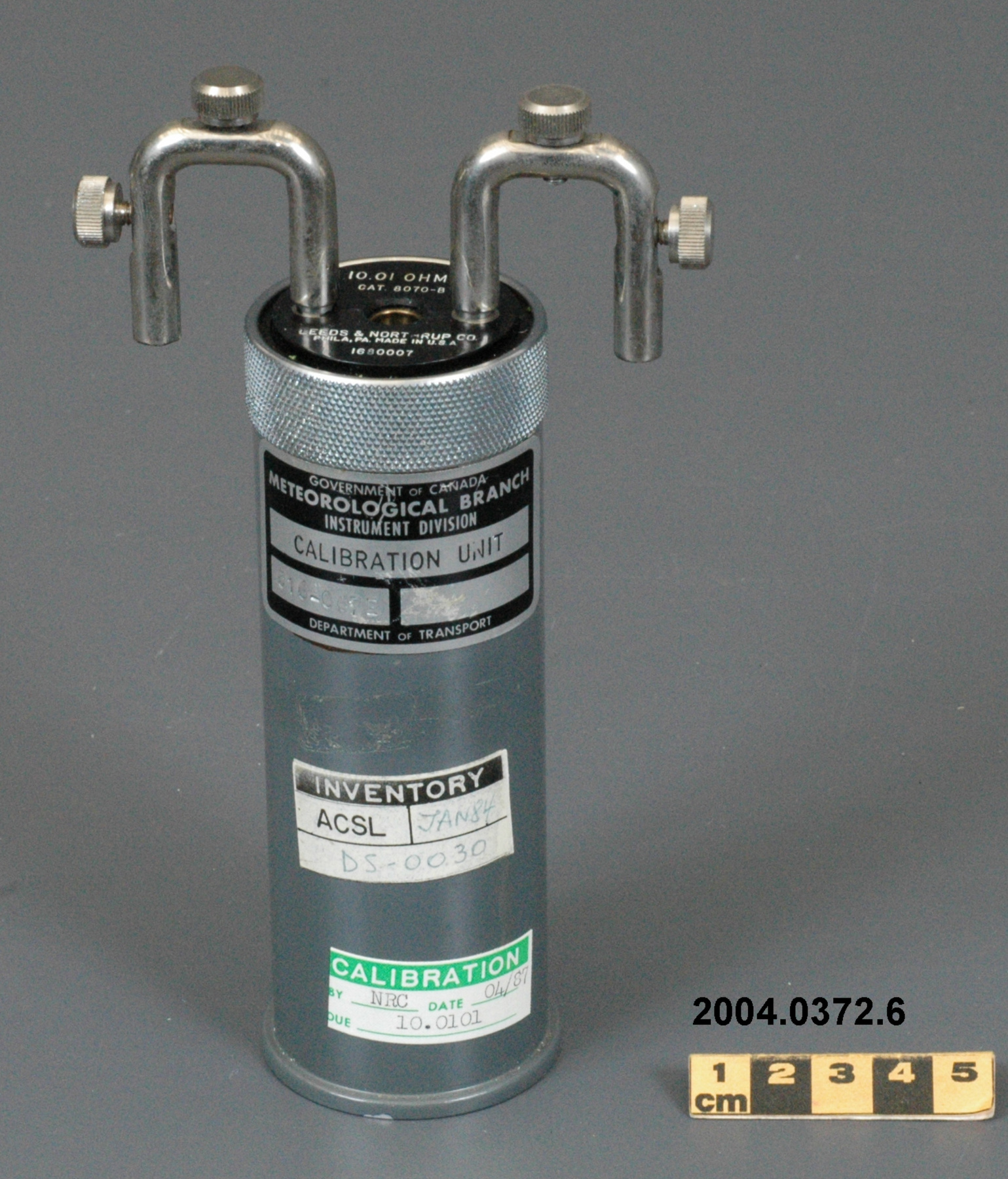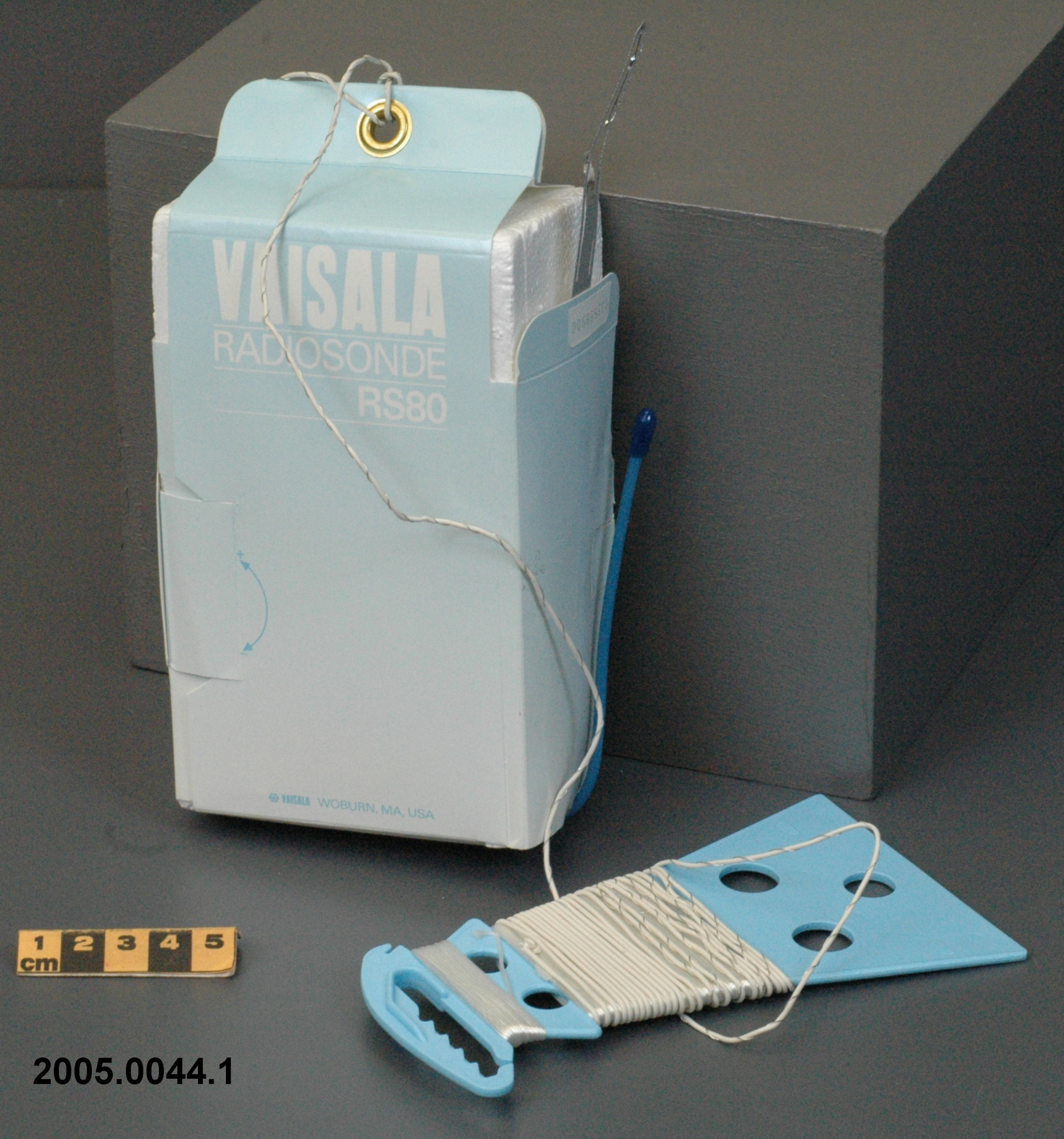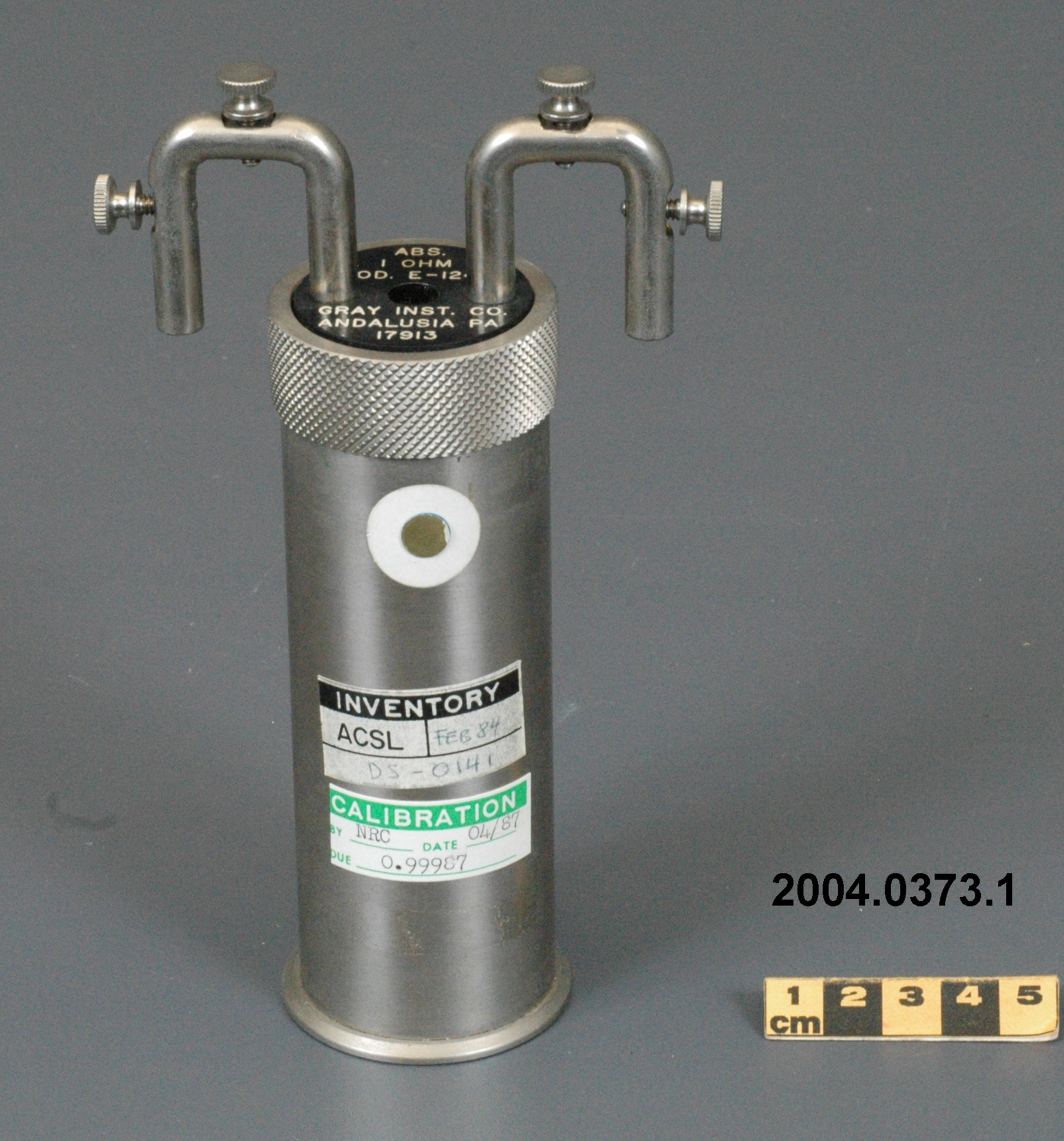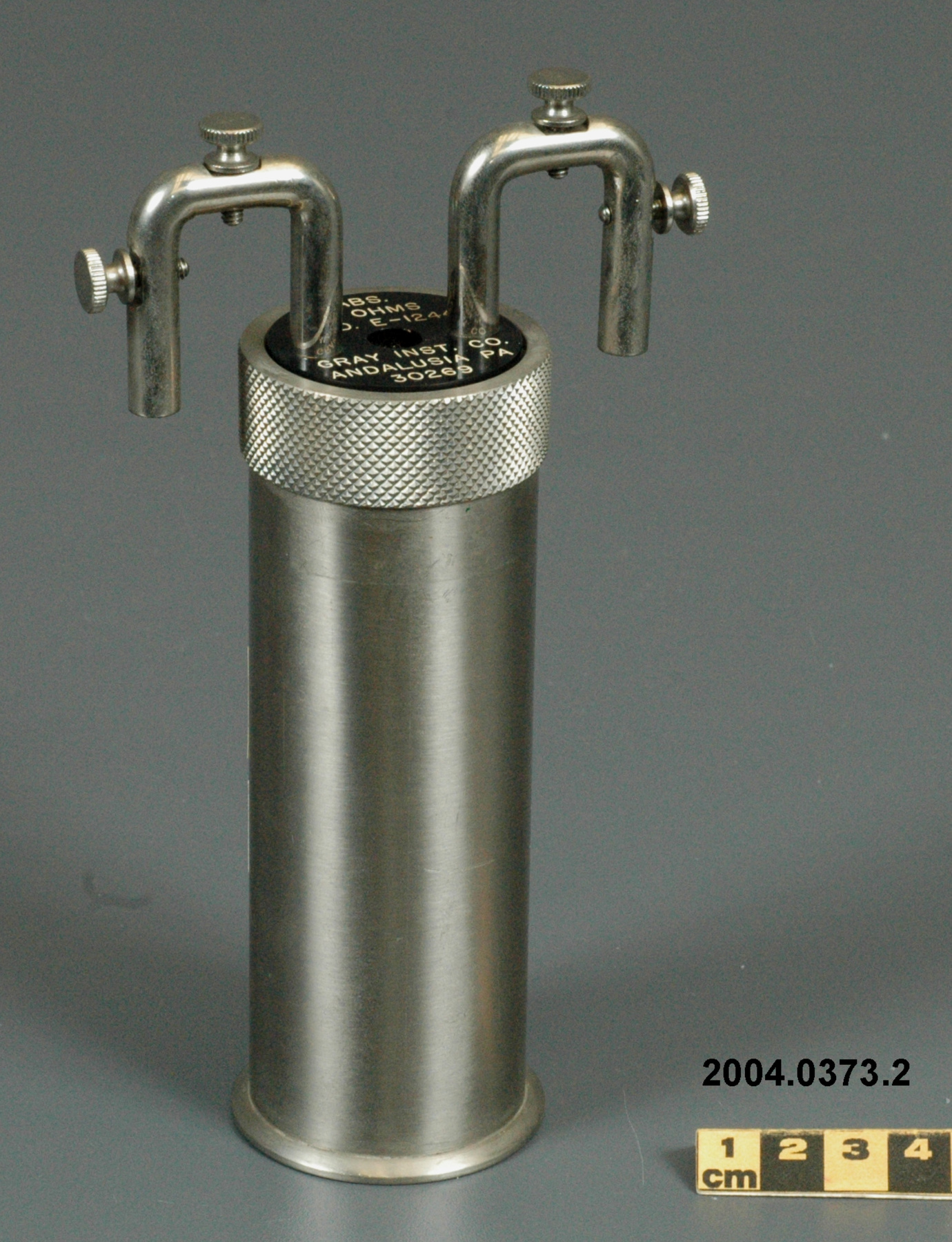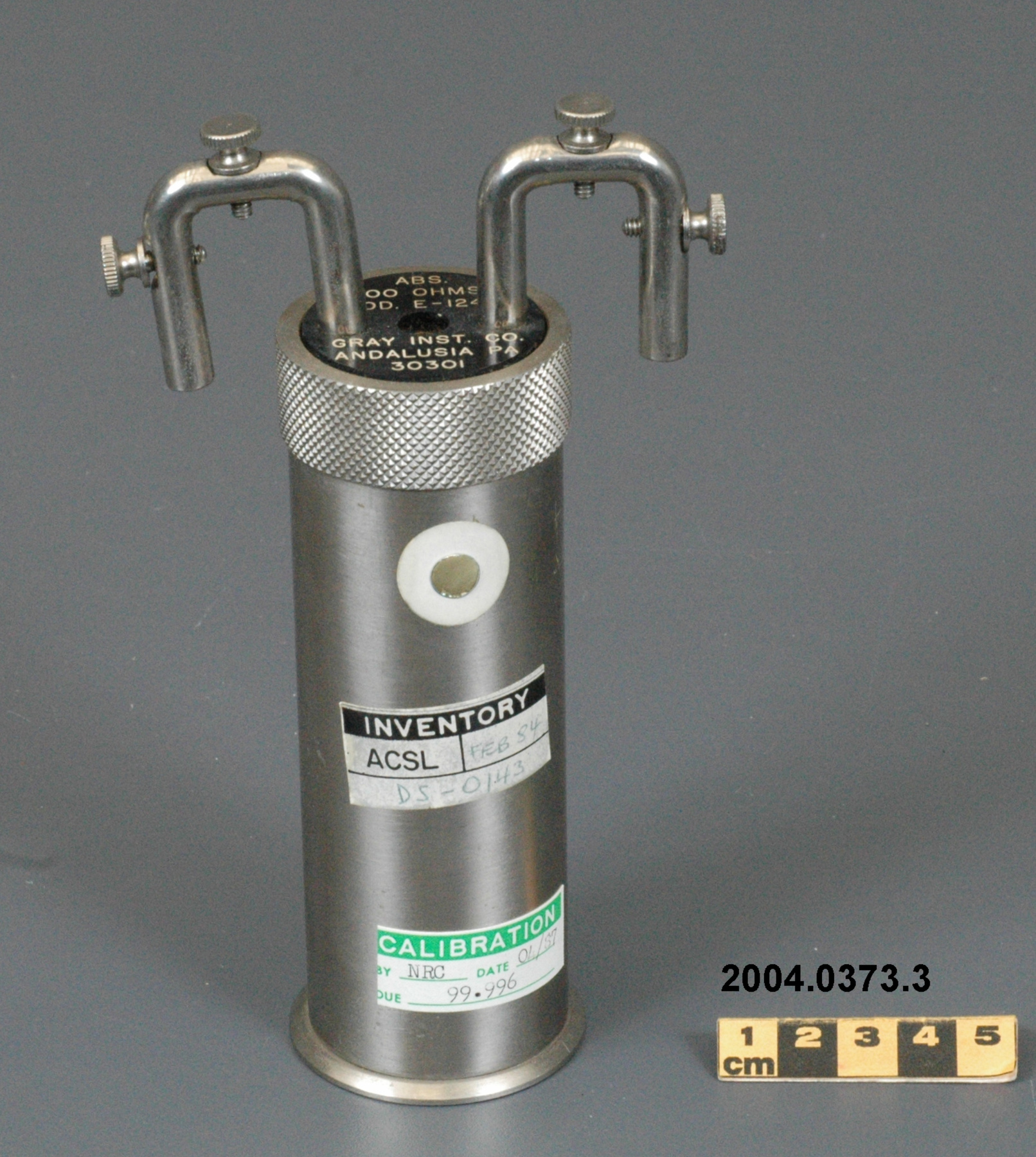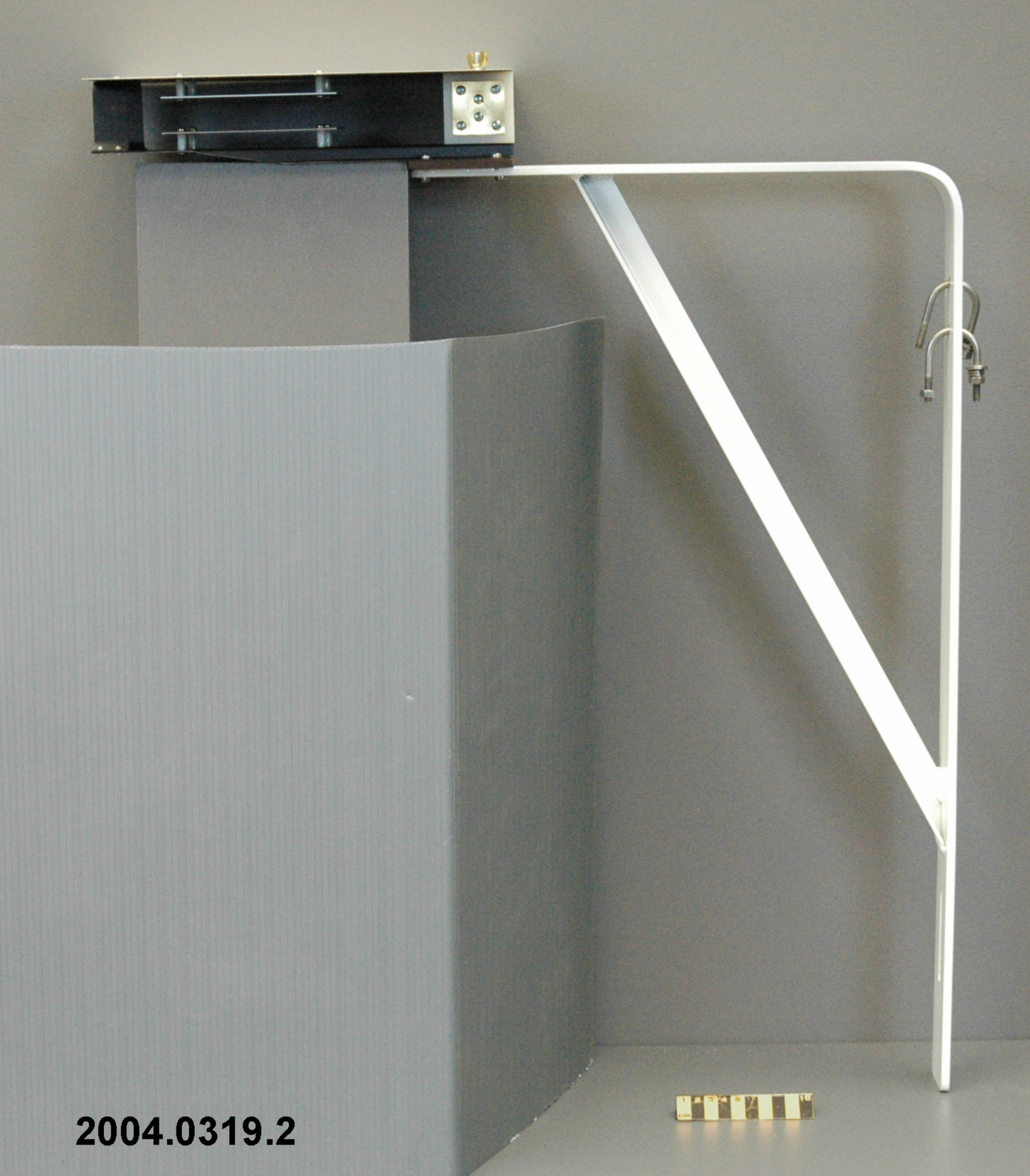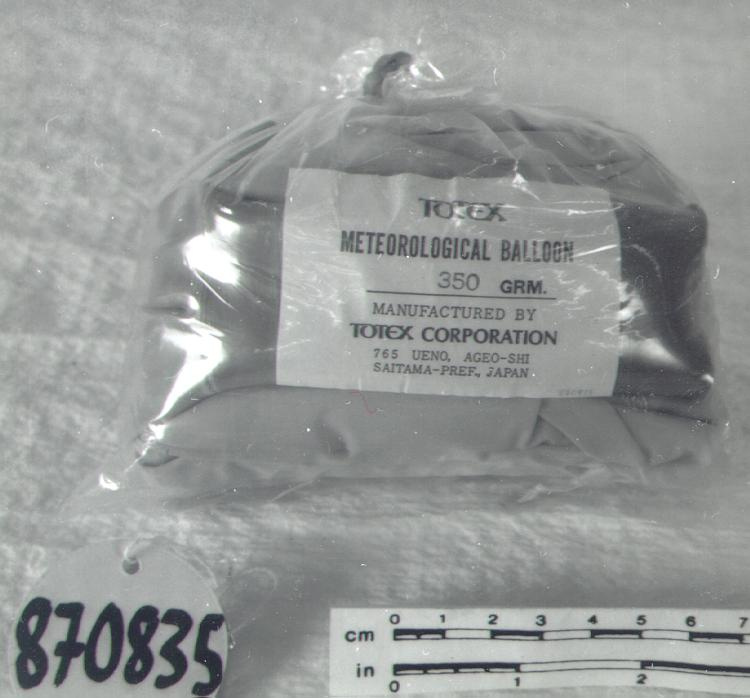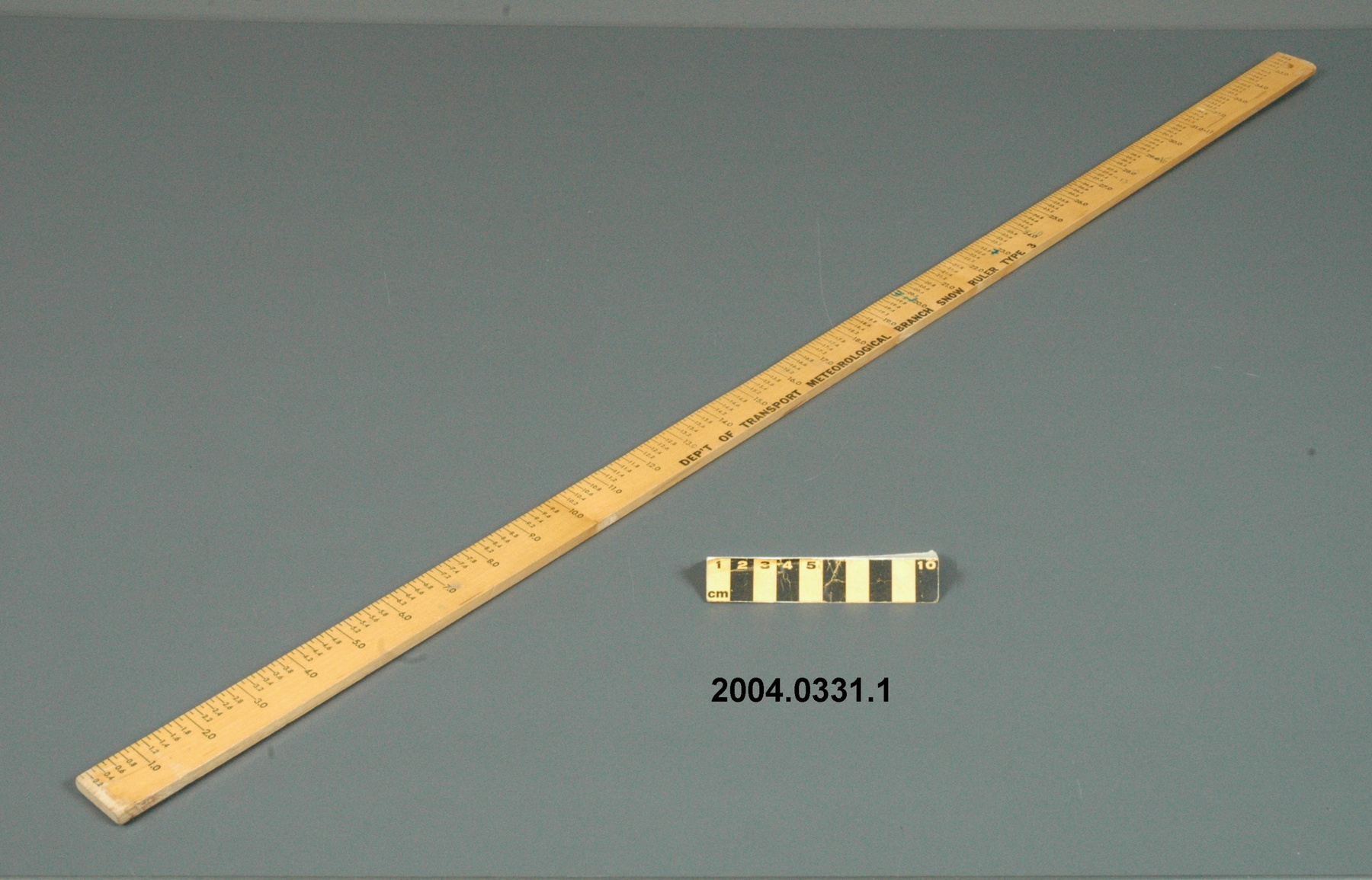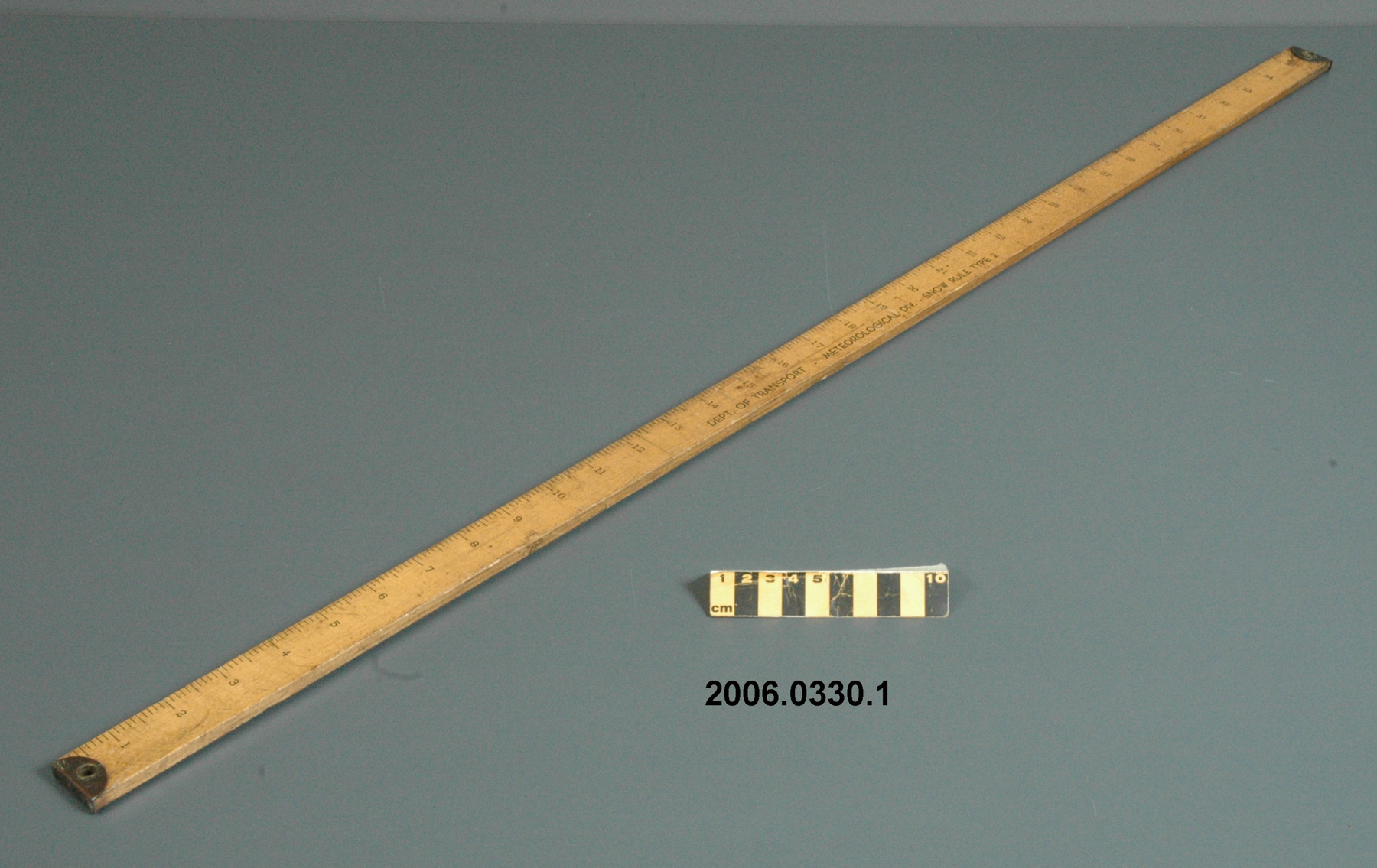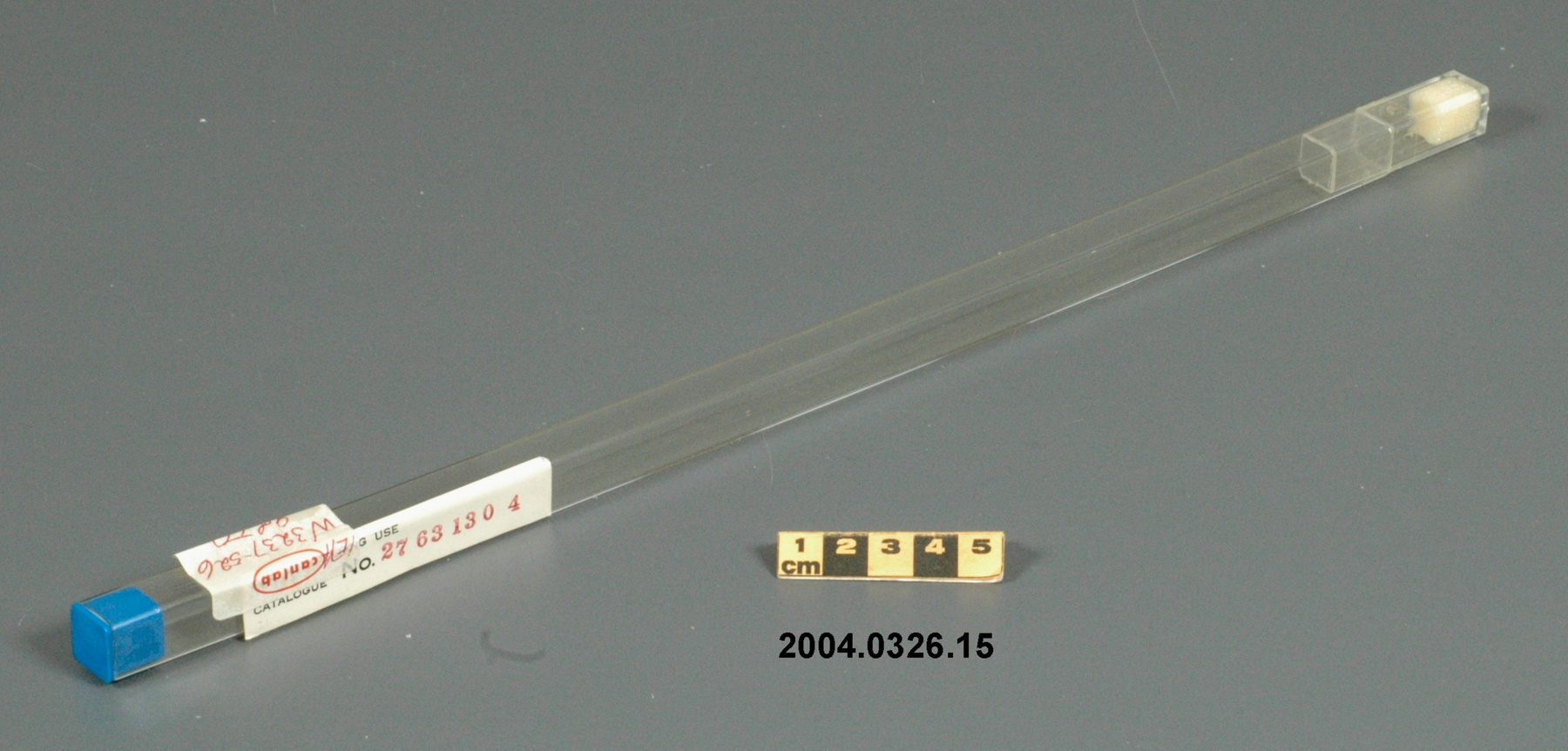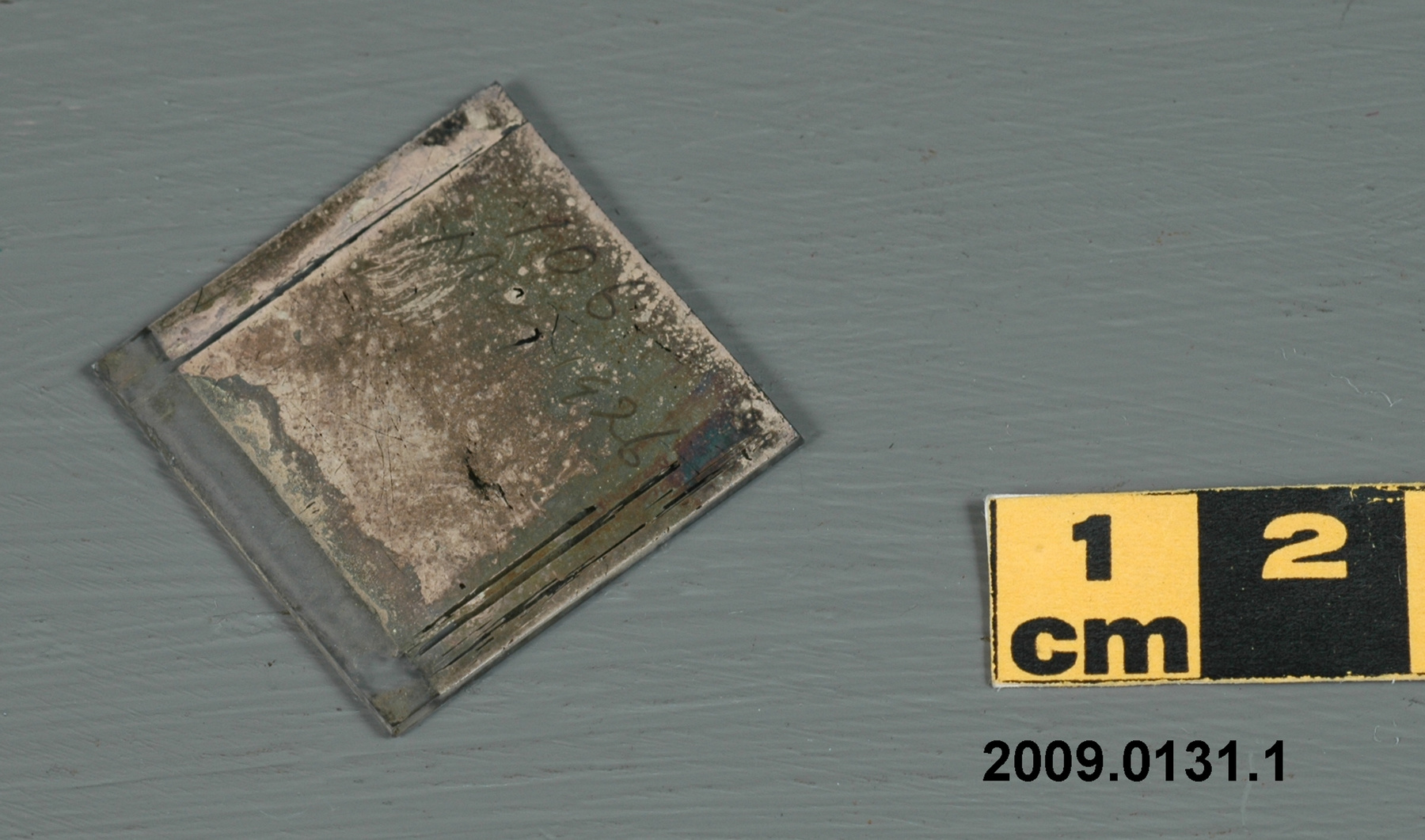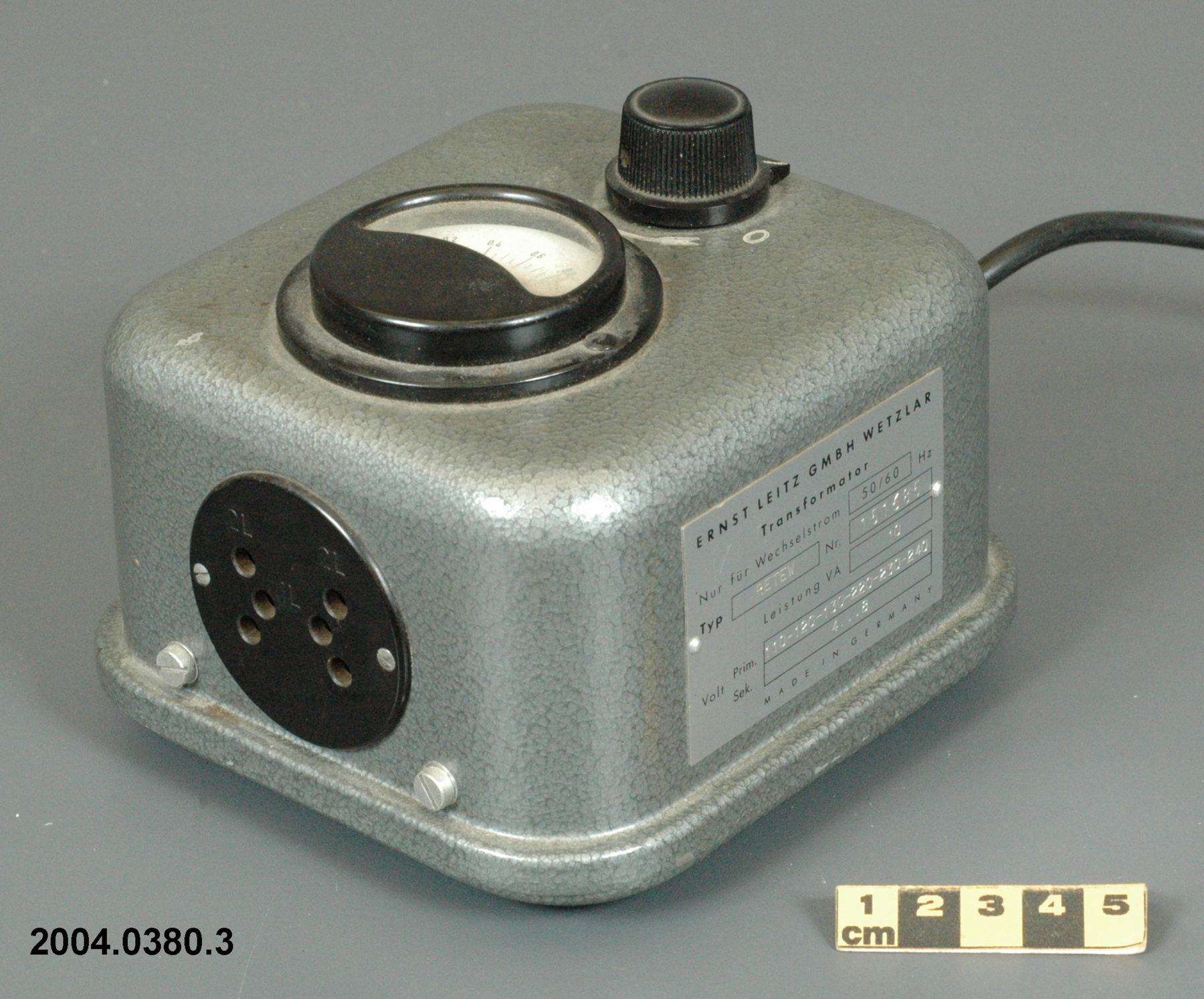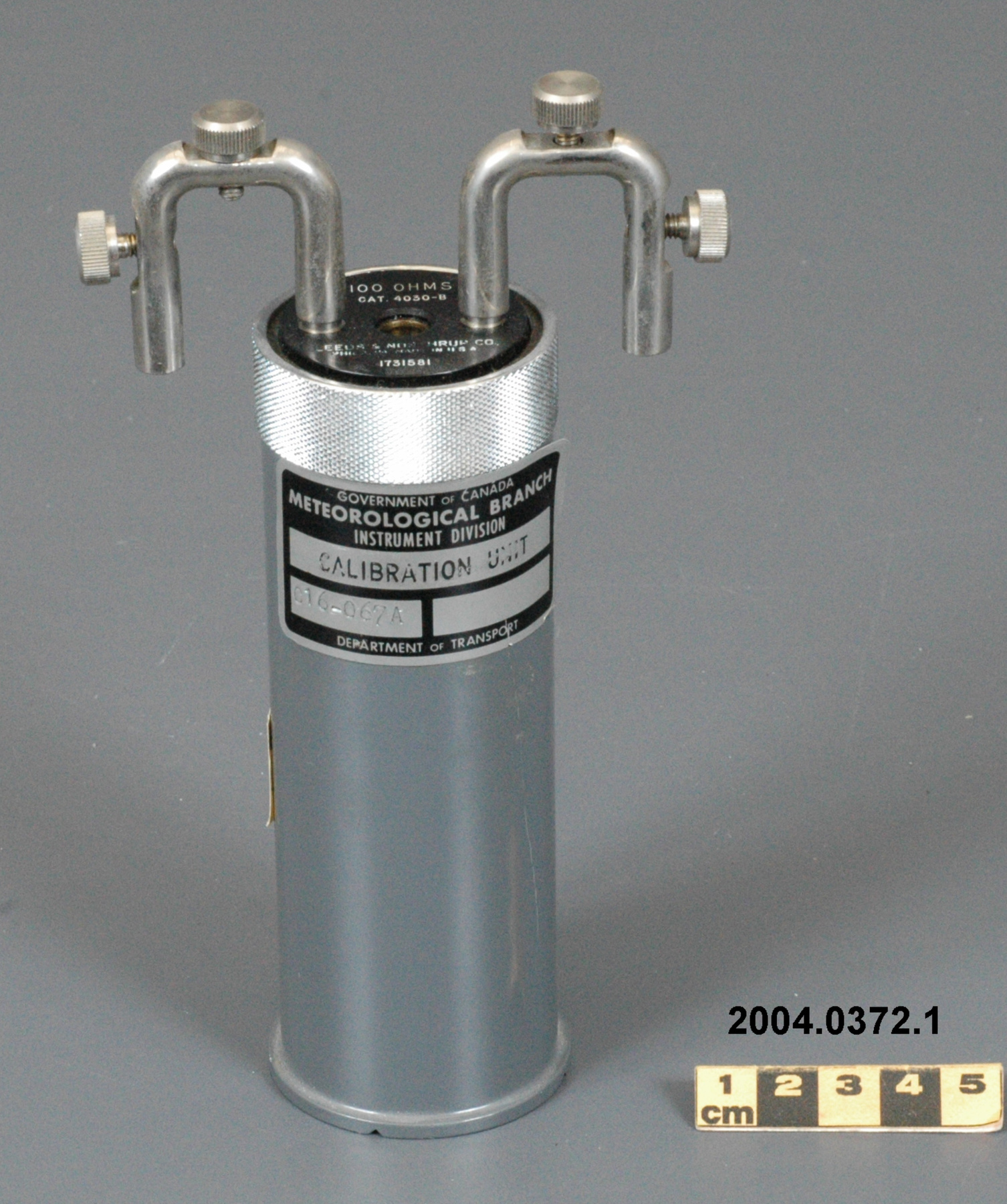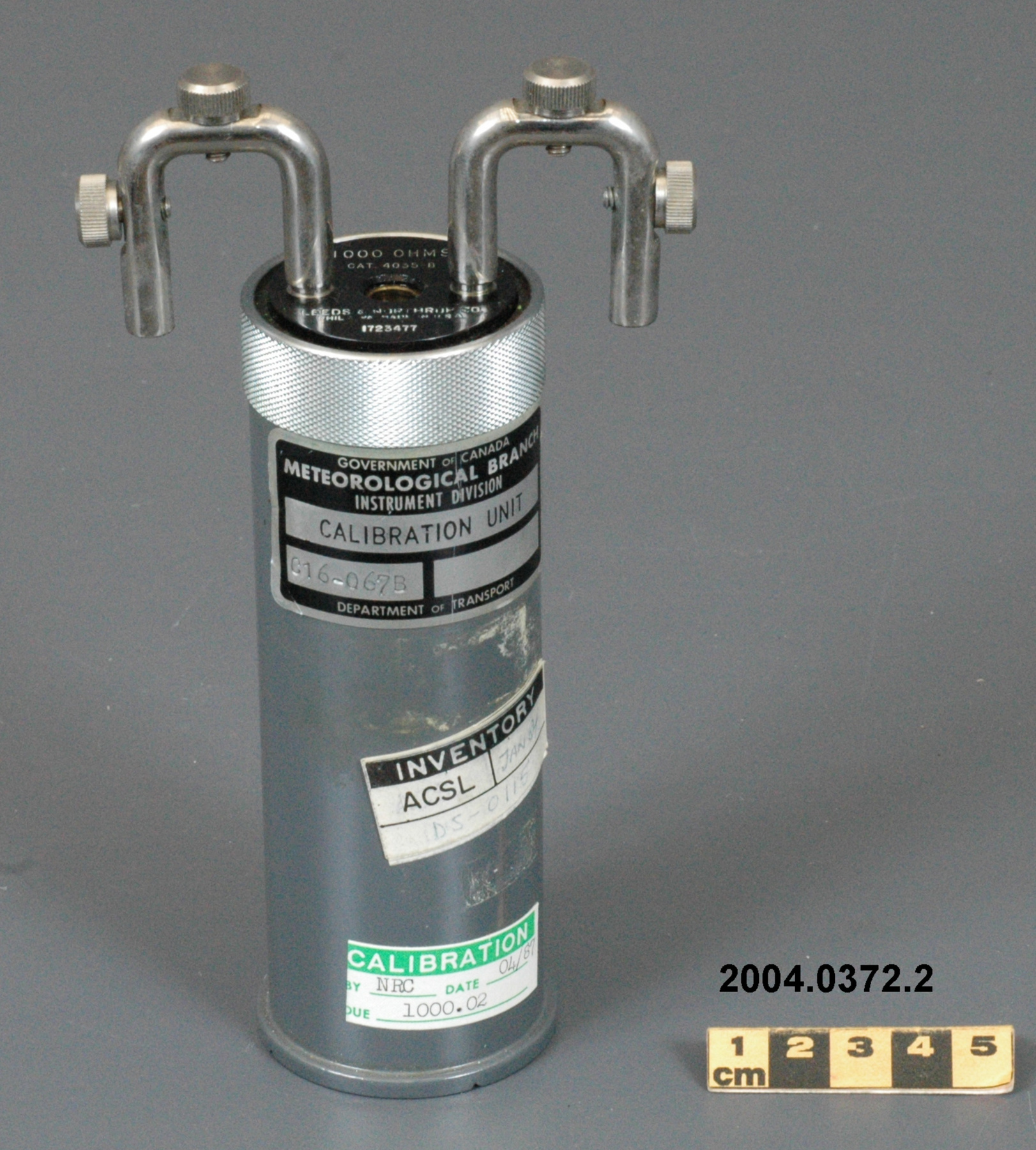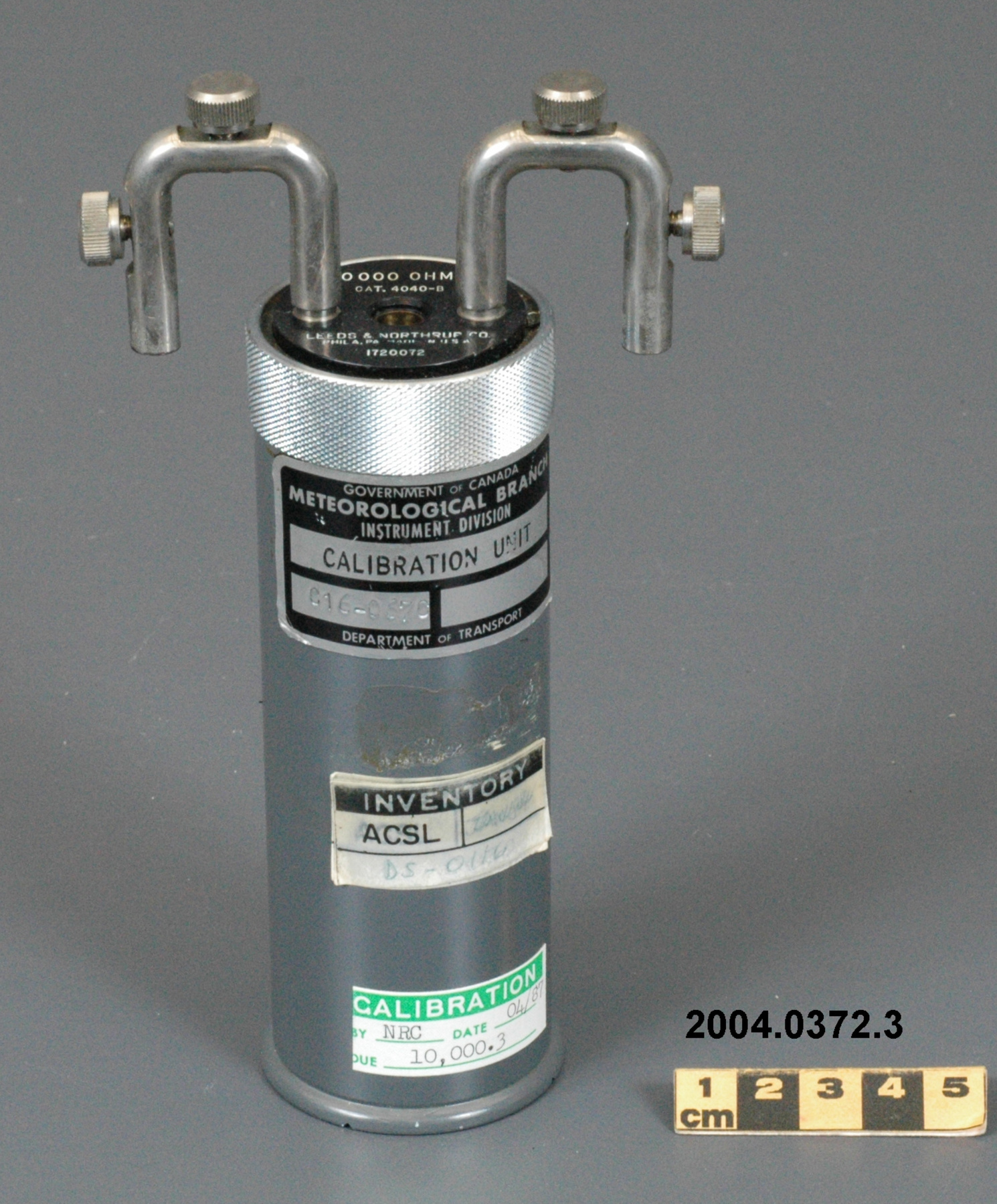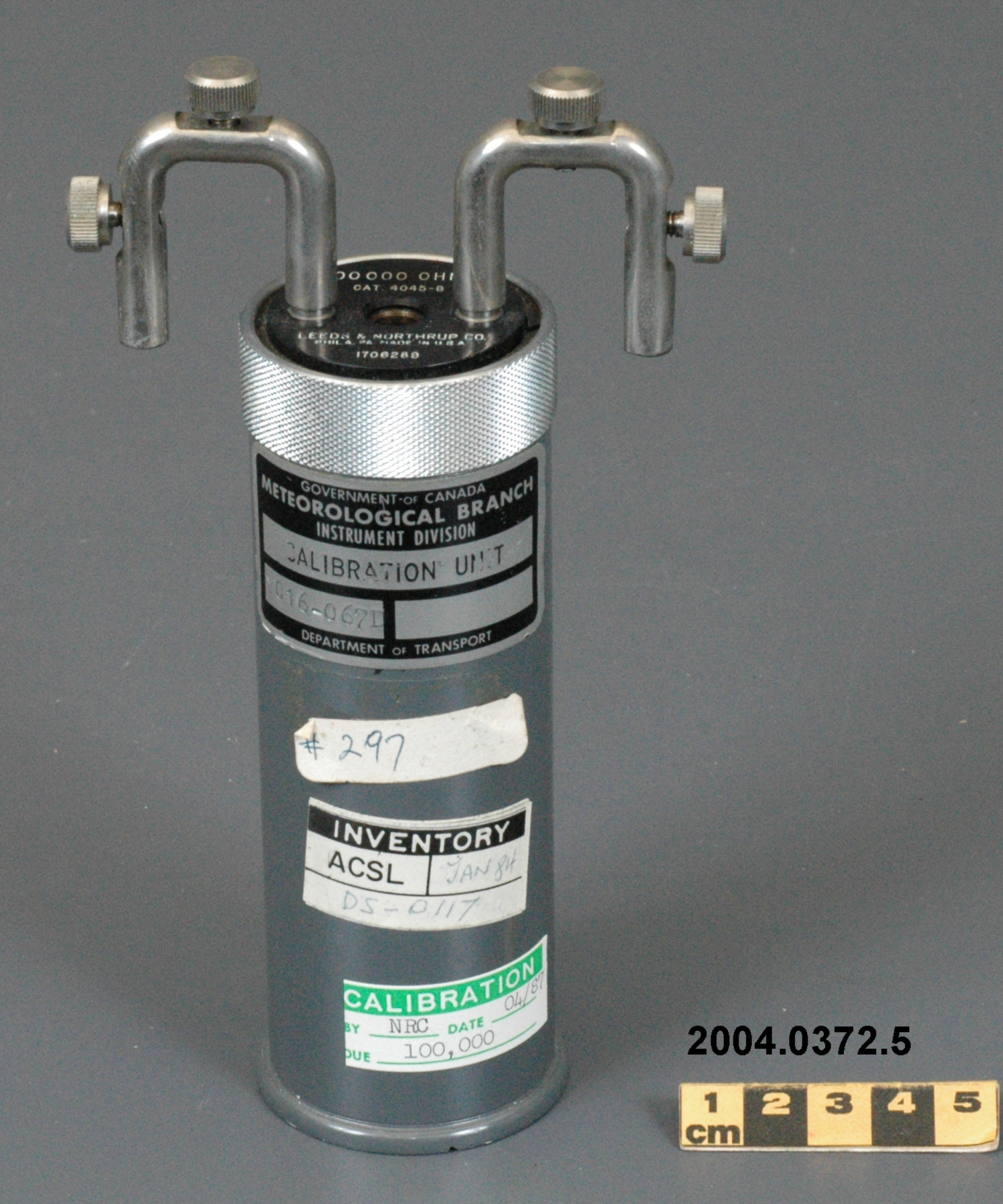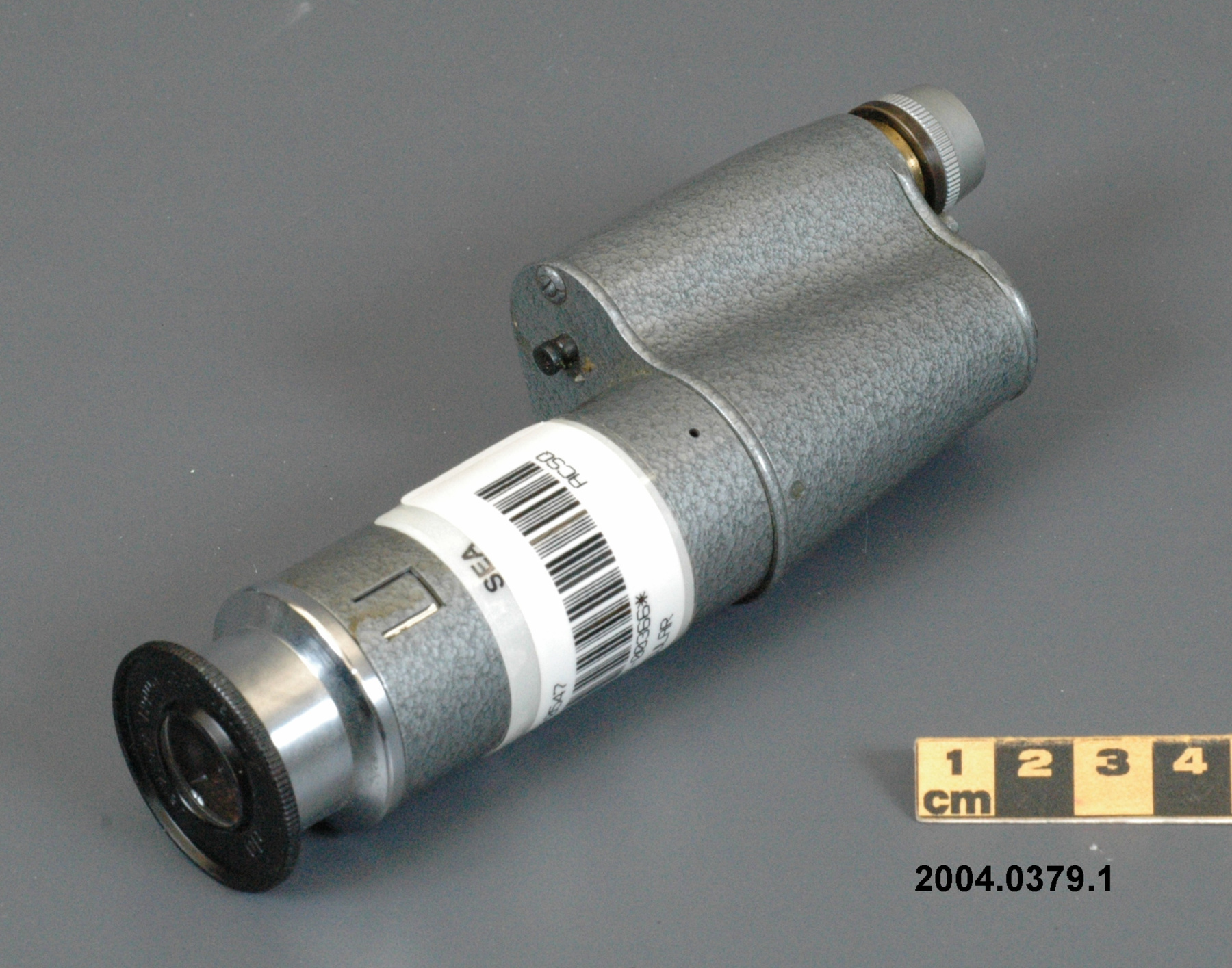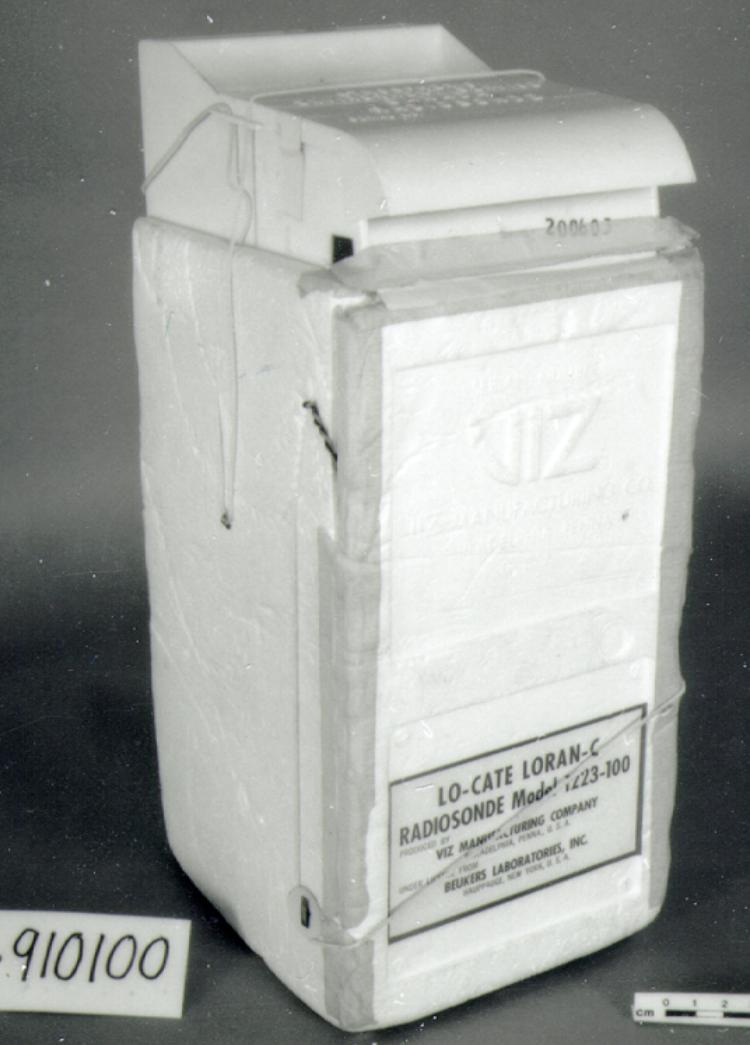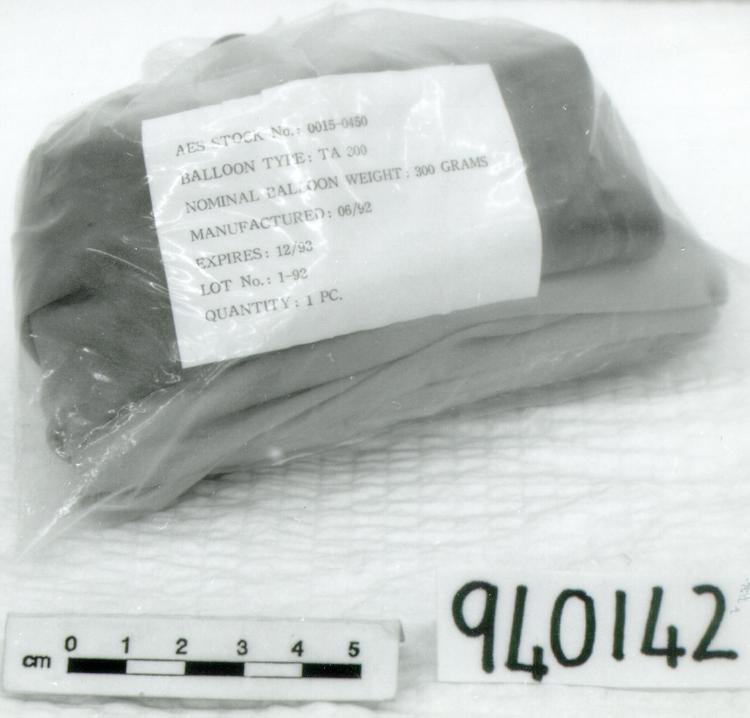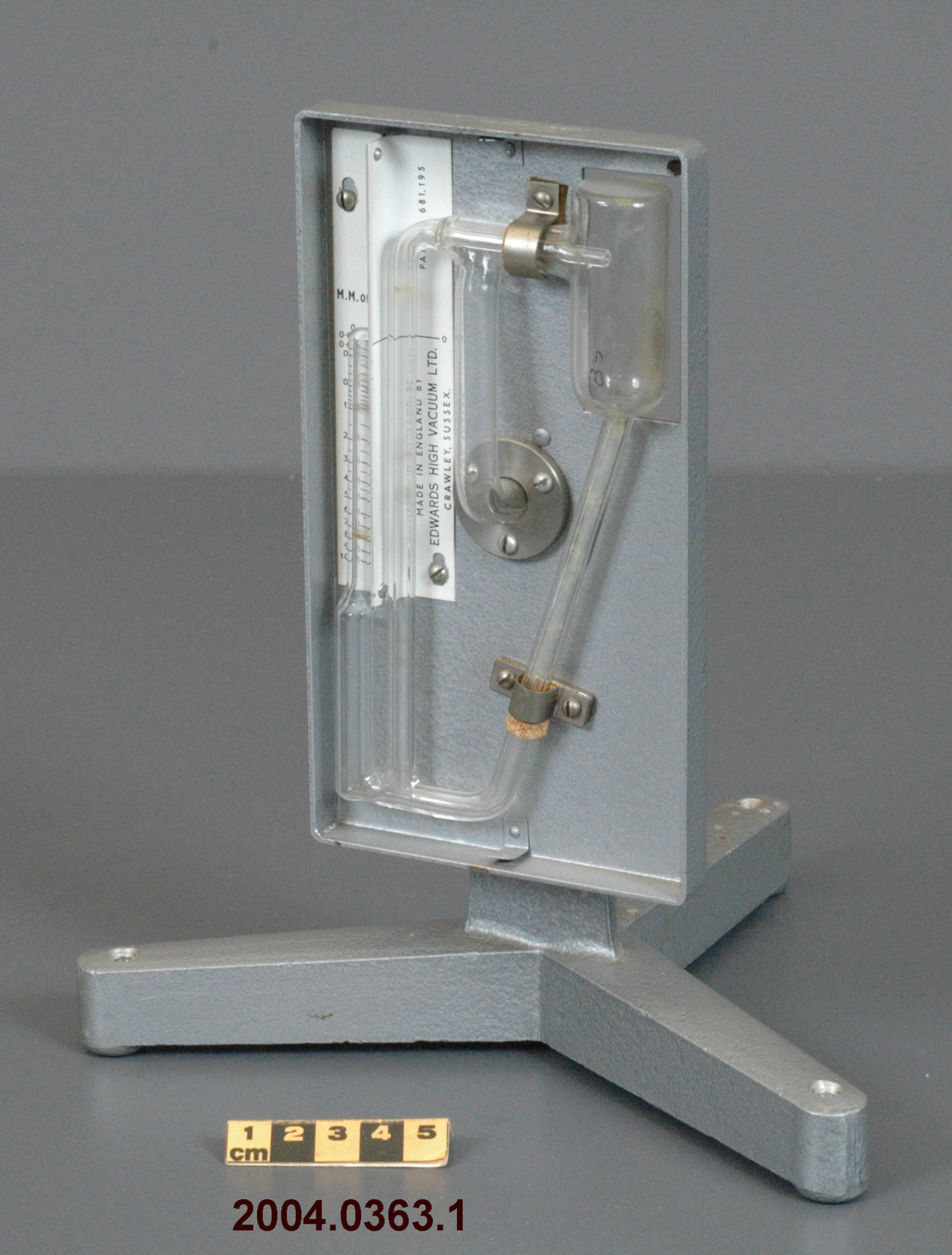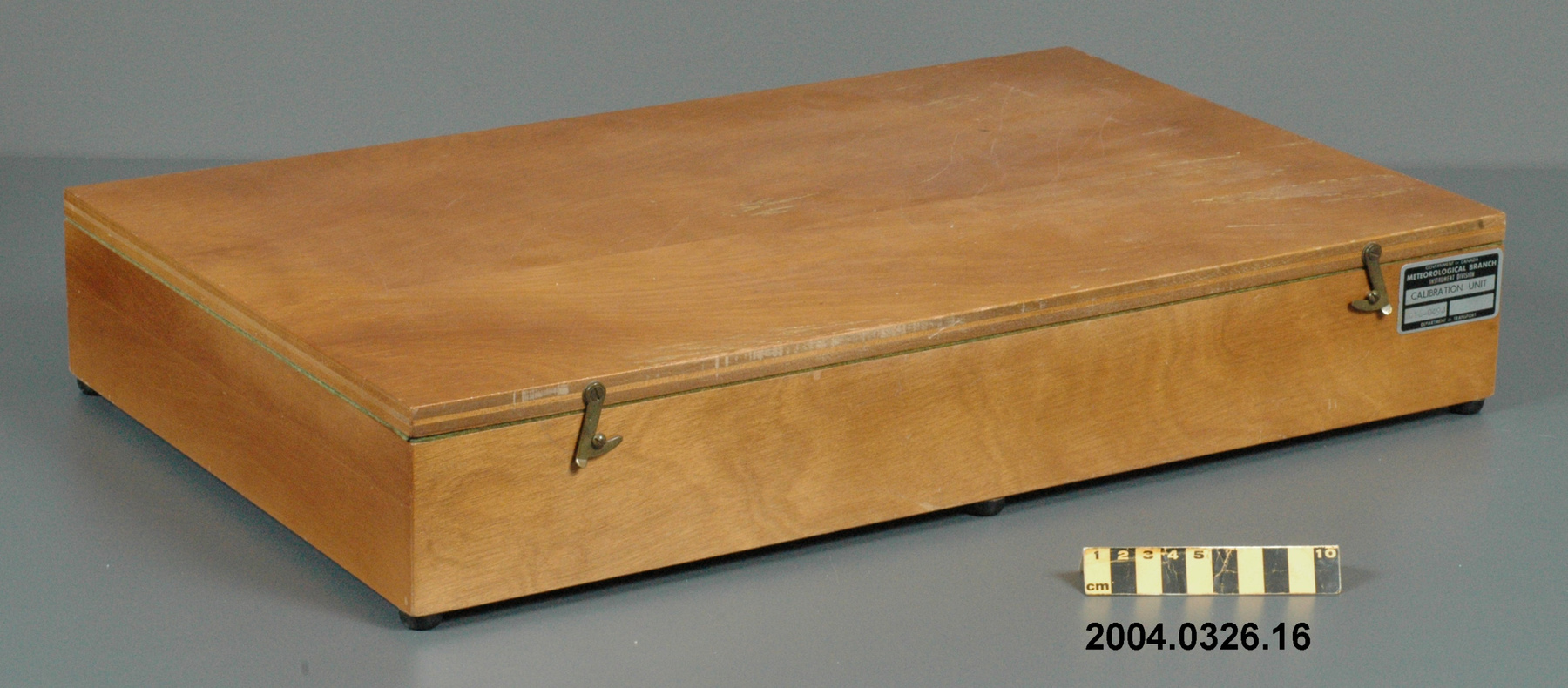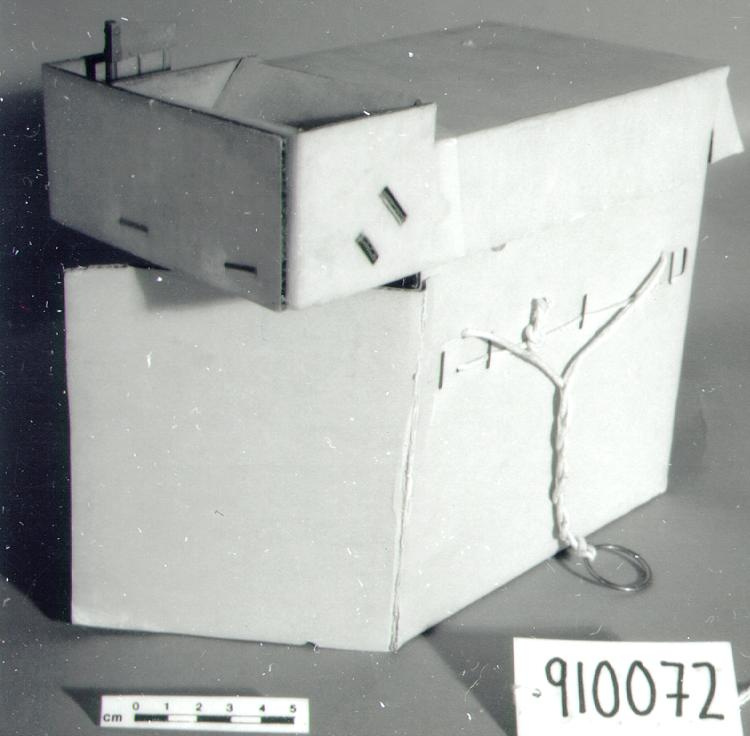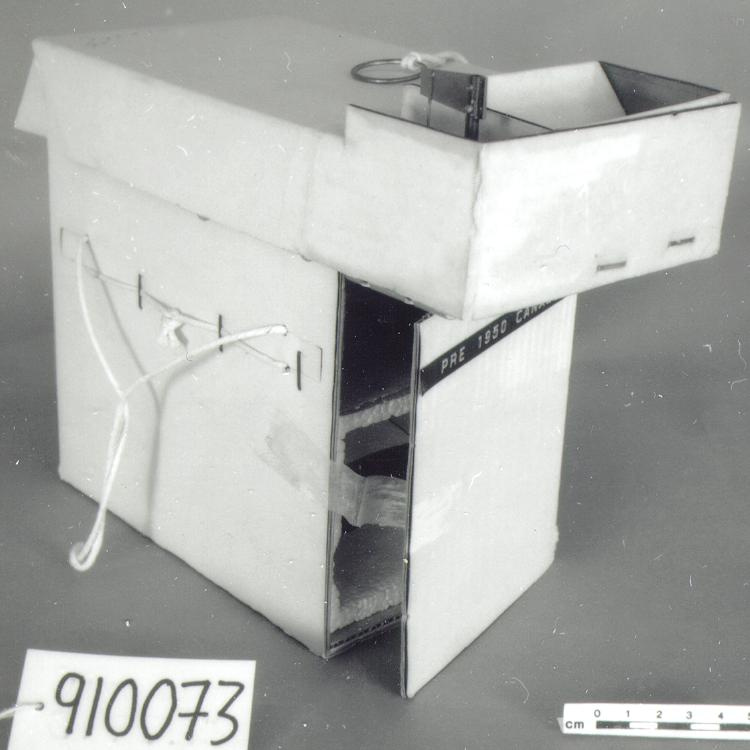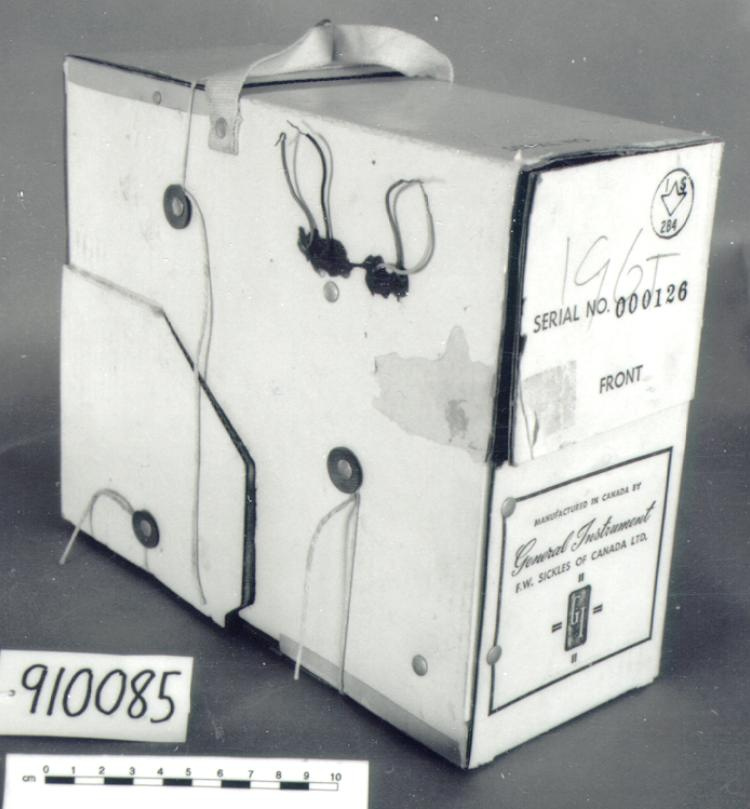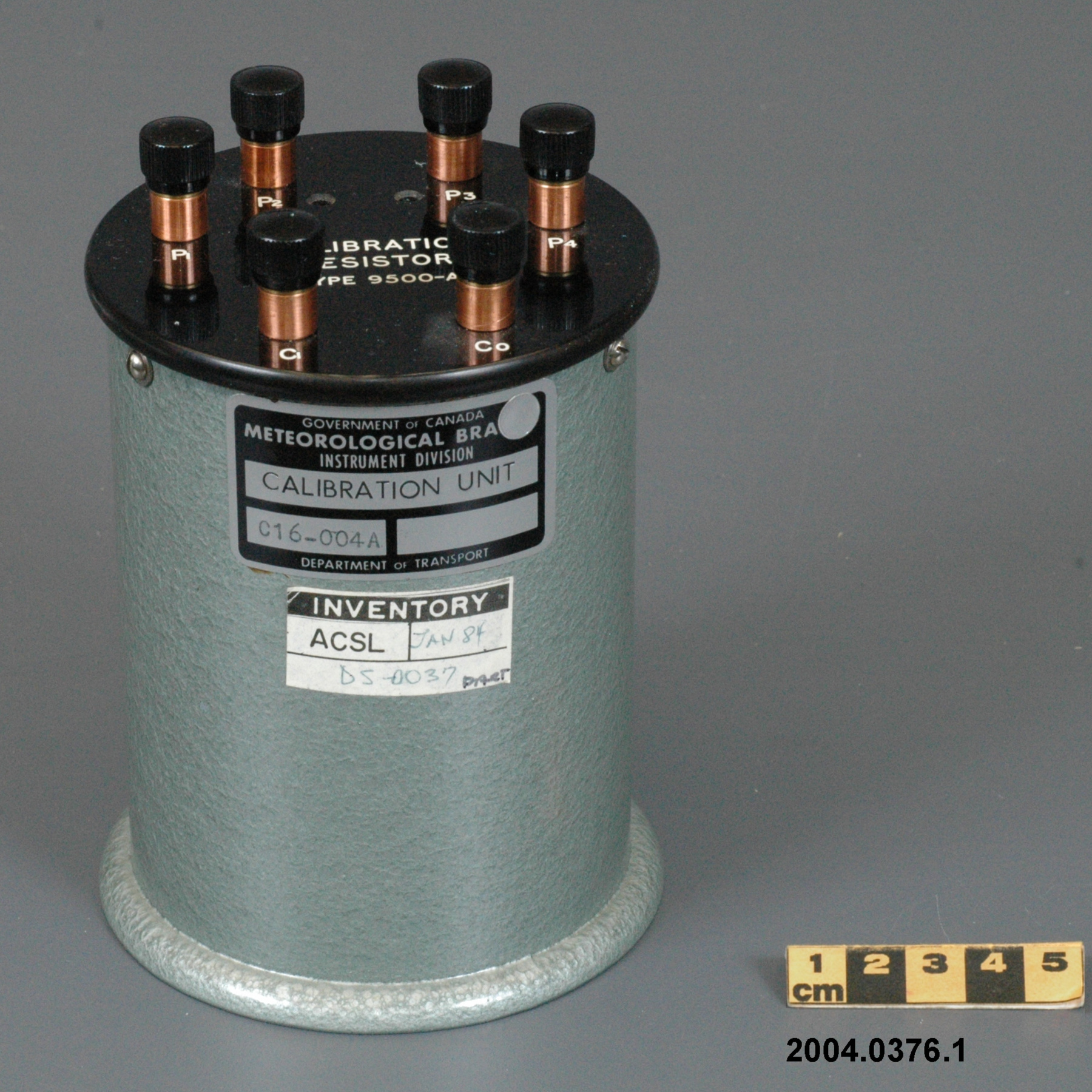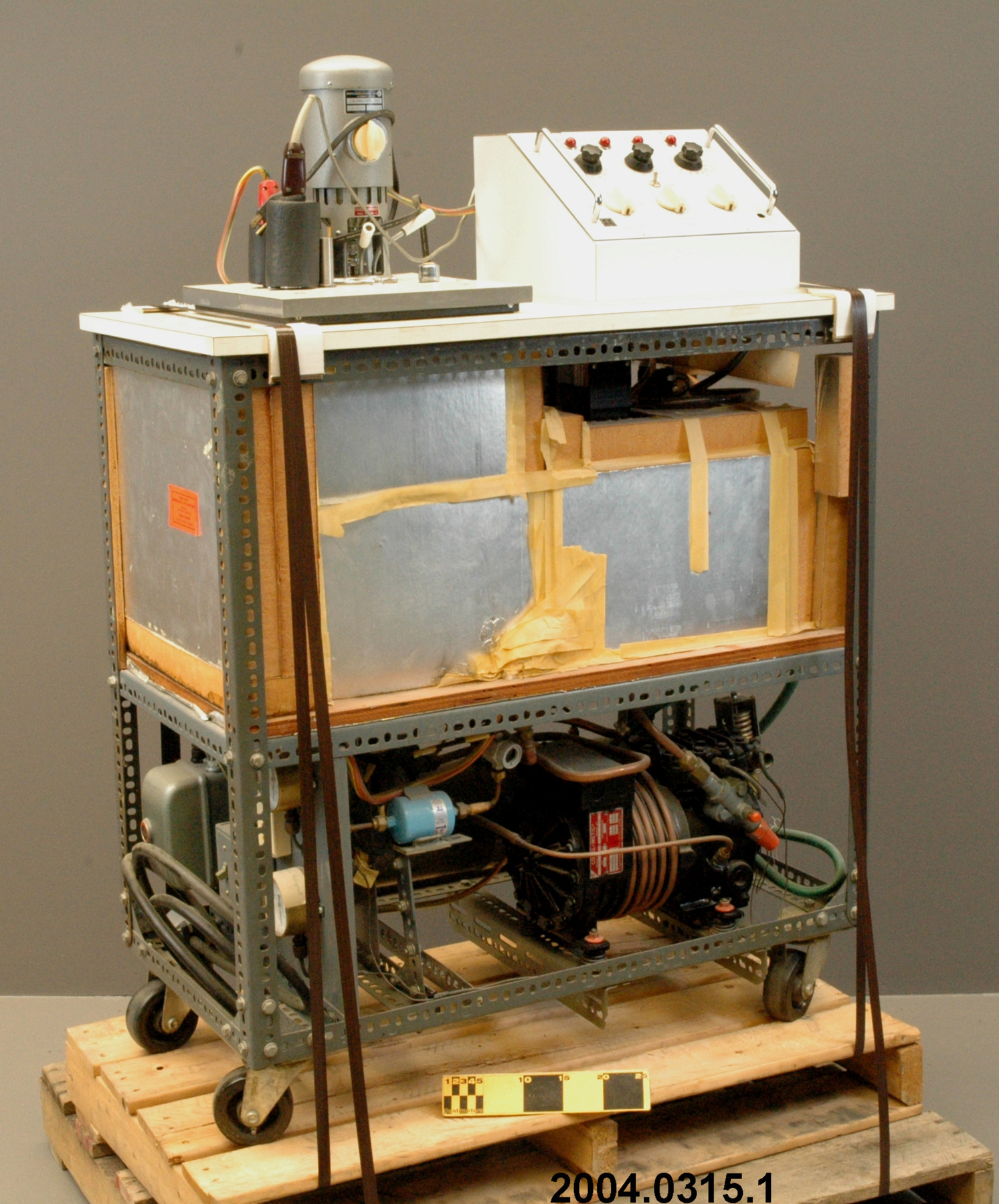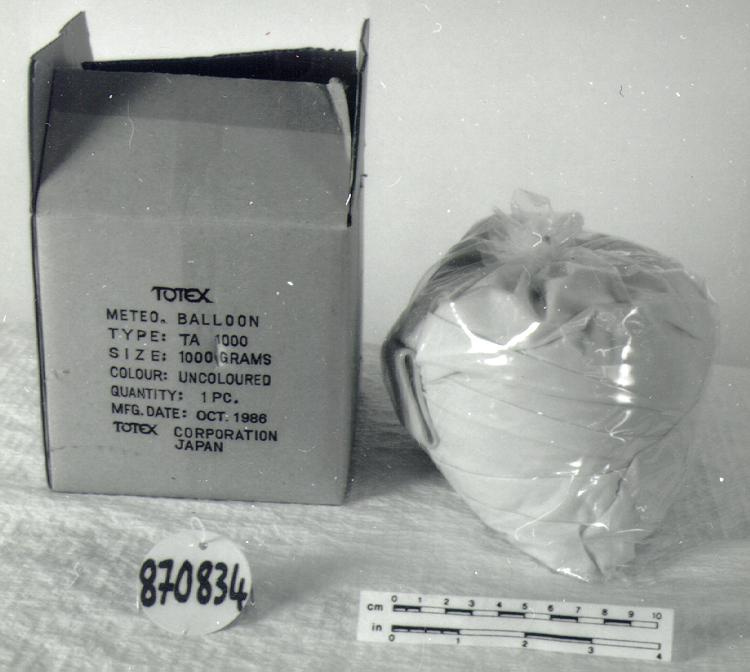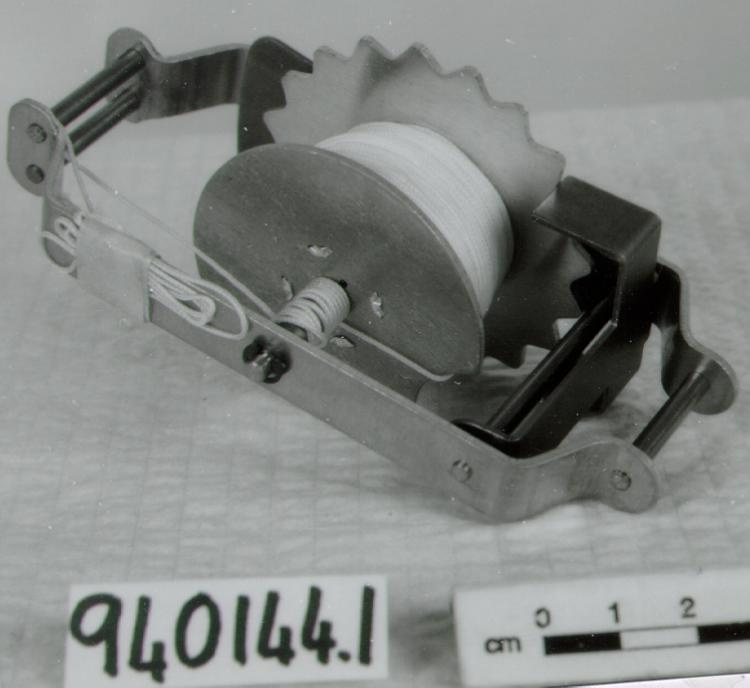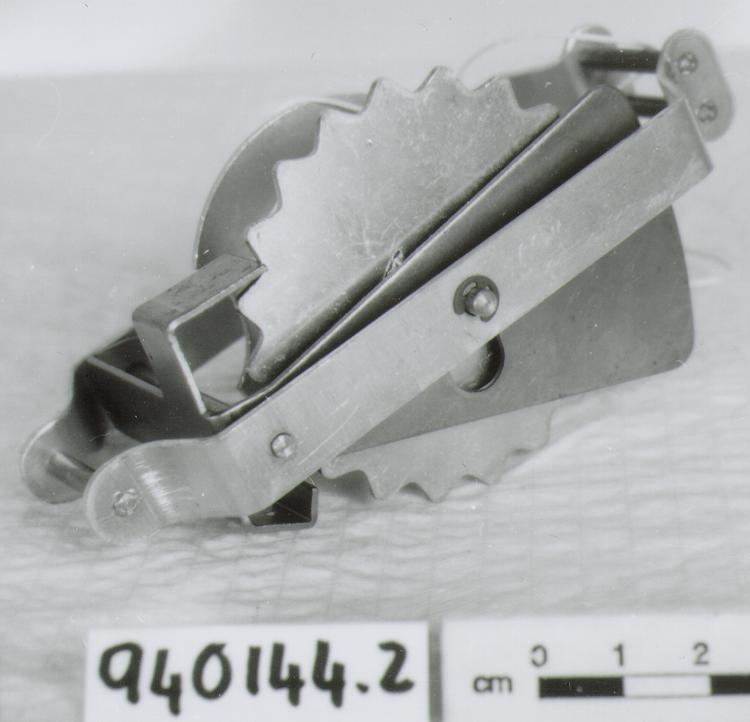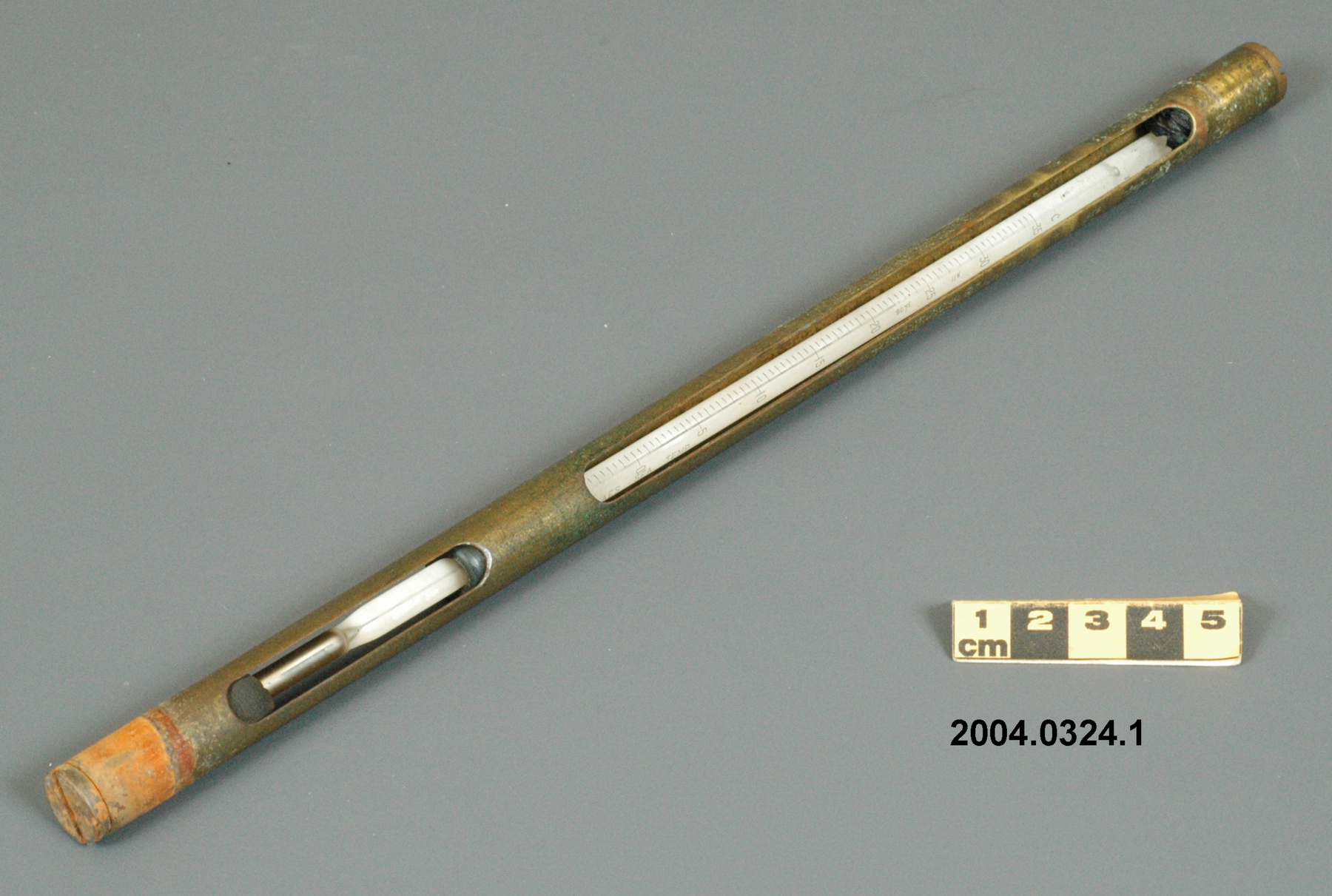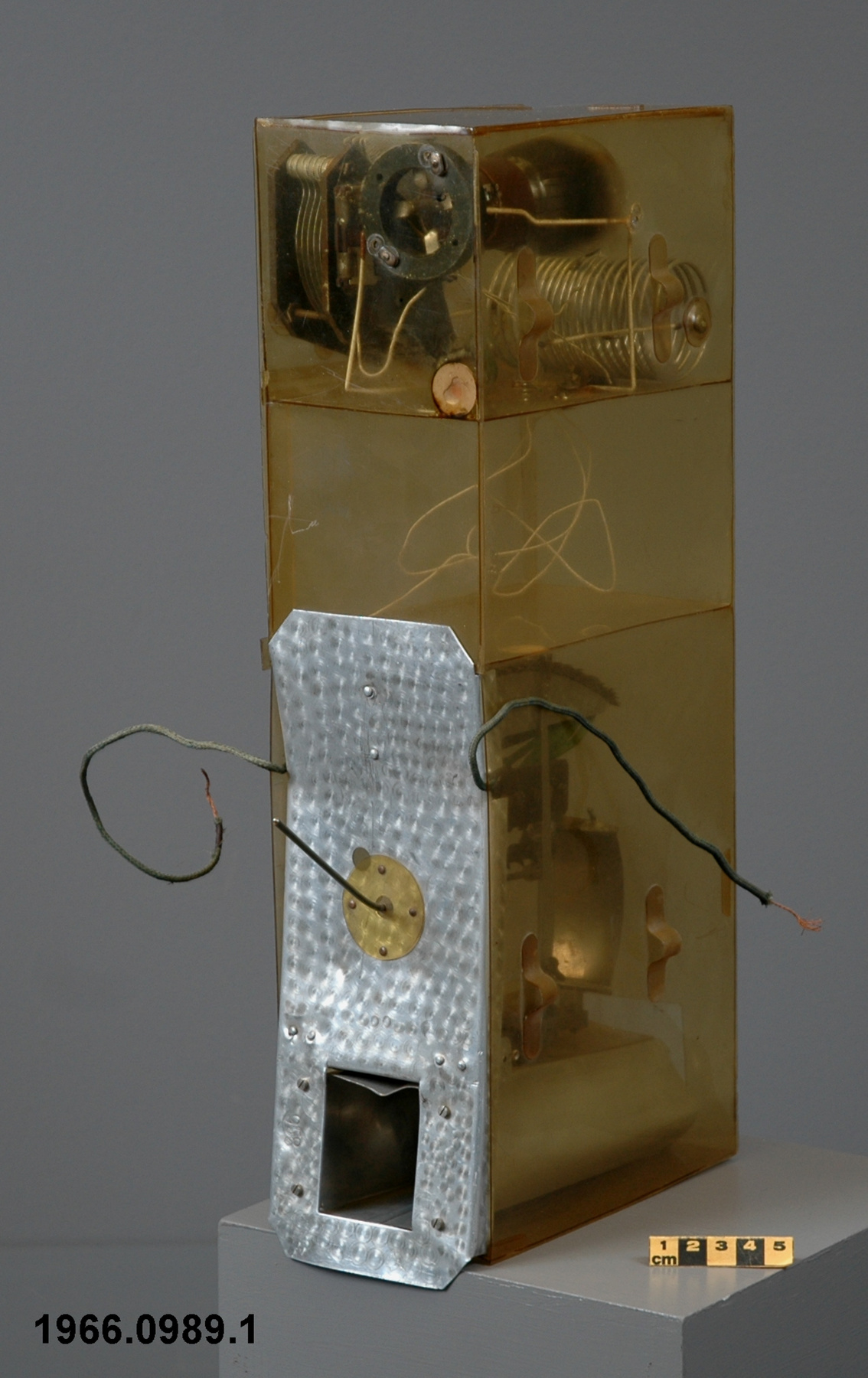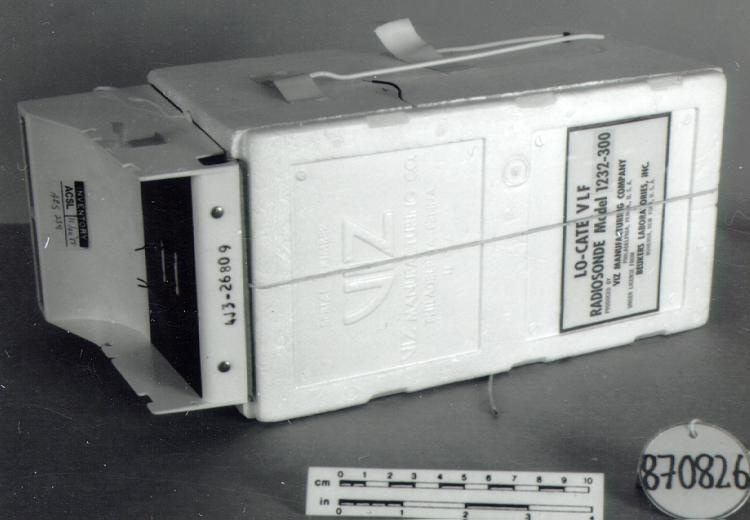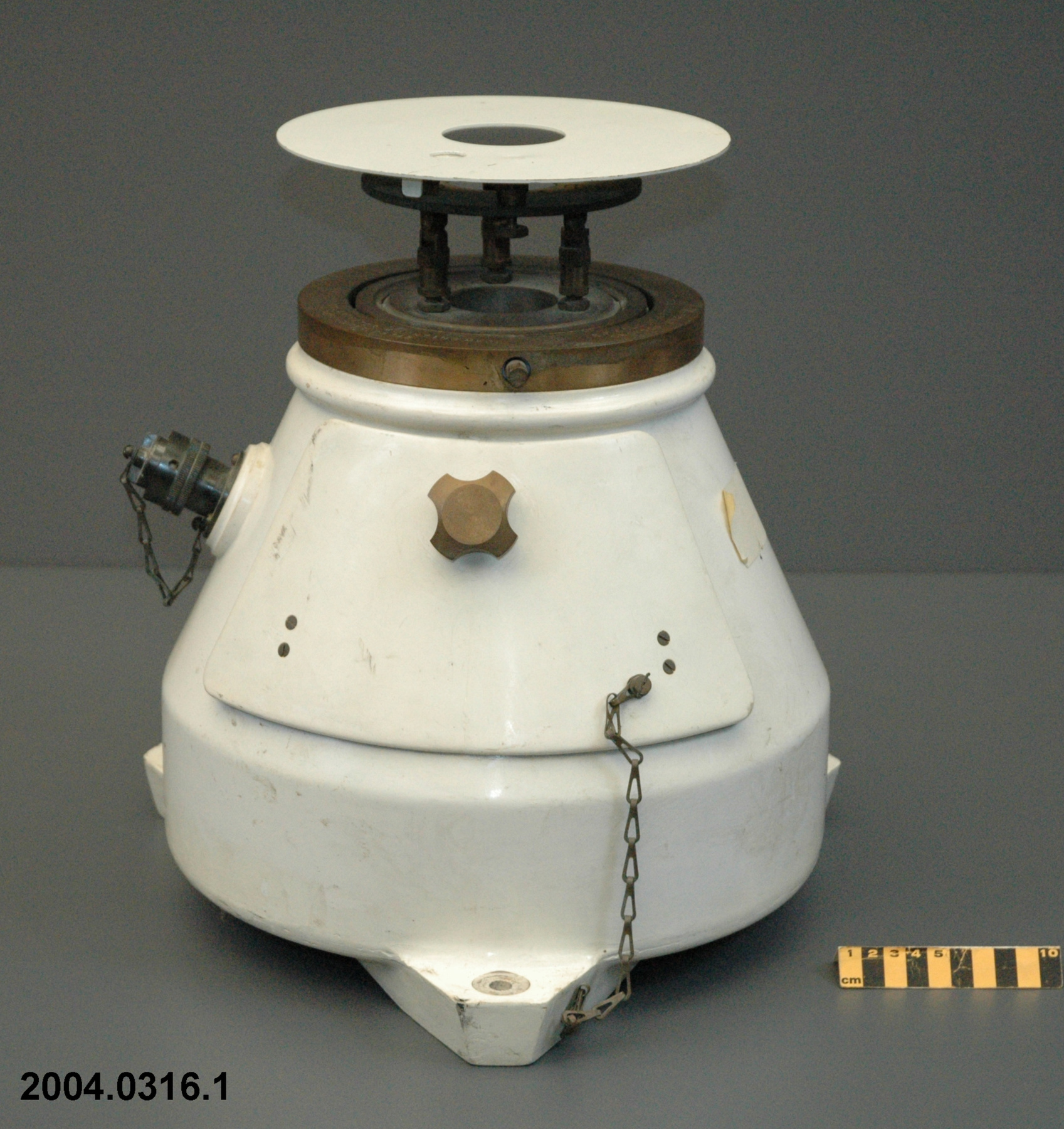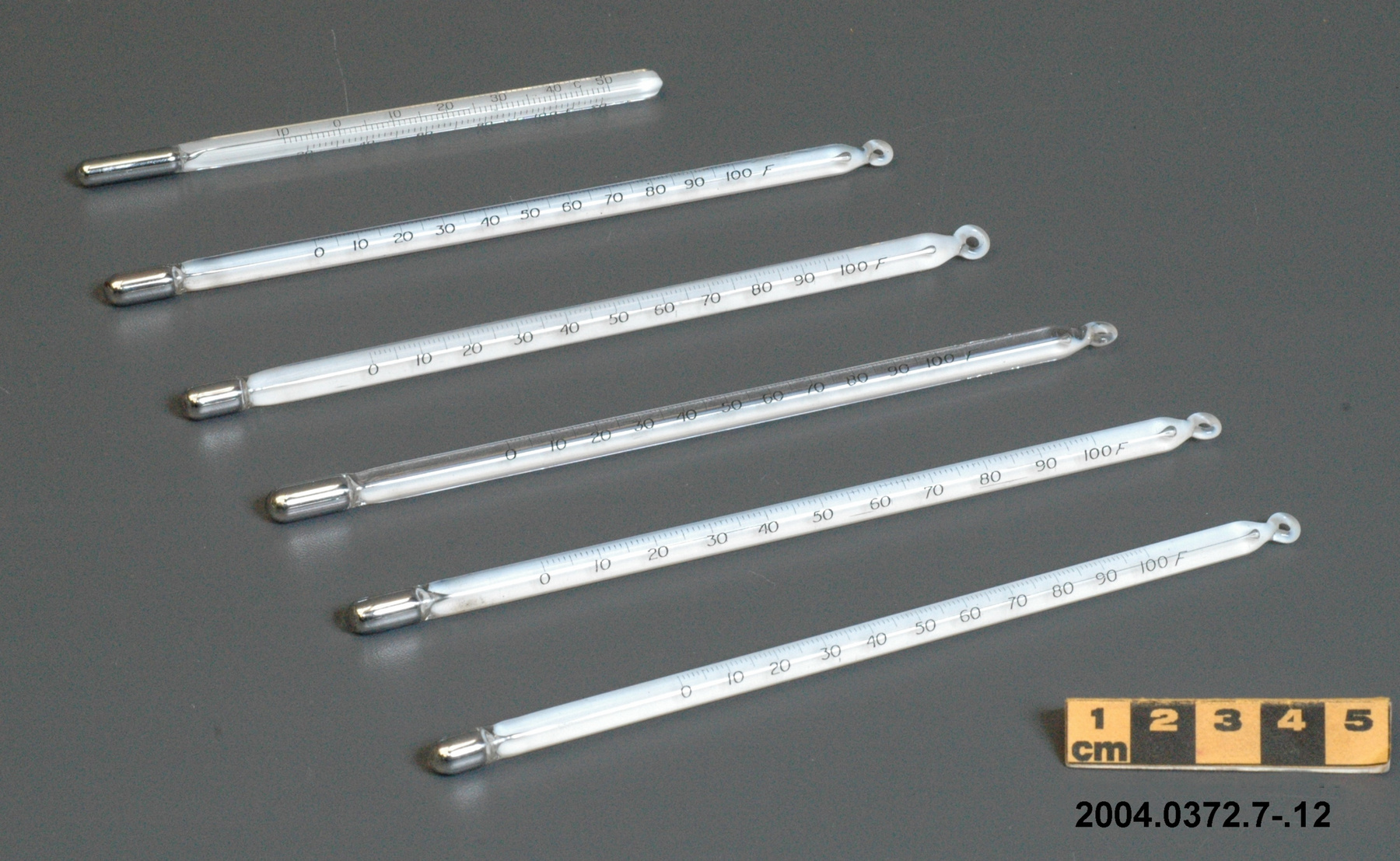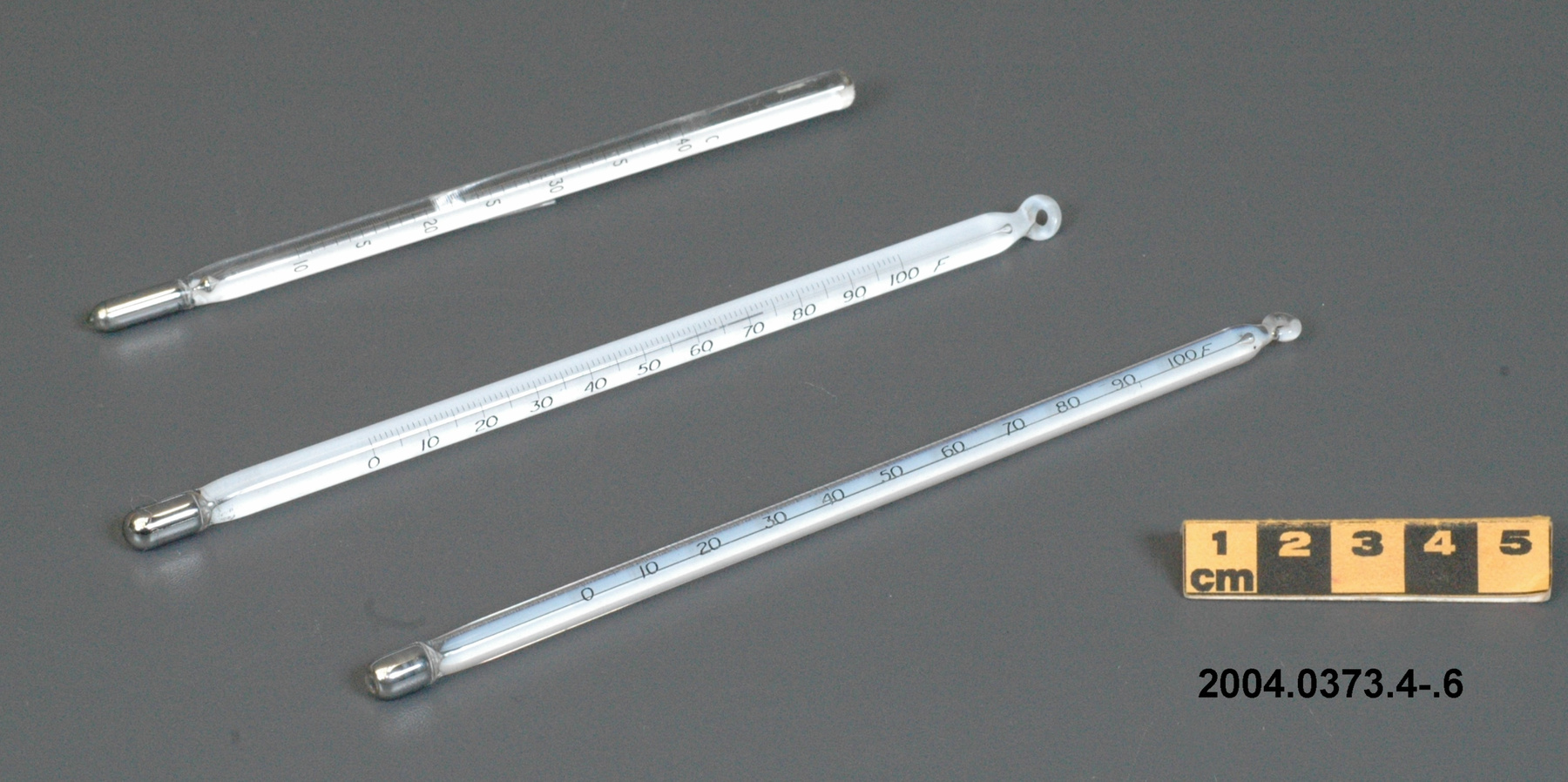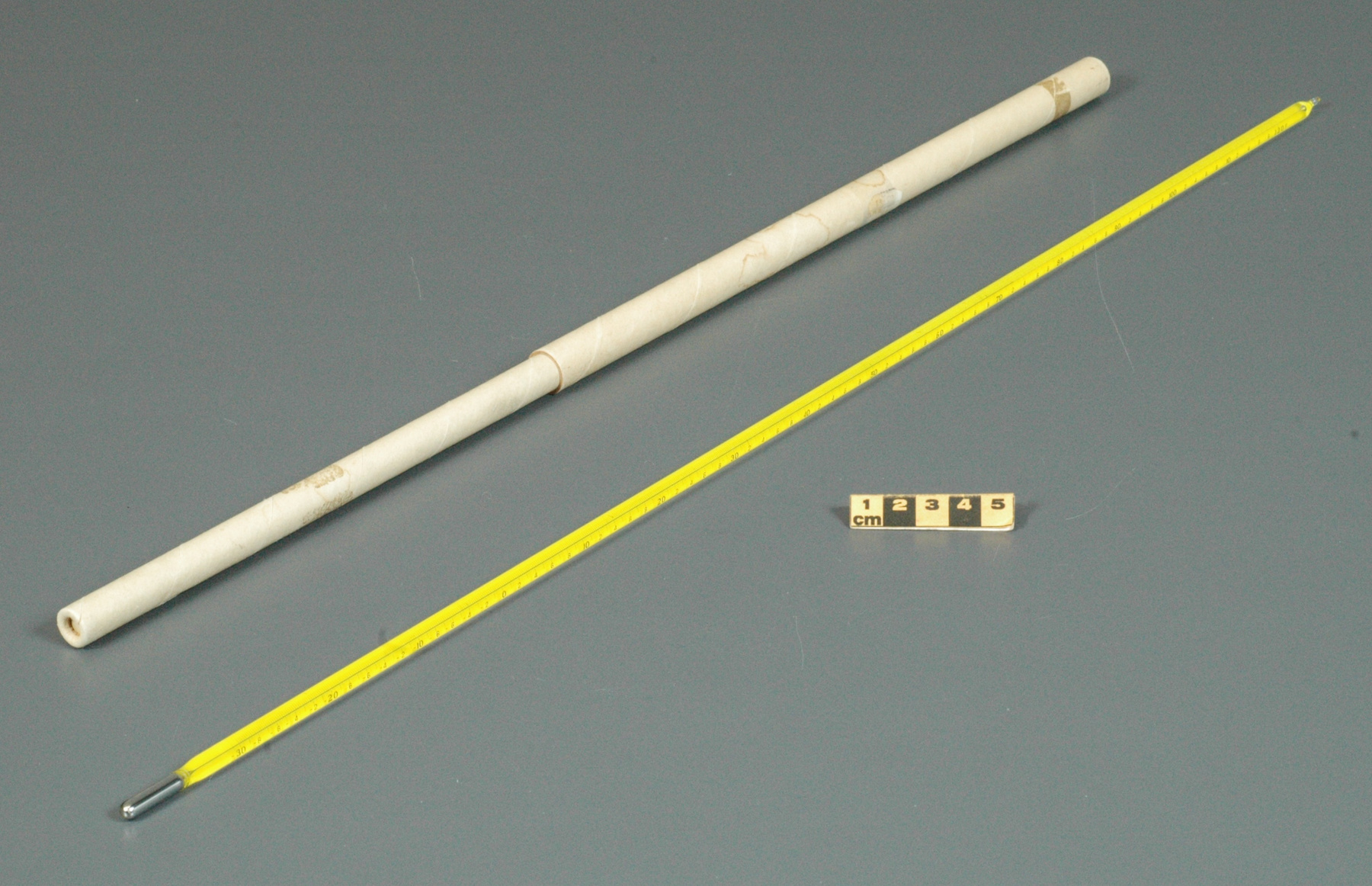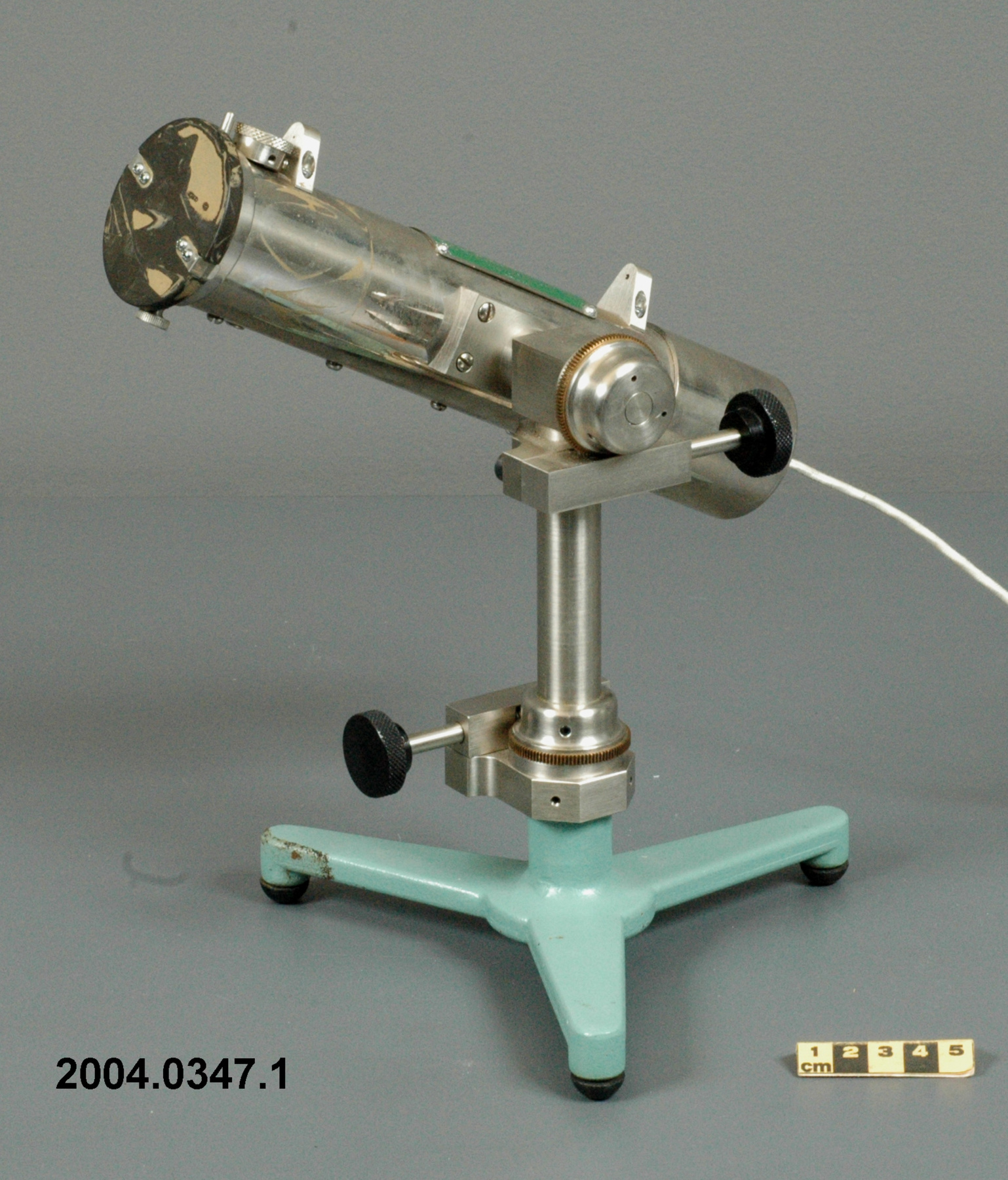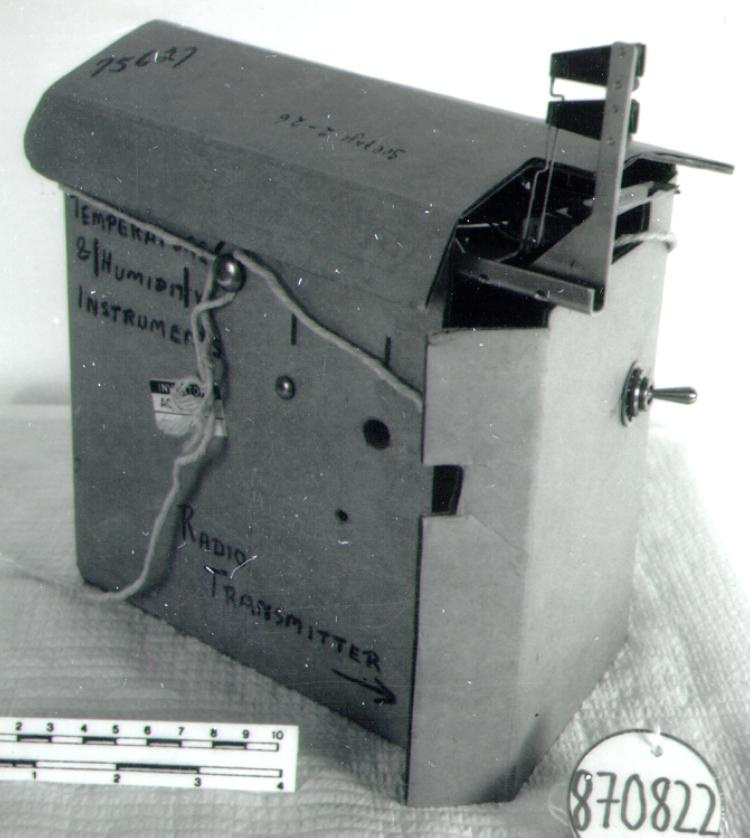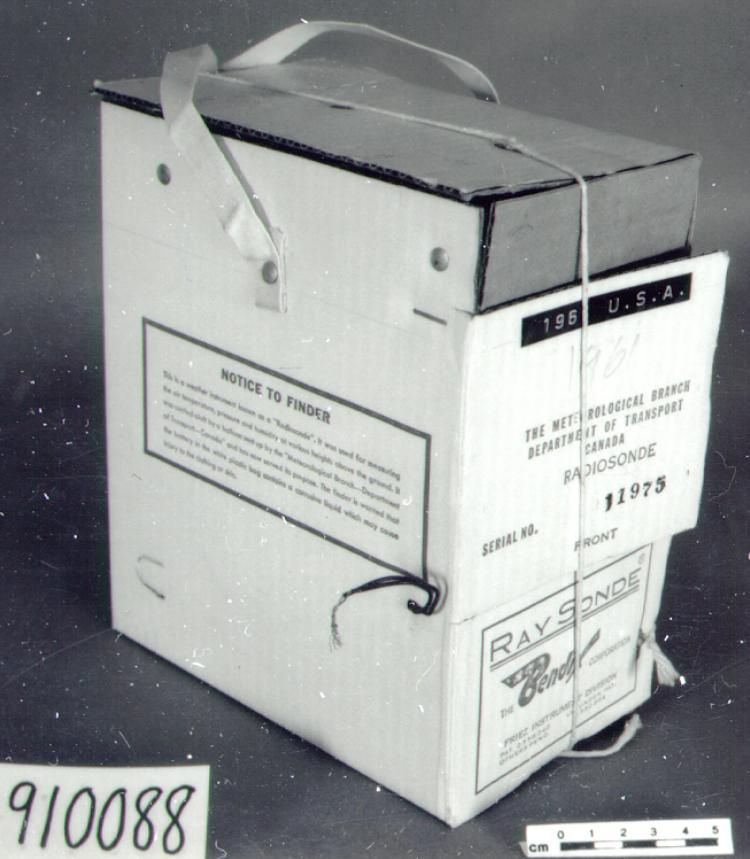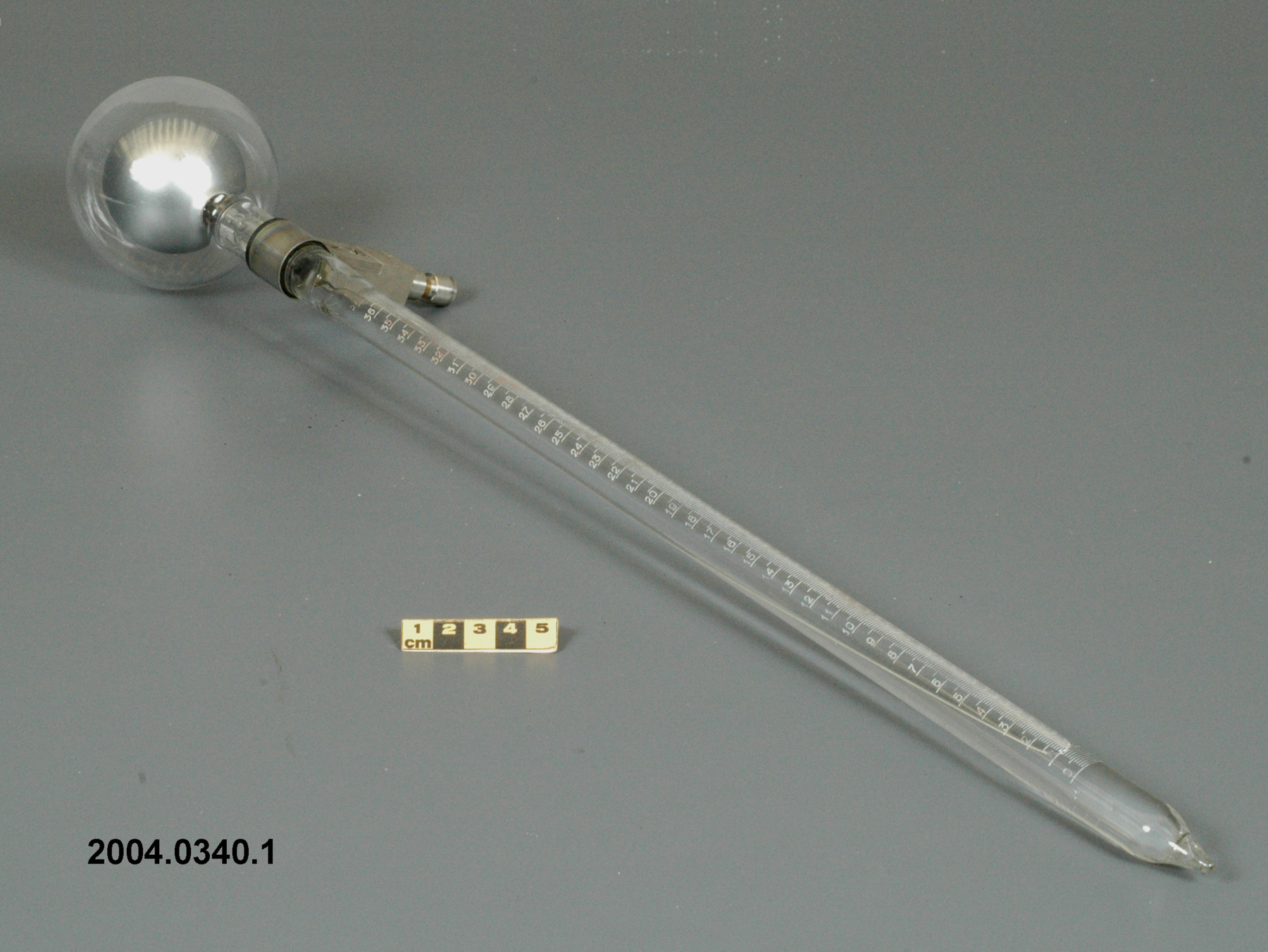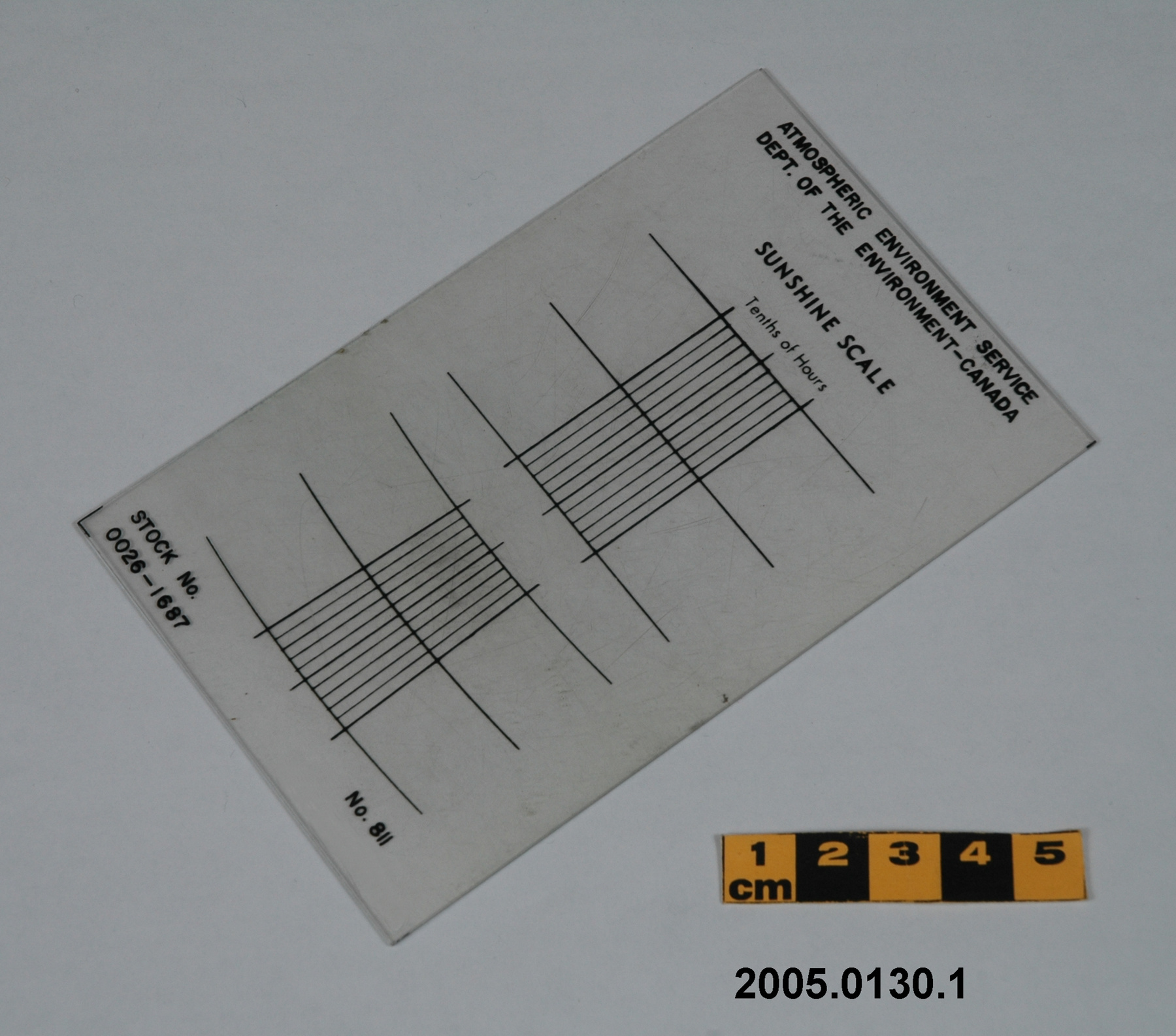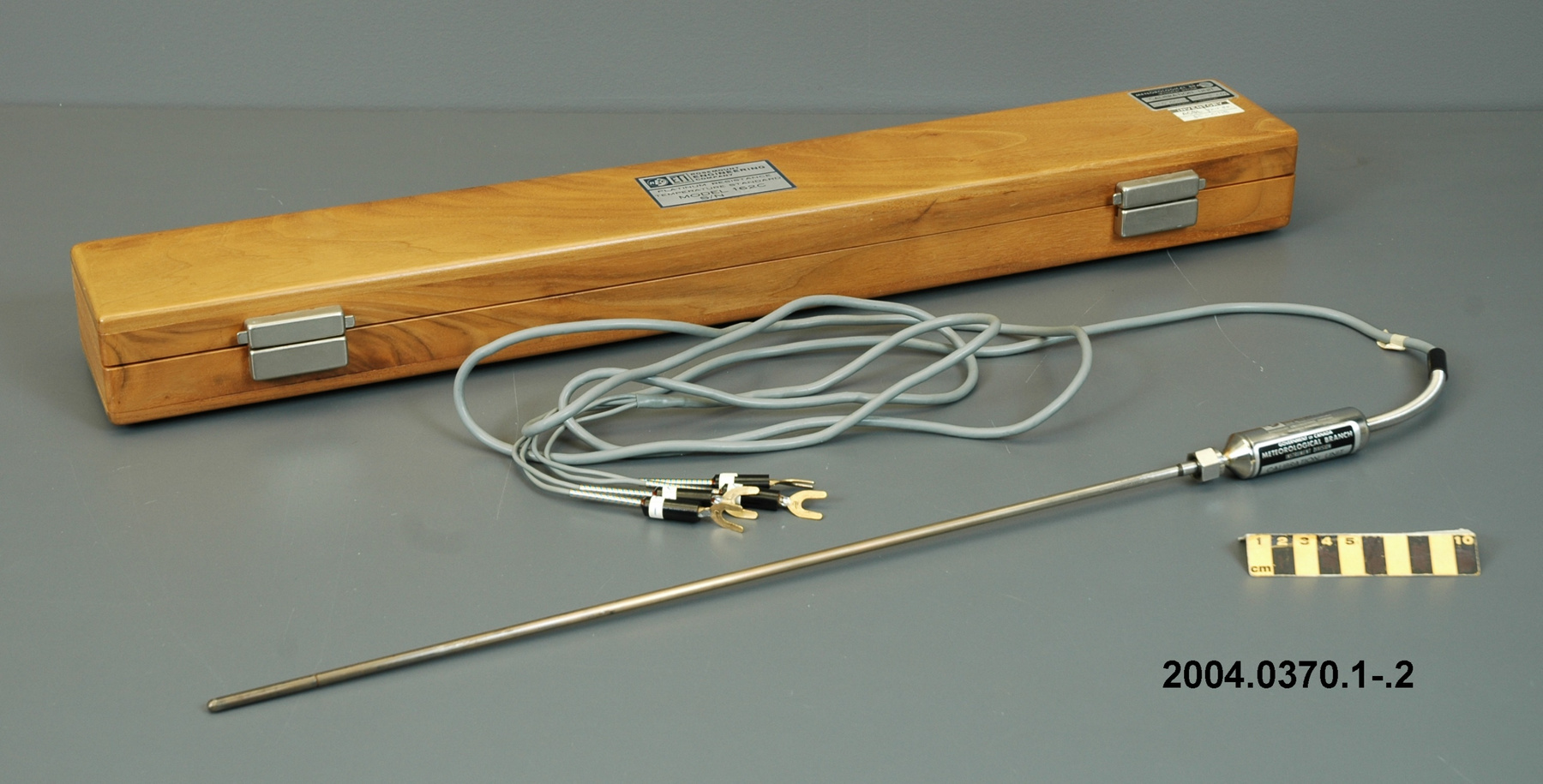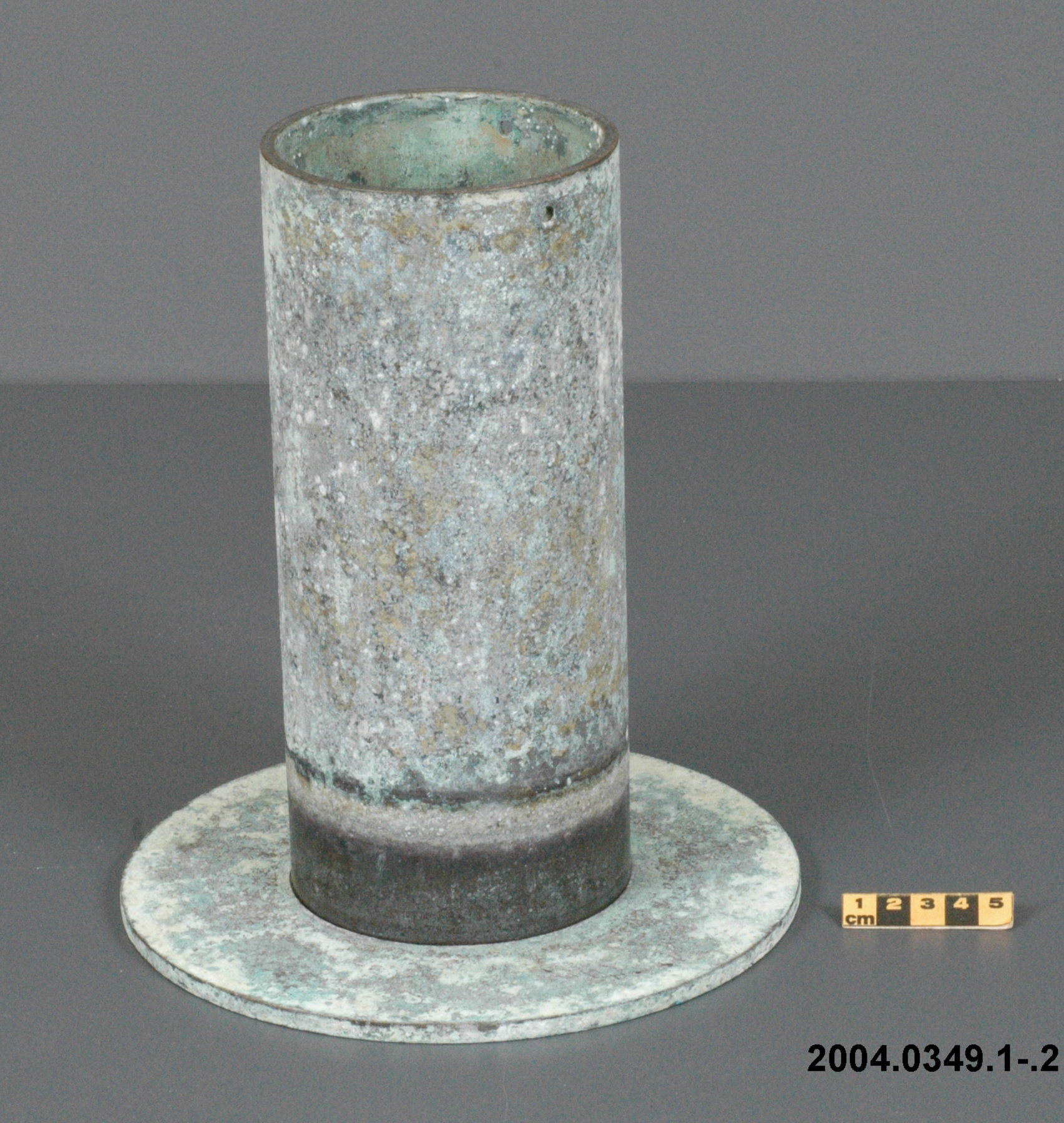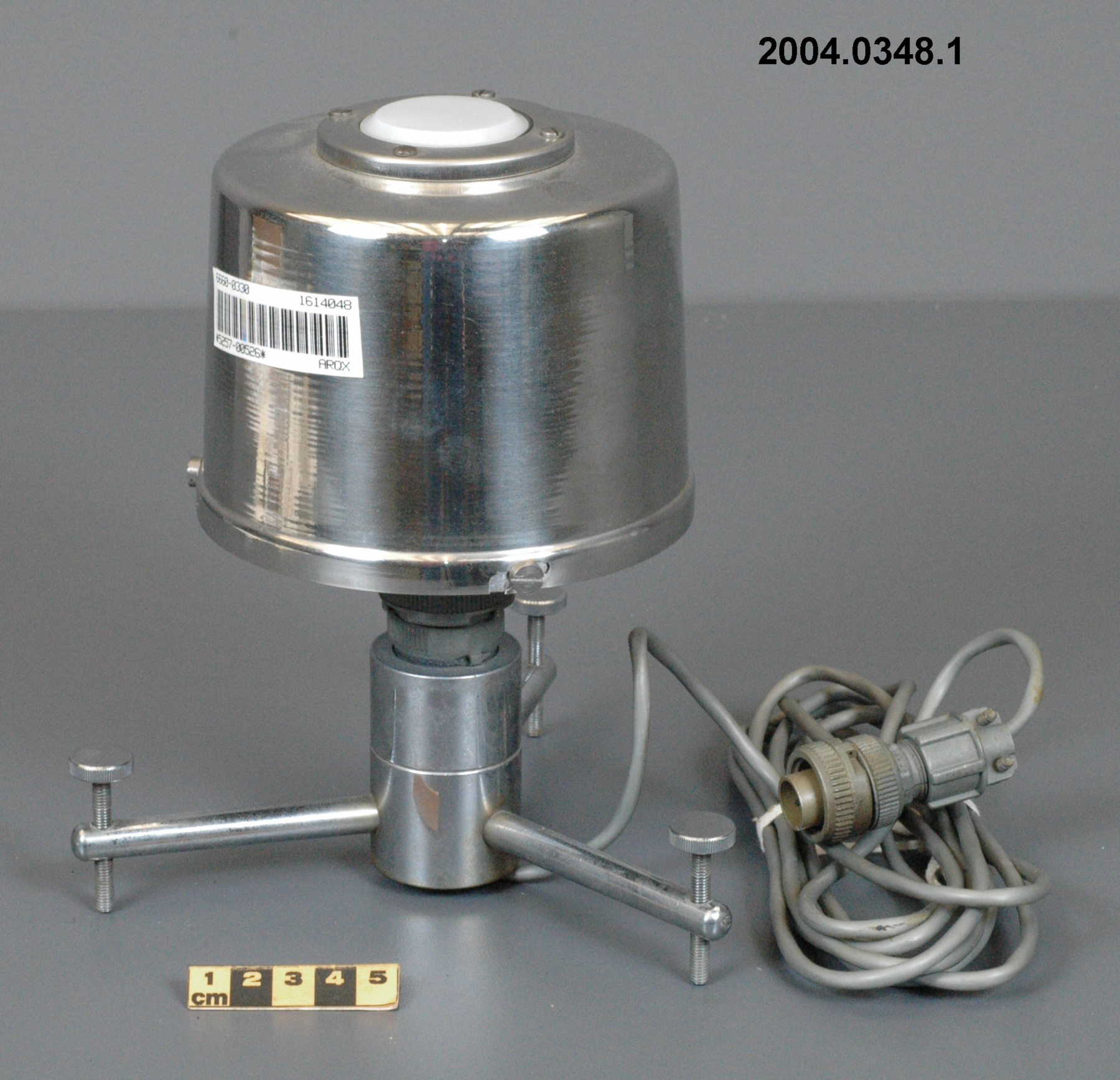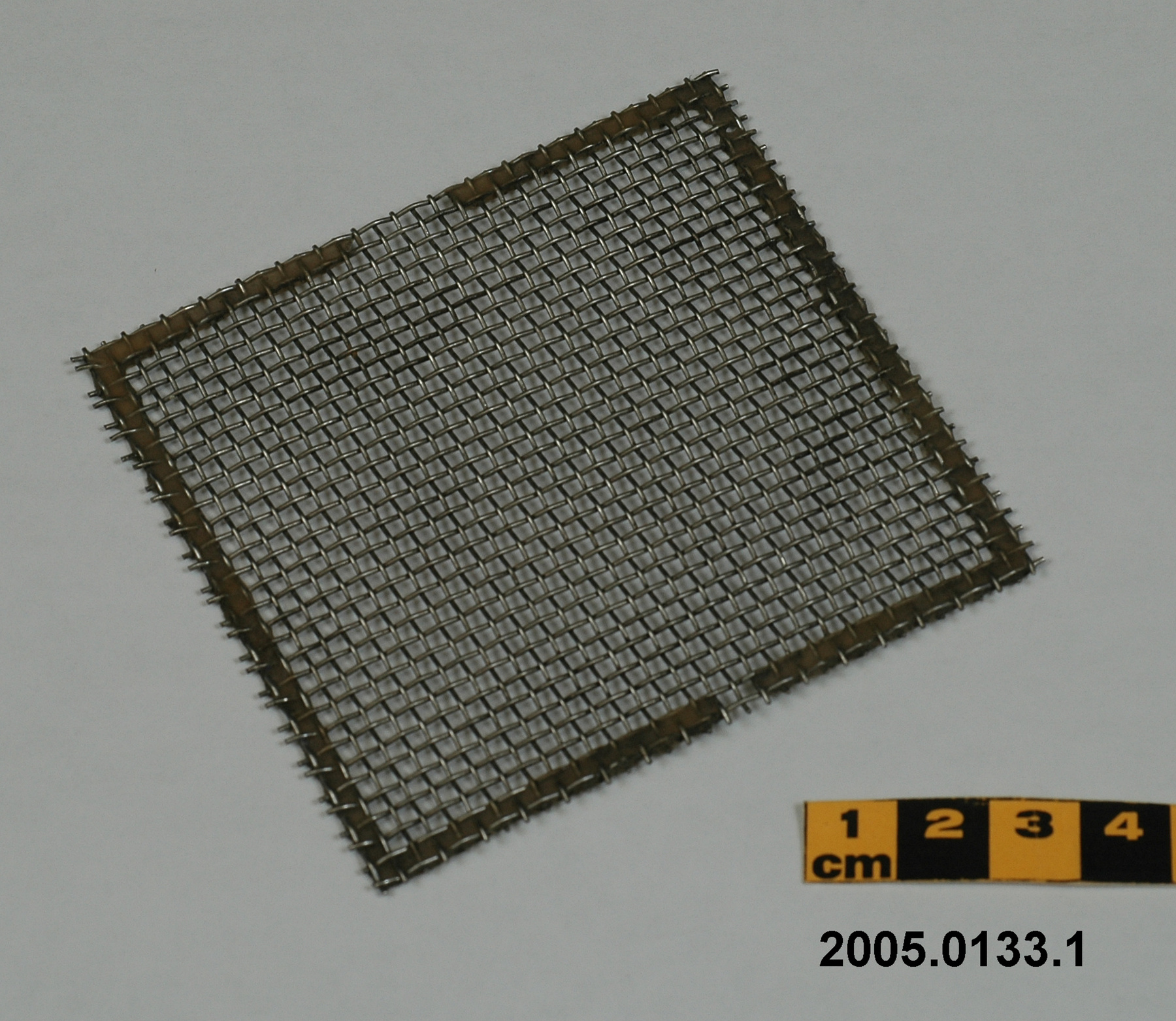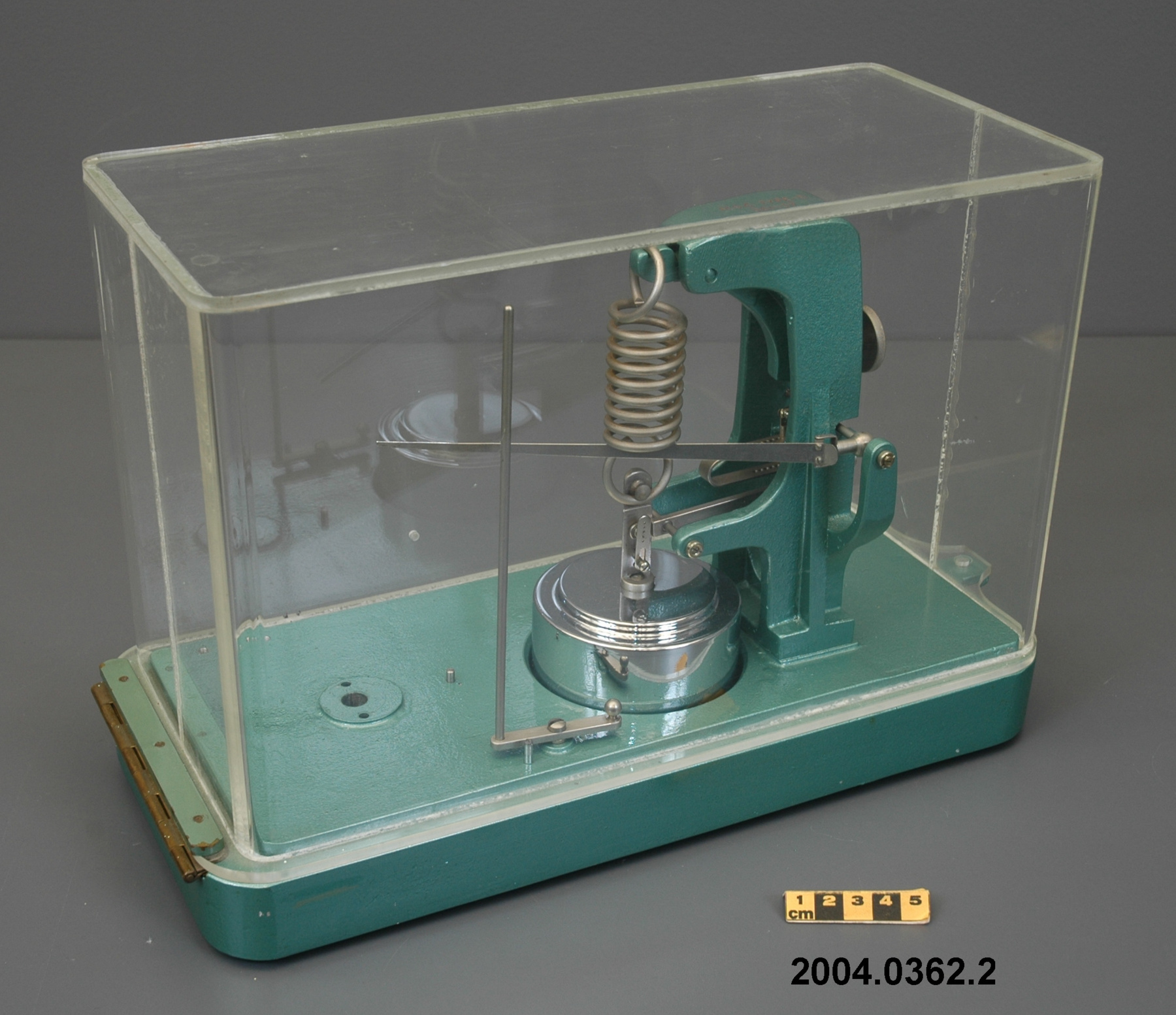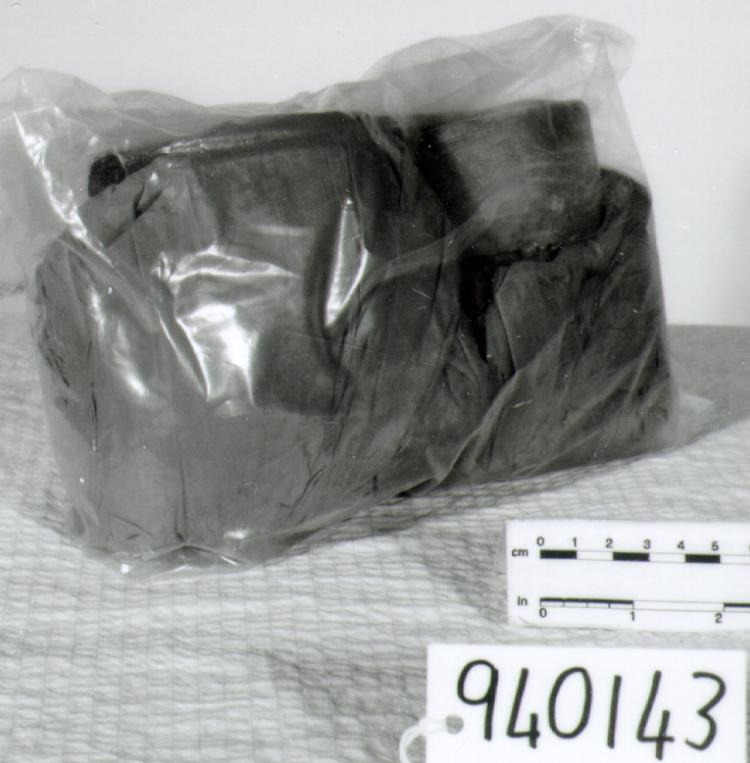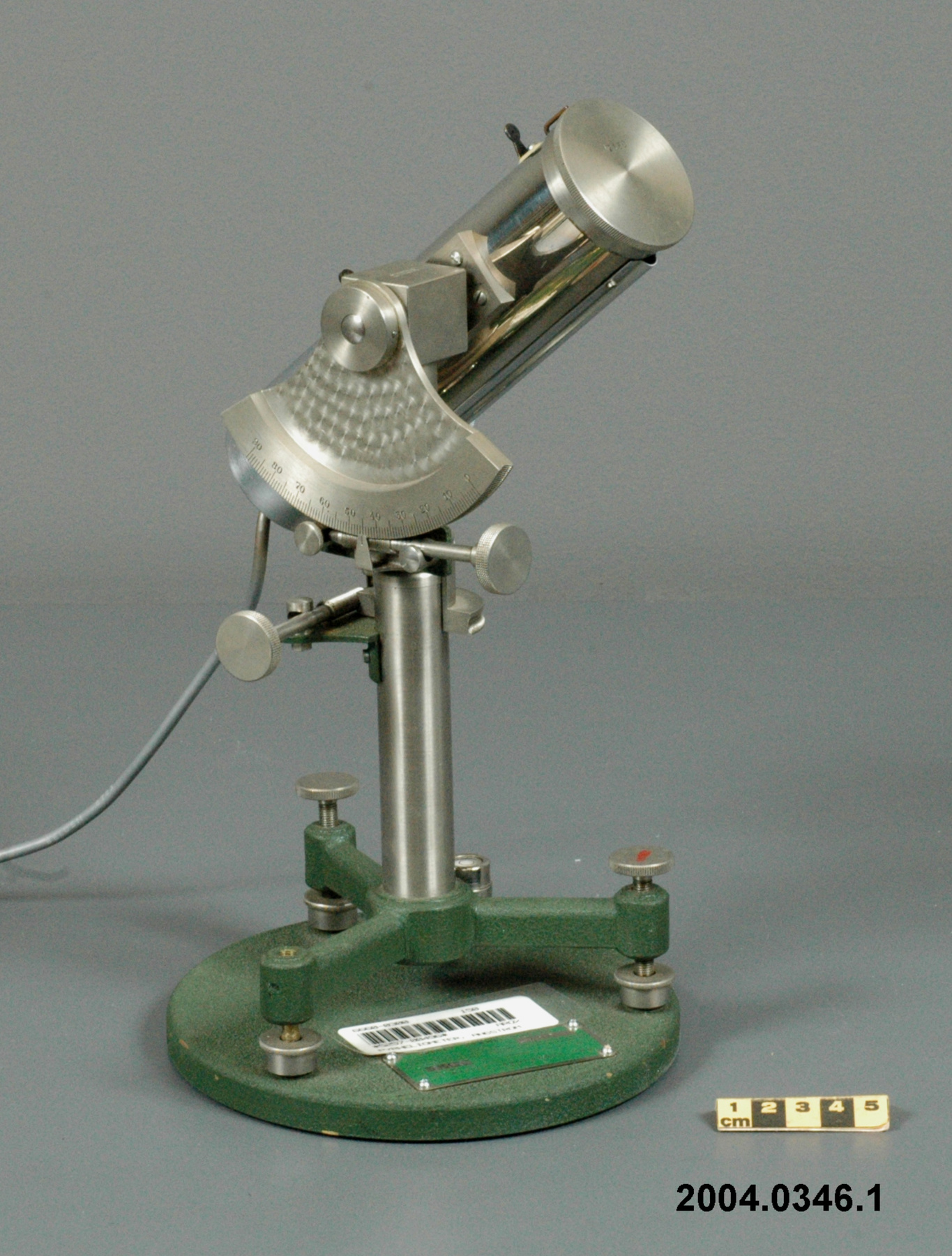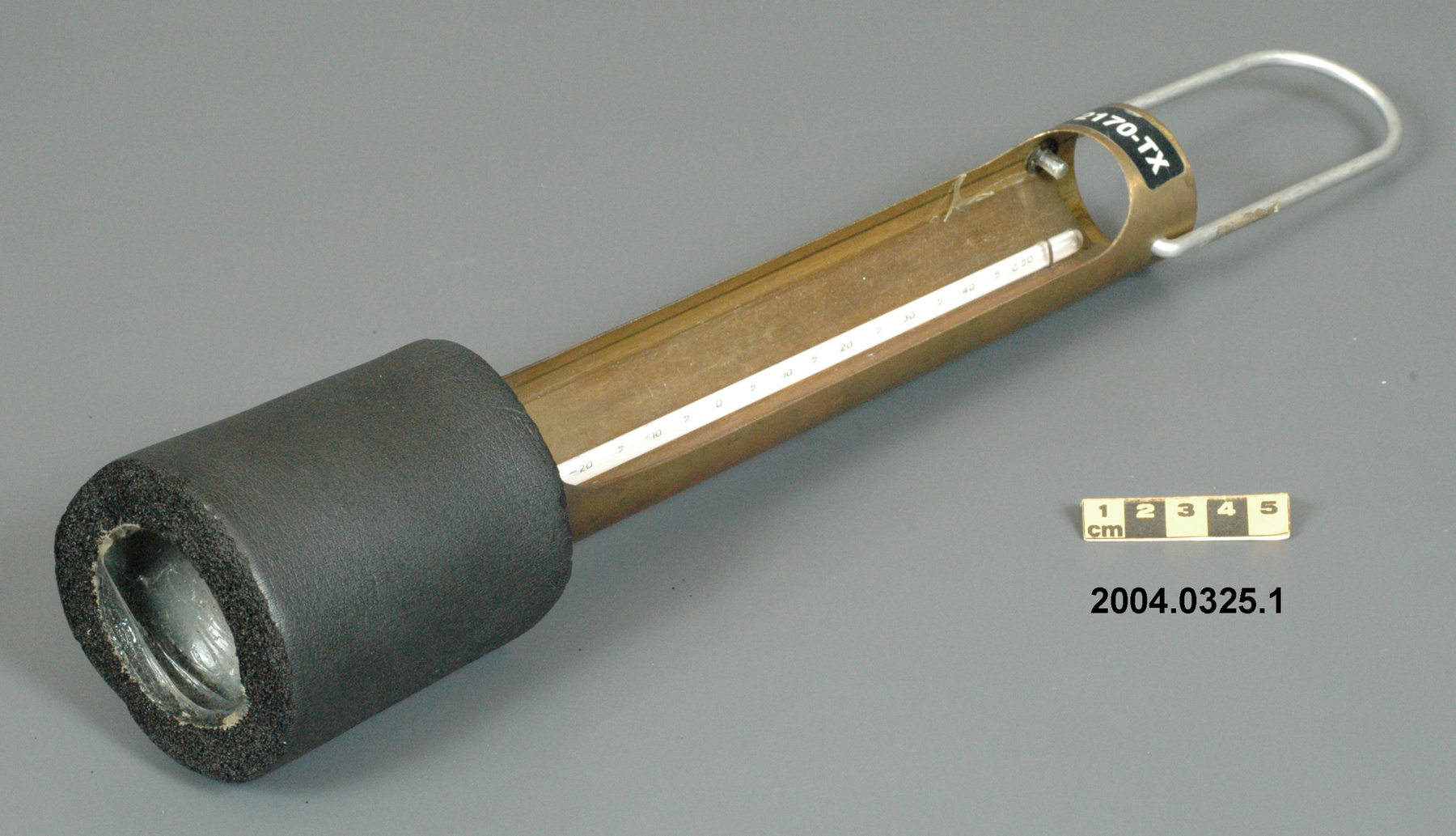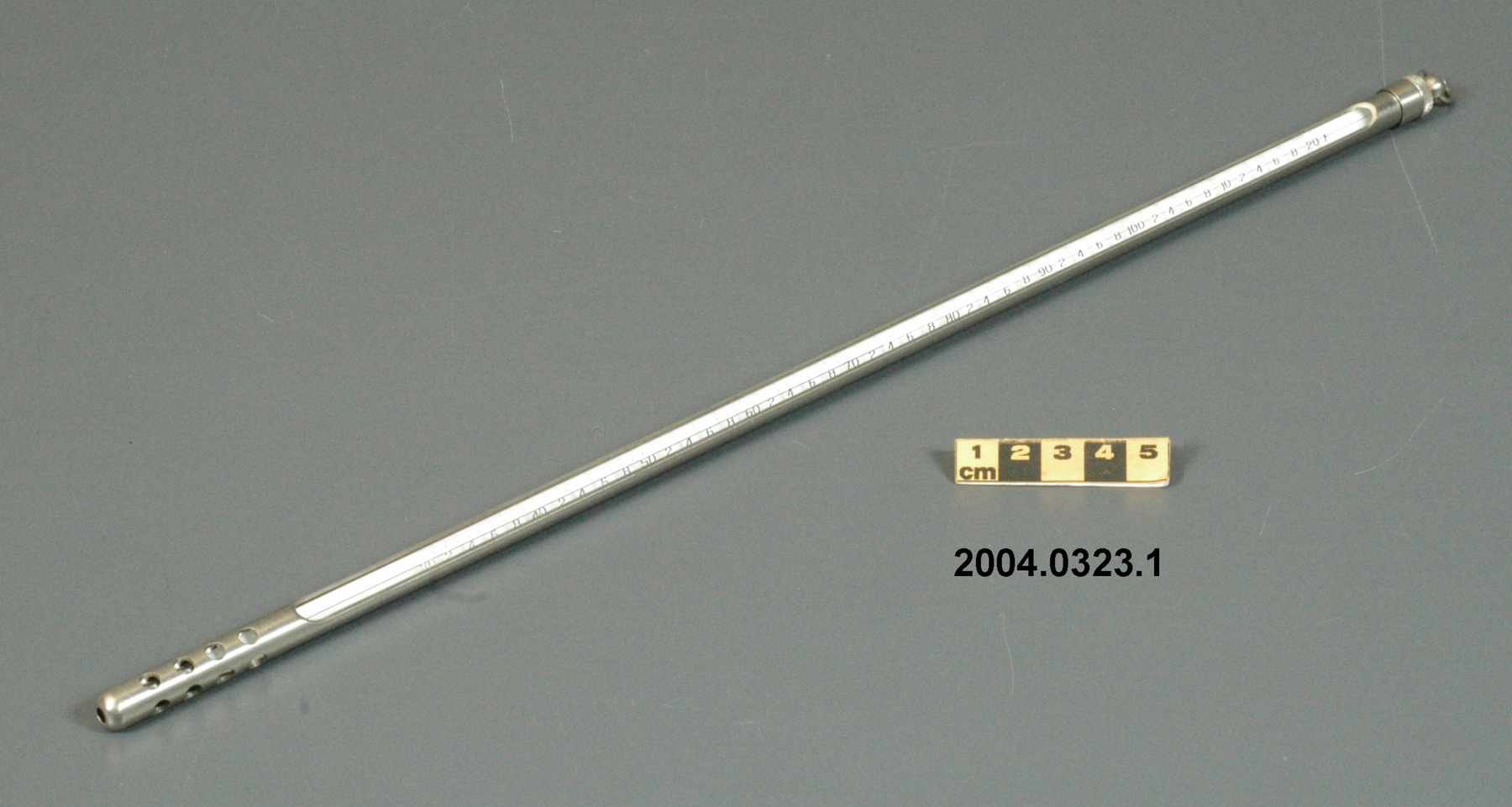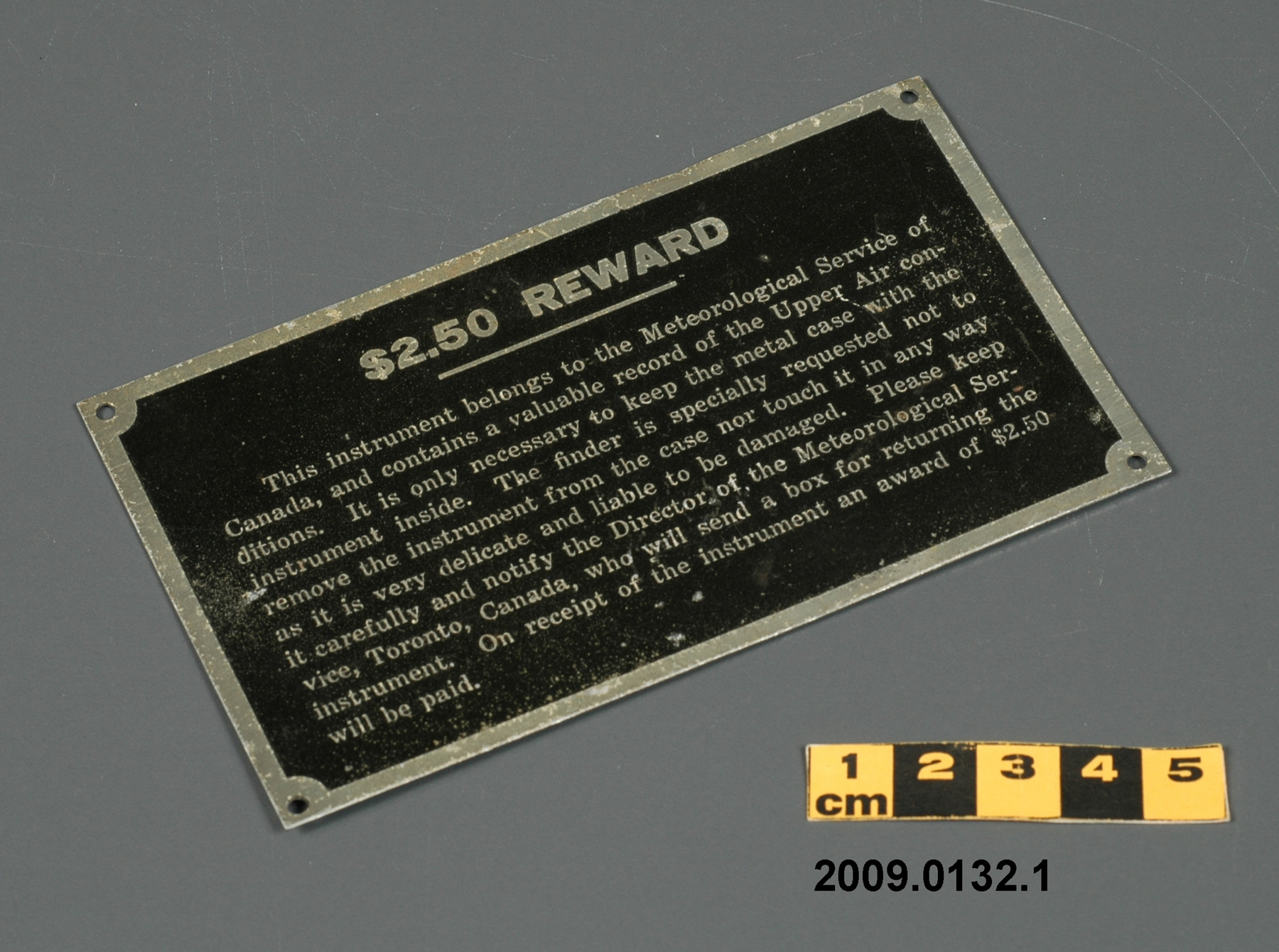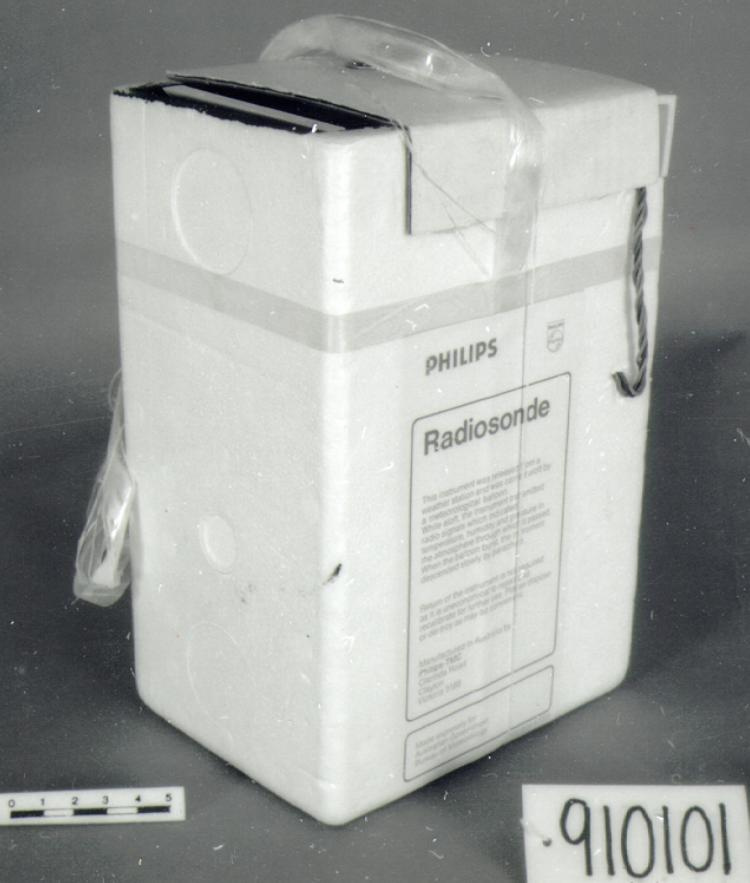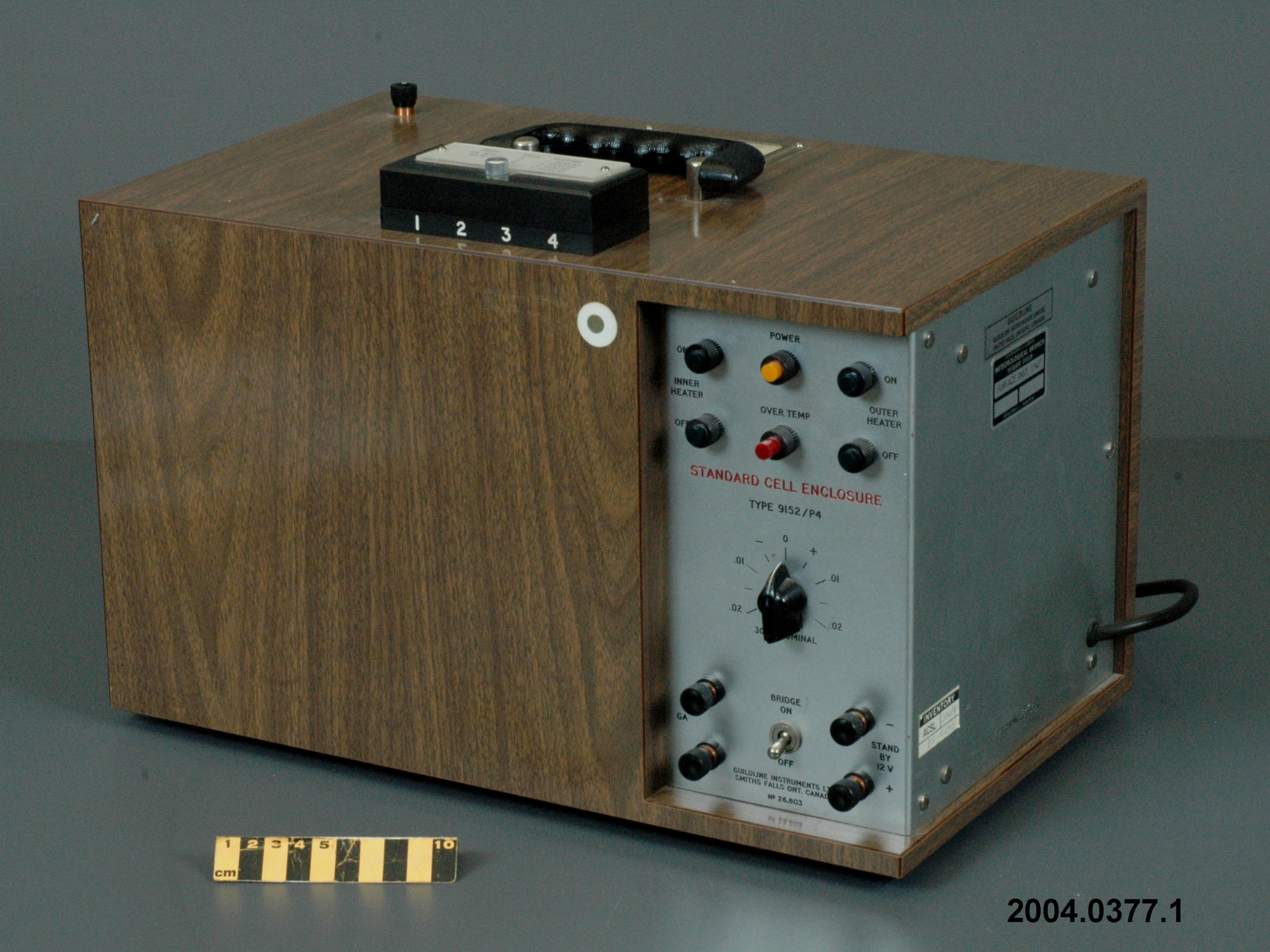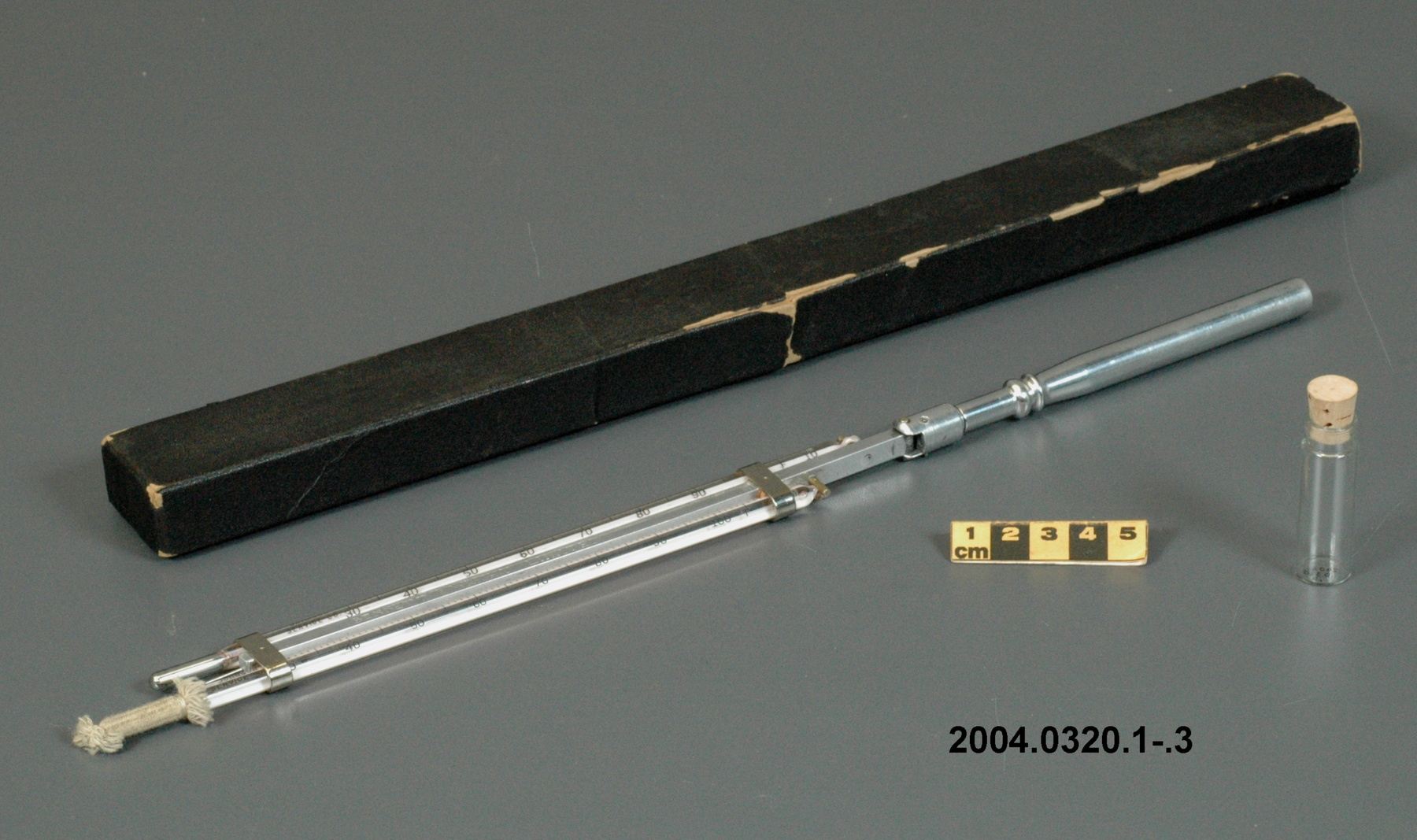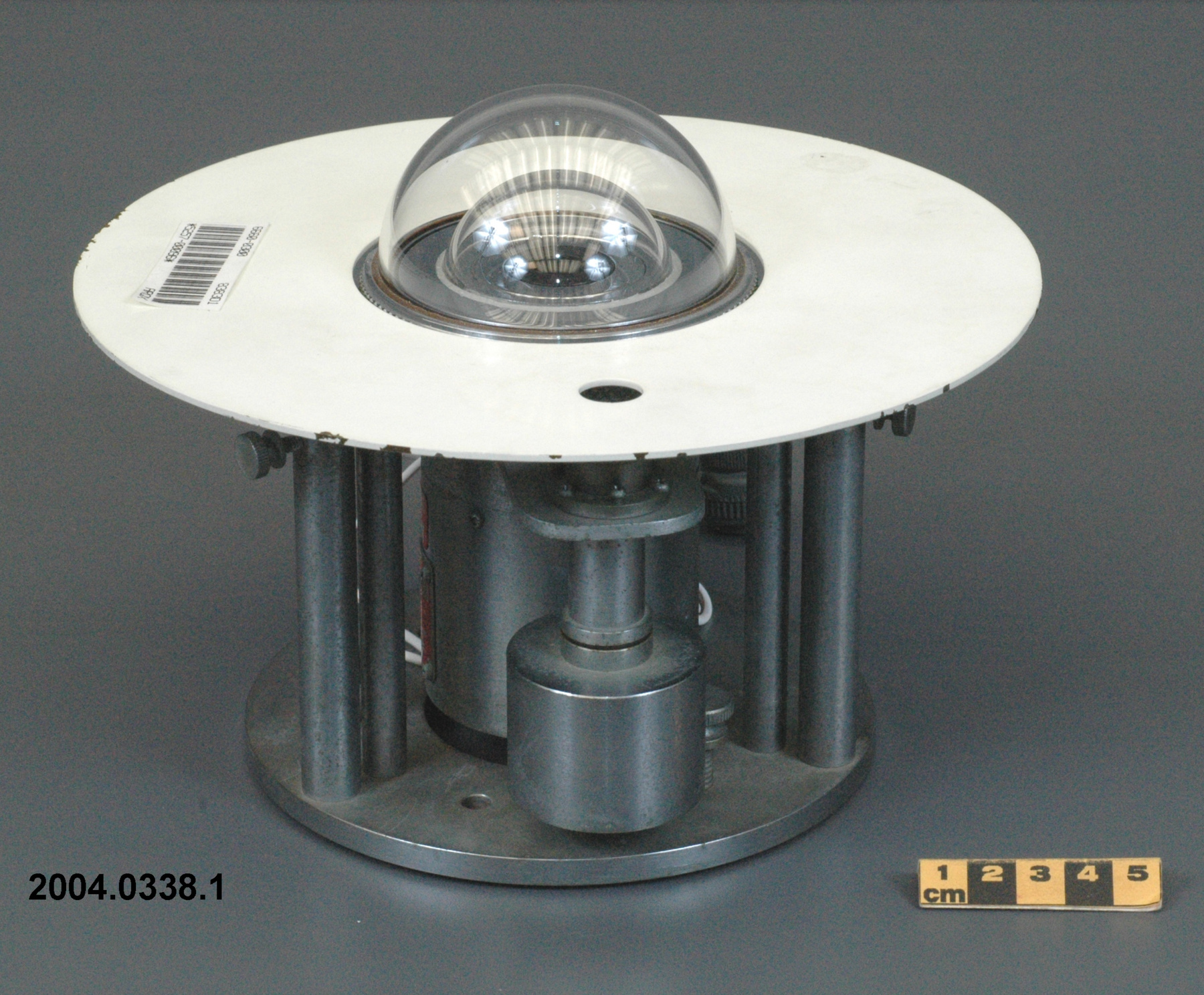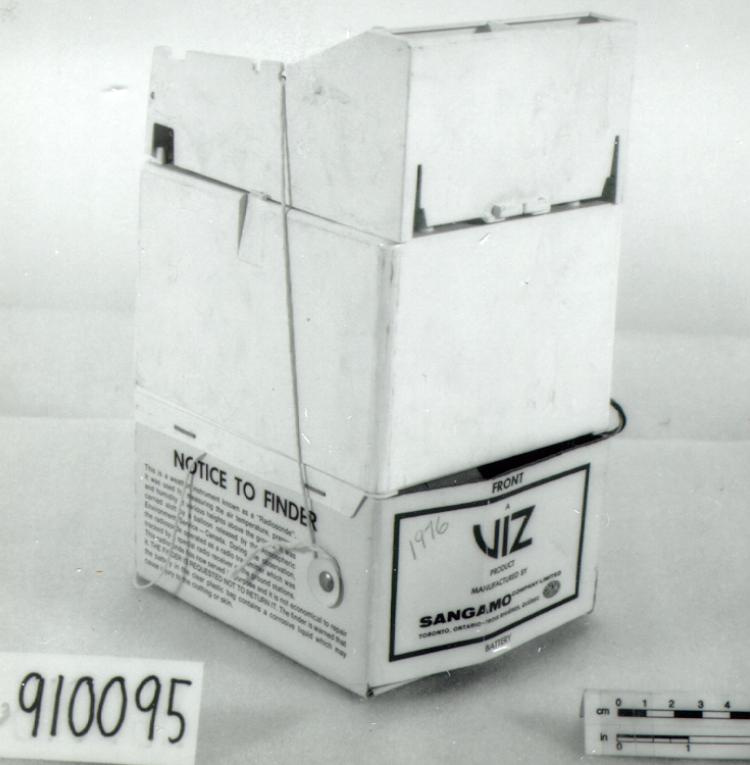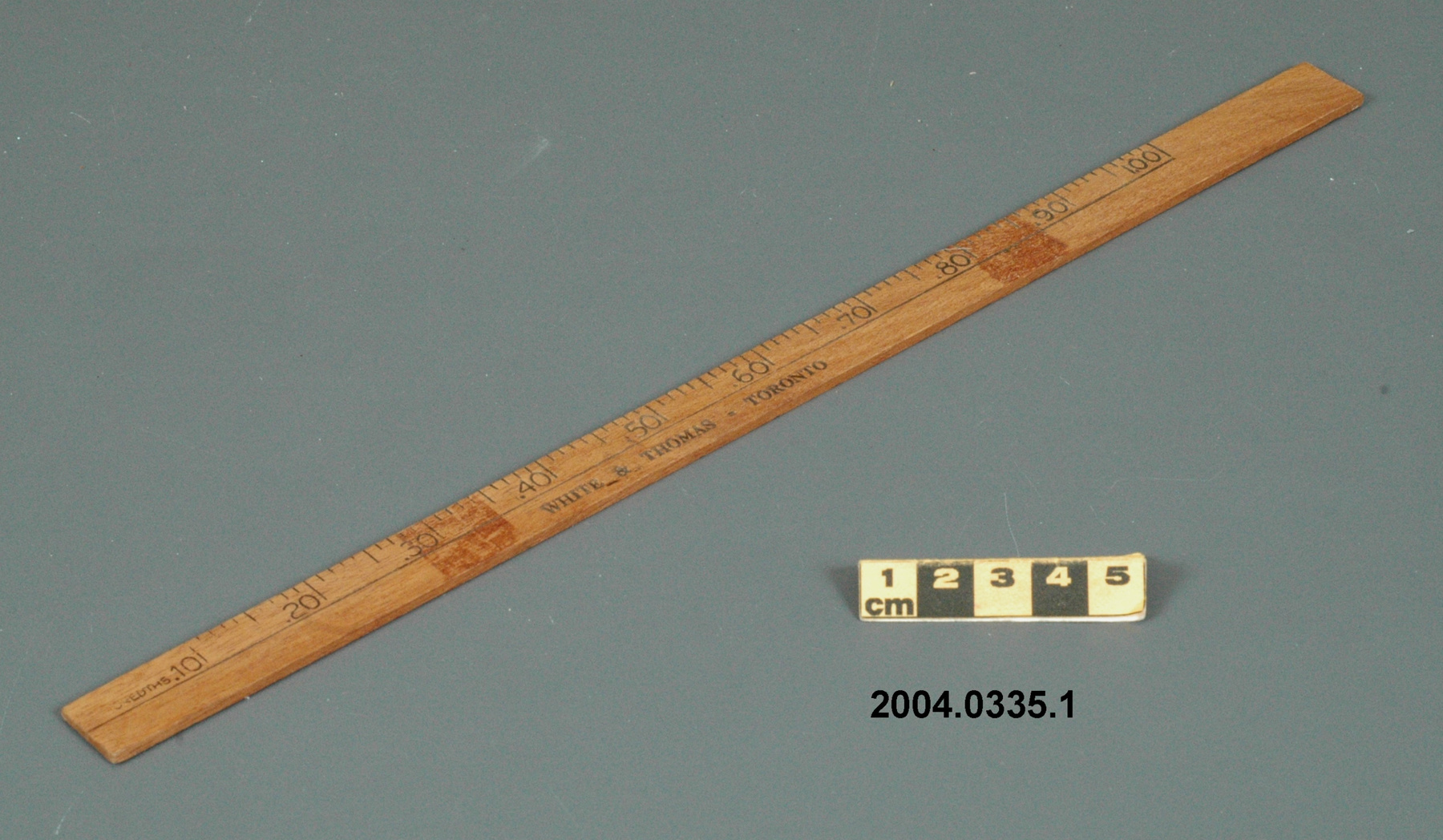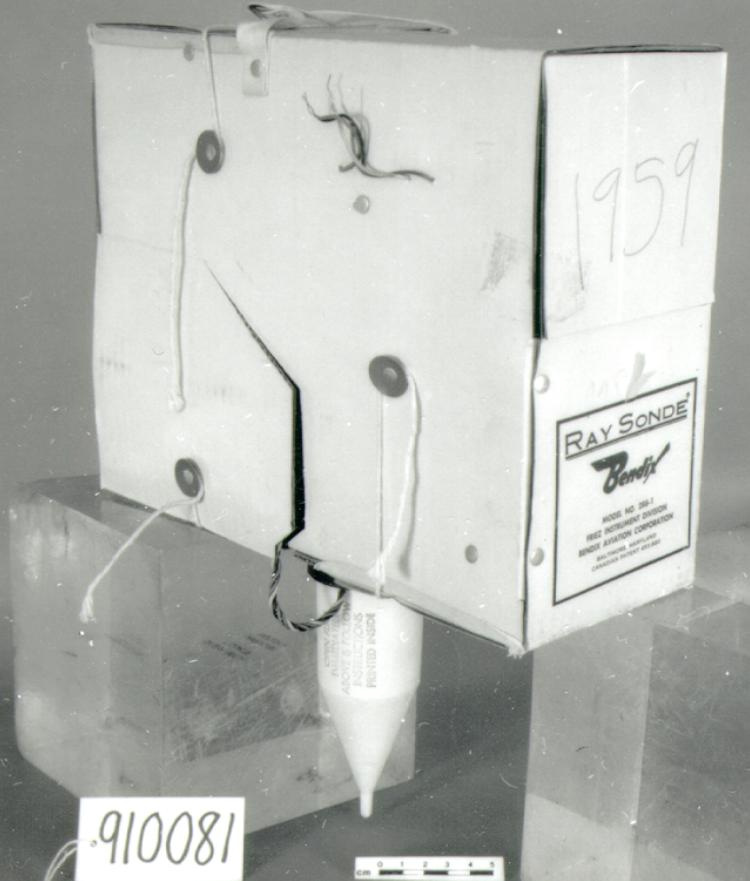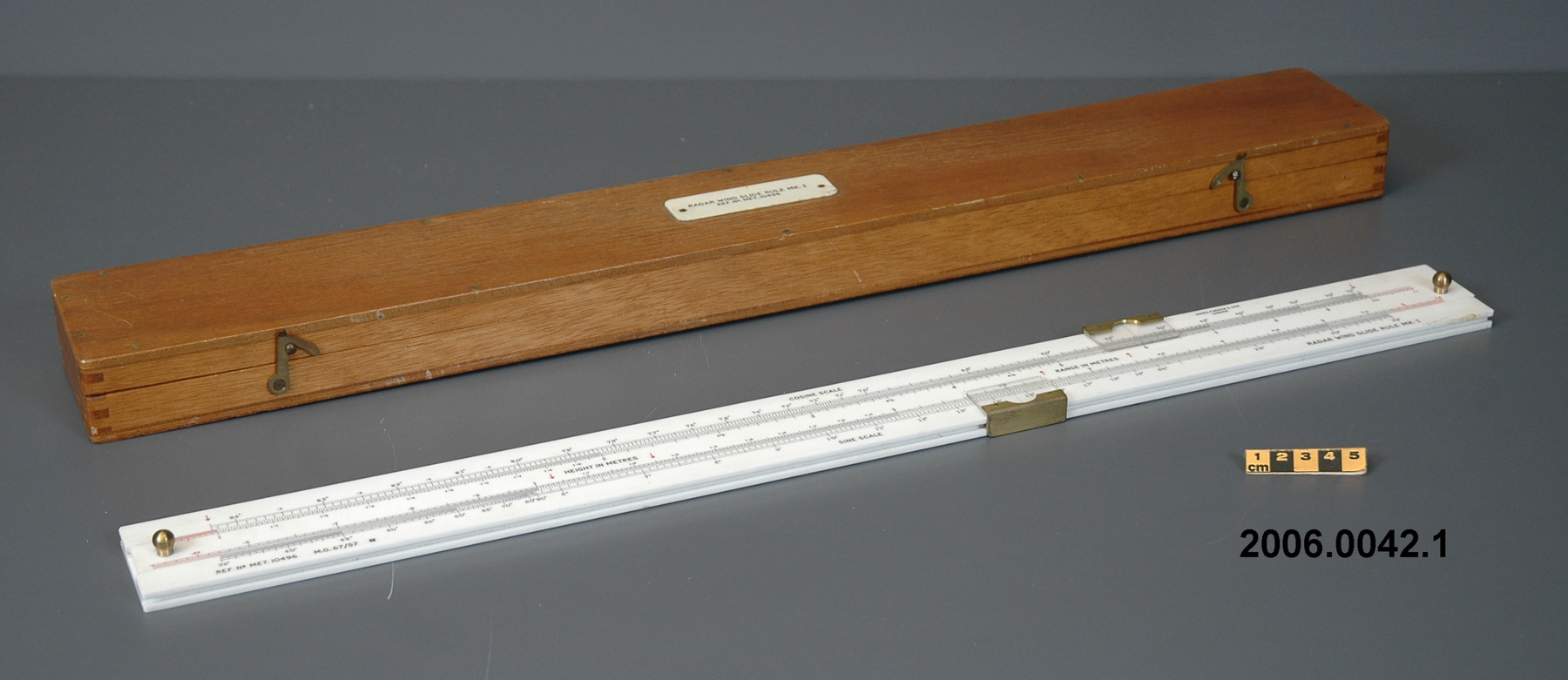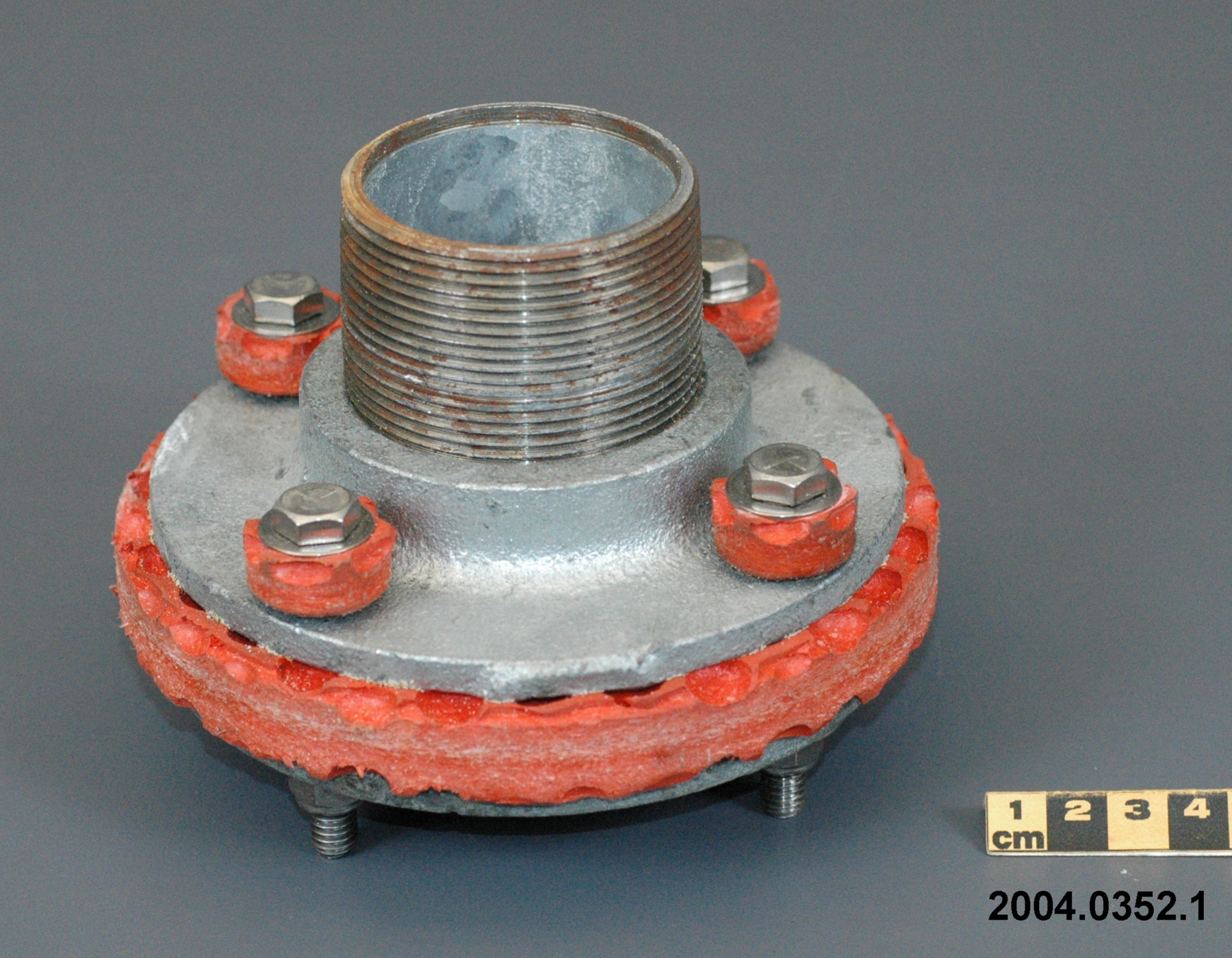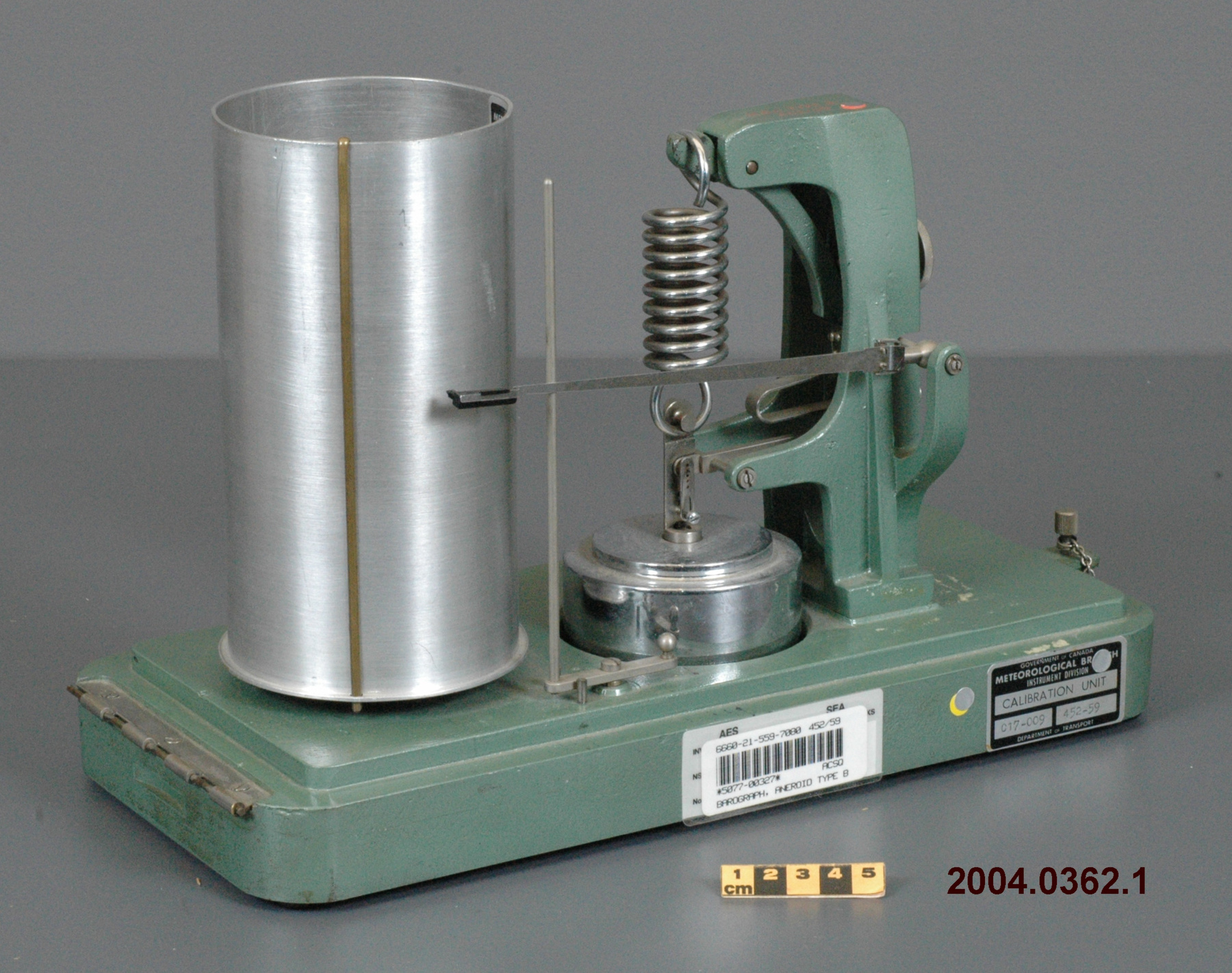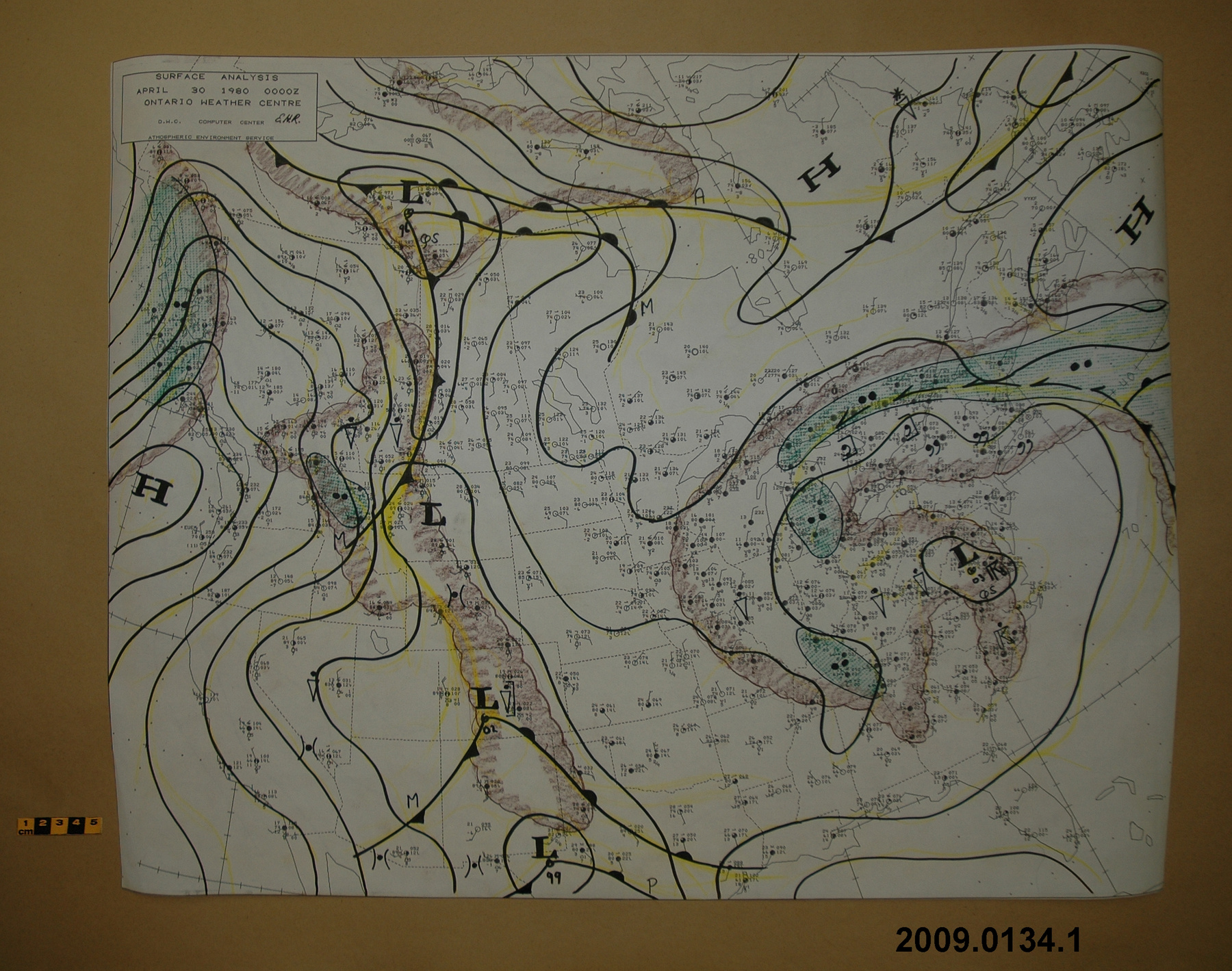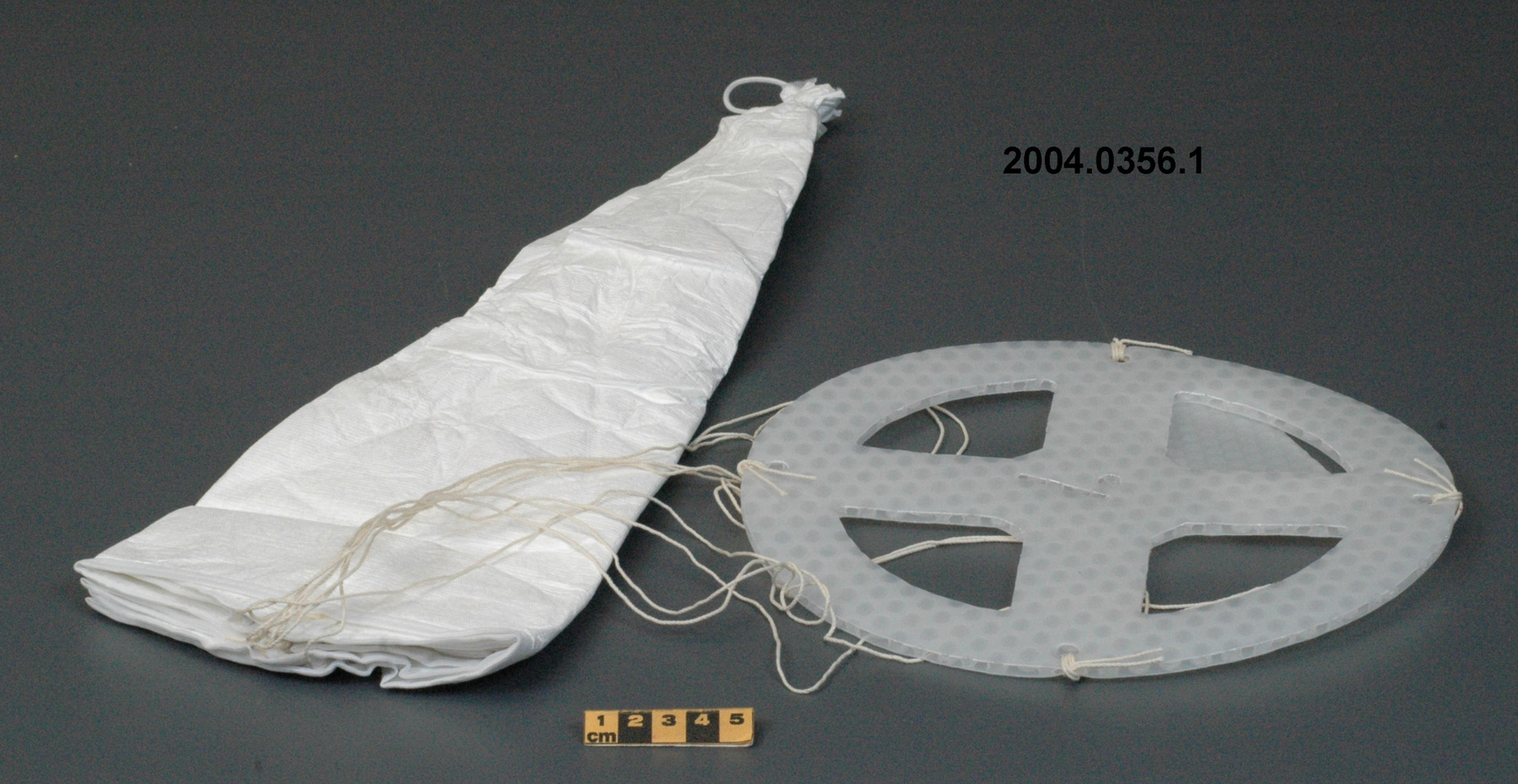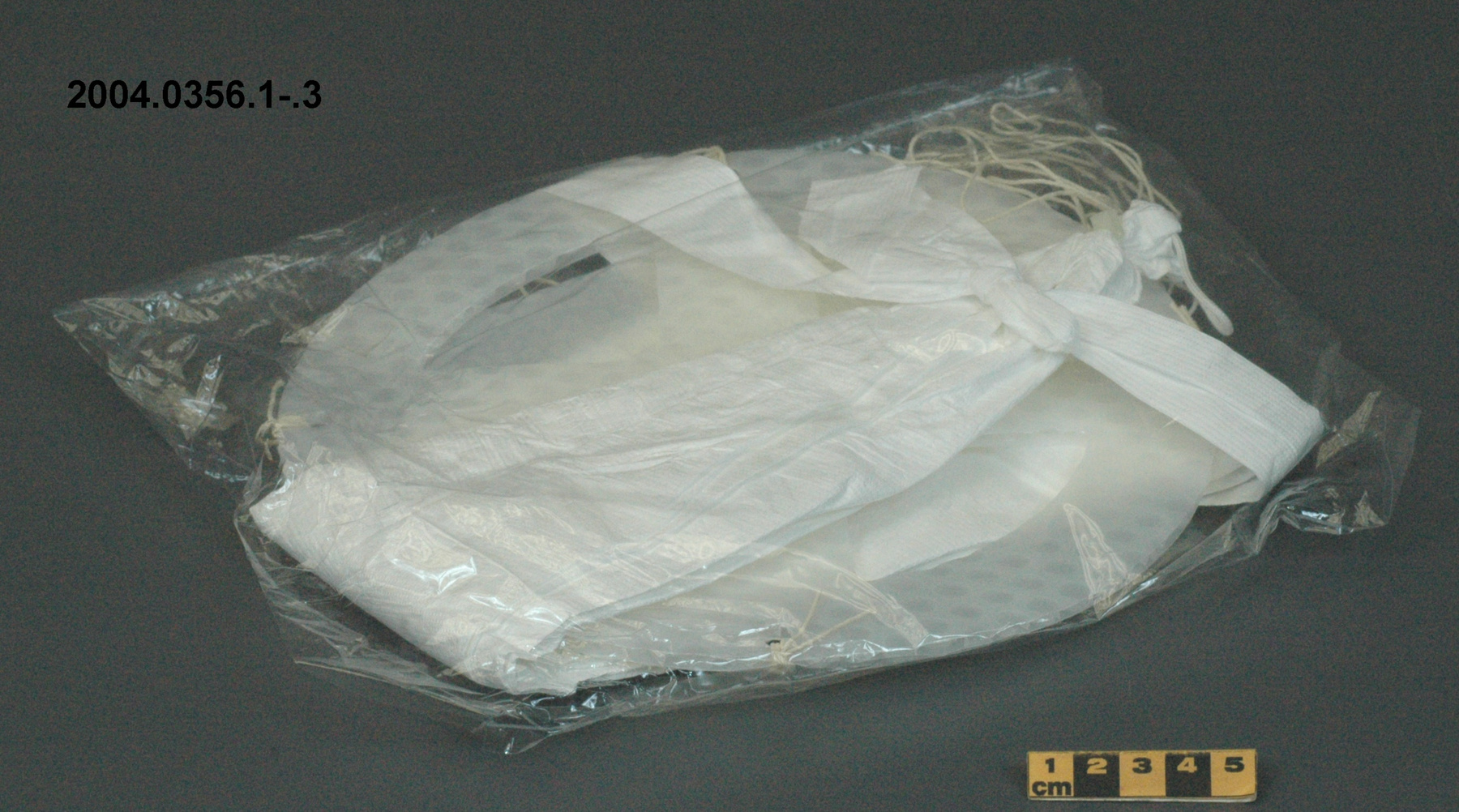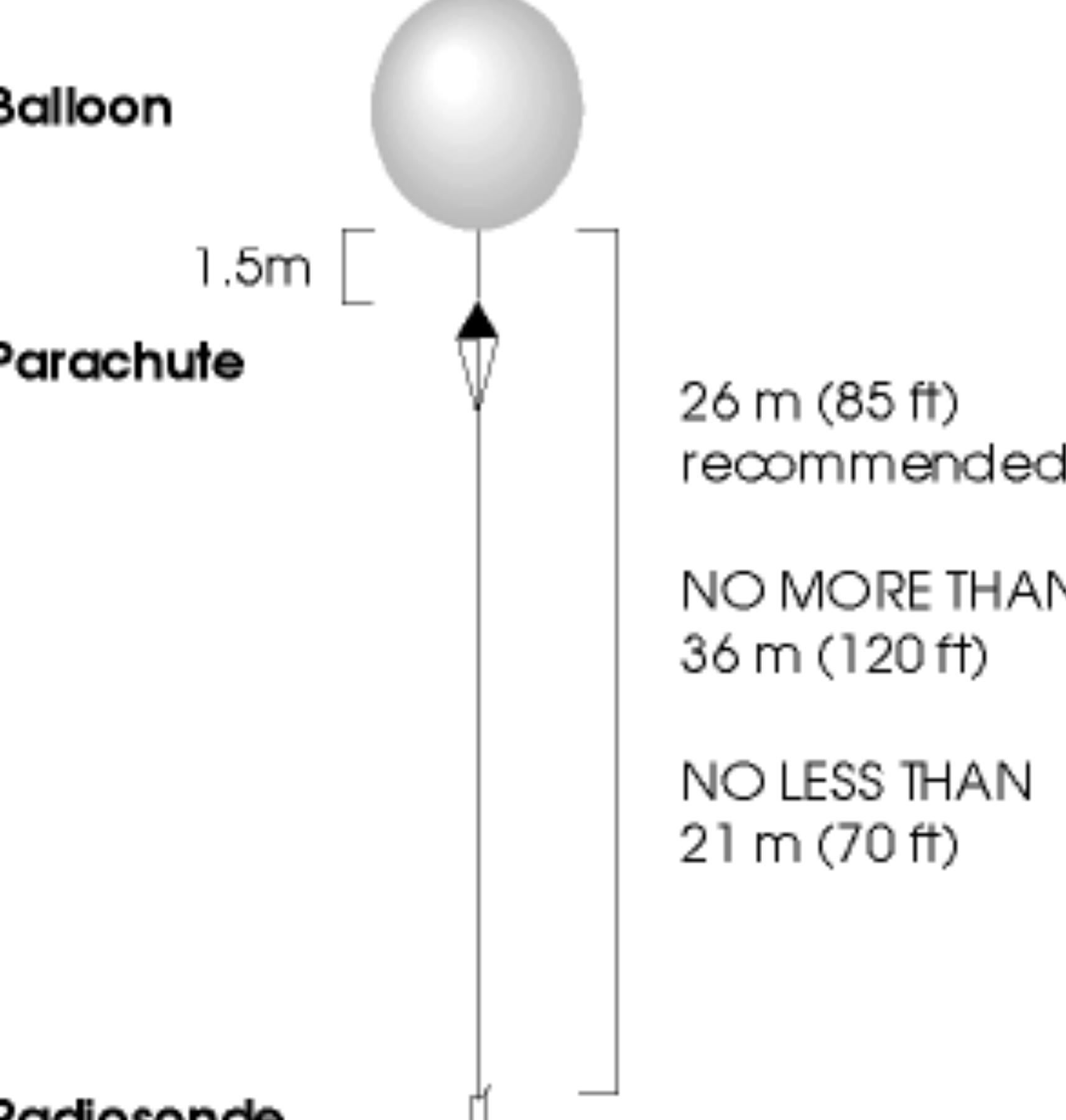Parachute
Utiliser cette image
Puis-je réutiliser cette image sans autorisation? Oui
Les images sur le portail de la collection d’Ingenium ont la licence Creative Commons suivante :
Copyright Ingenium / CC BY-NC-ND (Attribution-NonCommercial 4.0 International (CC BY-NC 4.0)
ATTRIBUER CETTE IMAGE
Ingenium,
2004.0356.001
Permalien:
Ingenium diffuse cette image sous le cadre de licence Creative Commons et encourage son téléchargement et sa réutilisation à des fins non commerciales. Veuillez mentionner Ingenium et citer le numéro de l’artefact.
TÉLÉCHARGER L’IMAGEACHETER CETTE IMAGE
Cette image peut être utilisée gratuitement pour des fins non commerciales.
Pour un usage commercial, veuillez consulter nos frais de reproduction et communiquer avec nous pour acheter l’image.
- TYPE D’OBJET
- radiosonde
- DATE
- 1994
- NUMÉRO DE L’ARTEFACT
- 2004.0356.001
- FABRICANT
- Inconnu
- MODÈLE
- Inconnu
- EMPLACEMENT
- Japon
Plus d’information
Renseignements généraux
- Nº de série
- S/O
- Nº de partie
- 1
- Nombre total de parties
- 3
- Ou
- S/O
- Brevets
- S/O
- Description générale
- synthetic parachute and disk/ cord
Dimensions
Remarque : Cette information reflète la taille générale pour l’entreposage et ne représente pas nécessairement les véritables dimensions de l’objet.
- Longueur
- 71,0 cm
- Largeur
- 23,0 cm
- Hauteur
- S/O
- Épaisseur
- 2,5 cm
- Poids
- S/O
- Diamètre
- S/O
- Volume
- S/O
Lexique
- Groupe
- Météorologie
- Catégorie
- Appareil de levage et de vol
- Sous-catégorie
- S/O
Fabricant
- Ou
- Inconnu
- Pays
- Japon
- État/province
- Inconnu
- Ville
- Inconnu
Contexte
- Pays
- Canada
- État/province
- Inconnu
- Période
- this instrument was apparently in use for ten years (Ref. 6)
- Canada
-
An example of a radiosonde parachute of a type used by the Meteorological Service of Canada. Parachutes are used at seven of the thirty one radiosonde stations in Canada. These are the most southerly stations (Ref. 1). Part of a large collection of meteorological instruments acquired from the Meteorological Service of Canada (previously Atmospheric Environment Service) by the CSTM since 1967. MSC is the government agency responsible for collecting and disseminating meteorological data and forecasts in Canada. It was founded in 1871 in Toronto where it is still headquartered. The MSC was originally on the University of Toronto downtown campus but moved to Downsview in 1971 on land owned by UofT. The headquarters houses laboratories, research facilities and calibration and instrument maintenance facilities (now largely contracted out). - Fonction
-
Used with a radiosonde lifted by balloon into the upper atmosphere. When the balloon reaches a certain level in the atmosphere (usually approx. 30 km), it bursts, causing the radiosonde to fall back to earth, safely suspended from the parachute. - Technique
-
A Viz radiosonde parachute. The parachute reduces the fall rate to reduce any damage to persons or property when they land. The newest radiosondes are very light and the fall rate as they approach the ground is quite low, approaching 5 m/s, according to one source (Ref. 1). The parachute is part of the radiosonde balloon train (see Refs. 3-4): a specified length of cord is tied to the balloon and the top of the parachute; another specified length of card is tied to the bottom of the parachute and the radiosonde itself. The balloon is released and the assemblage is lifted into the air until the balloon bursts, at which time the parachute and radiosonde descend to earth. While the balloon ascends (about 90 minutes), the radiosonde takes readings of the temperature, pressure and humidity which are transmitted to a ground station for analysis (Refs. 2-3). - Notes sur la région
-
Inconnu
Détails
- Marques
- small blue label with white lettering reading 'Made in Japan'
- Manque
- appears complete
- Fini
- white
- Décoration
- S/O
FAIRE RÉFÉRENCE À CET OBJET
Si vous souhaitez publier de l’information sur cet objet de collection, veuillez indiquer ce qui suit :
Fabricant inconnu, Parachute, vers 1994, Numéro de l'artefact 2004.0356, Ingenium - Musées des sciences et de l'innovation du Canada, http://collection.ingeniumcanada.org/fr/id/2004.0356.001/
RÉTROACTION
Envoyer une question ou un commentaire sur cet artefact.
Plus comme ceci
